
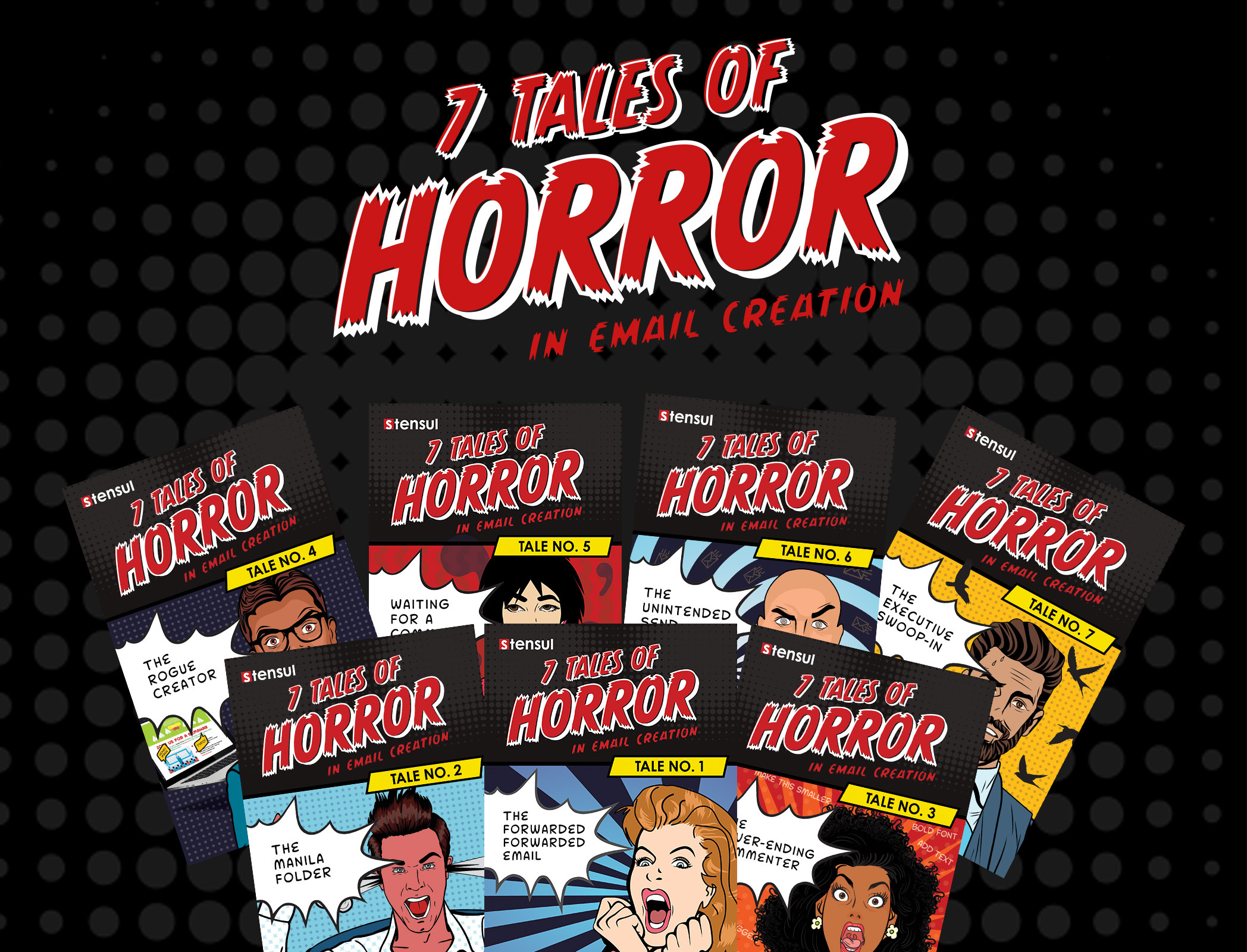
Email’s ability to produce marketing and sales results is unmatched. It is unique in hunting down prospects, and there’s nothing better when it comes to nurturing and converting leads to sales. A typical 4,200% ROI confirms that.
Yes, email is astounding. No doubt, as a marketer or marketing operations person, you’ve heard – and likely told – many tales of how email produced eye-popping results. What doesn’t get told with near the frequency are gut-wrenching tales of horror that happen during the email creation process – that space between an email brief and deployment.
Lots of nightmare-producing moments have occurred in that space. Such tales of horror need to be shared with folks like you. The reason isn’t to frighten you but to help you learn how to avoid the most nerve-wracking email creation horrors forever.
Each of our 7 Tales of Horror in Email Creation offers a real-world experience that drove the calm to be crazed. Read them for more restful nights and, more importantly, easier to manage days, and be sure to come back for more. Better to be smart than scared when it comes to email creation, as far as Stensul is concerned.
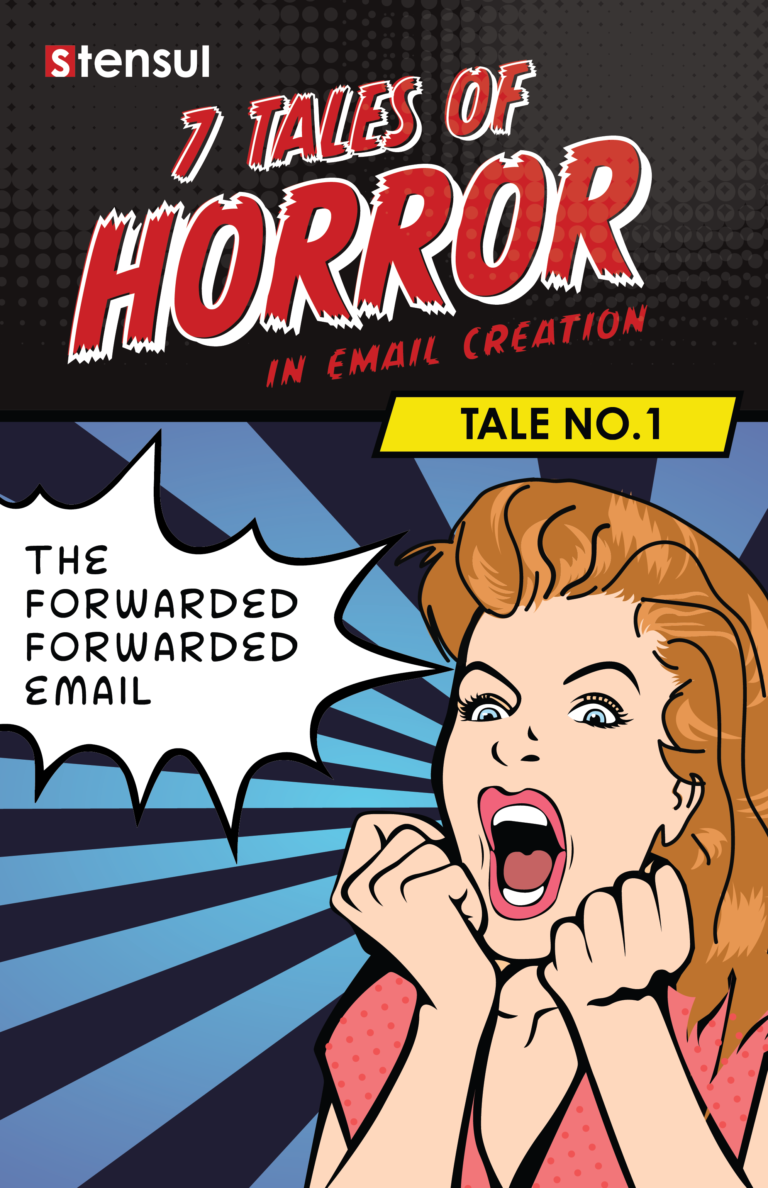
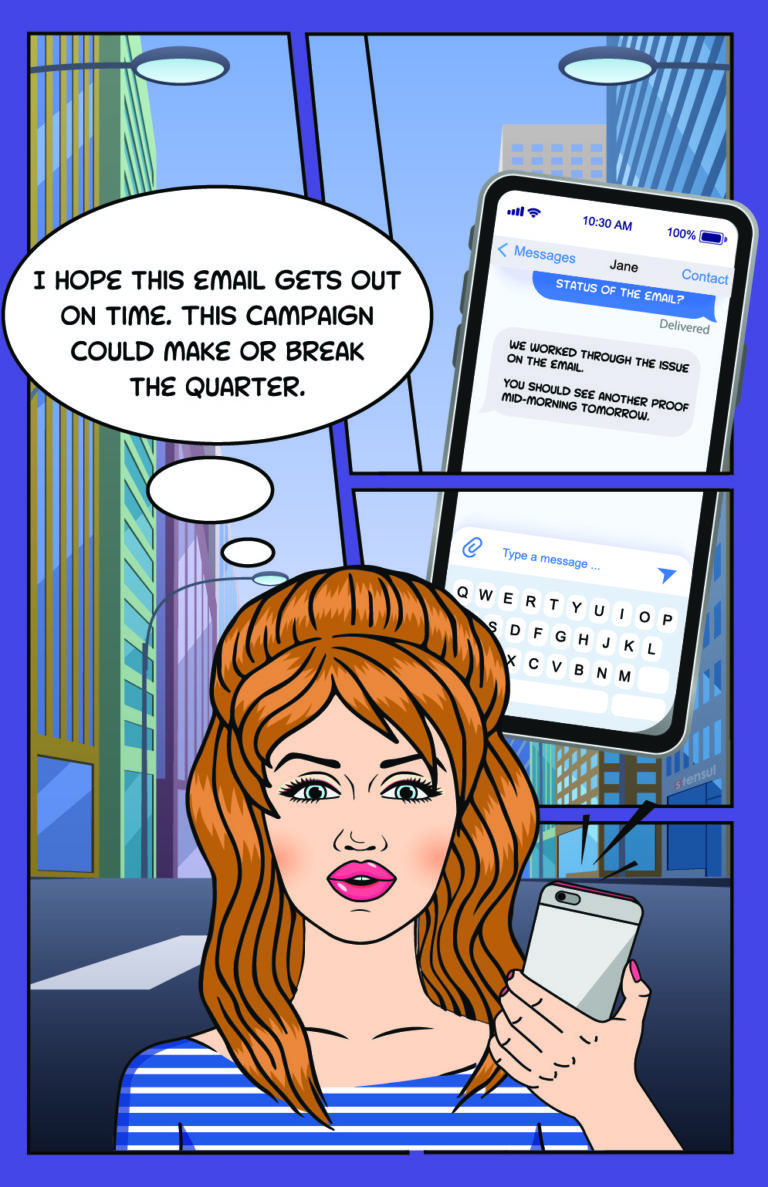
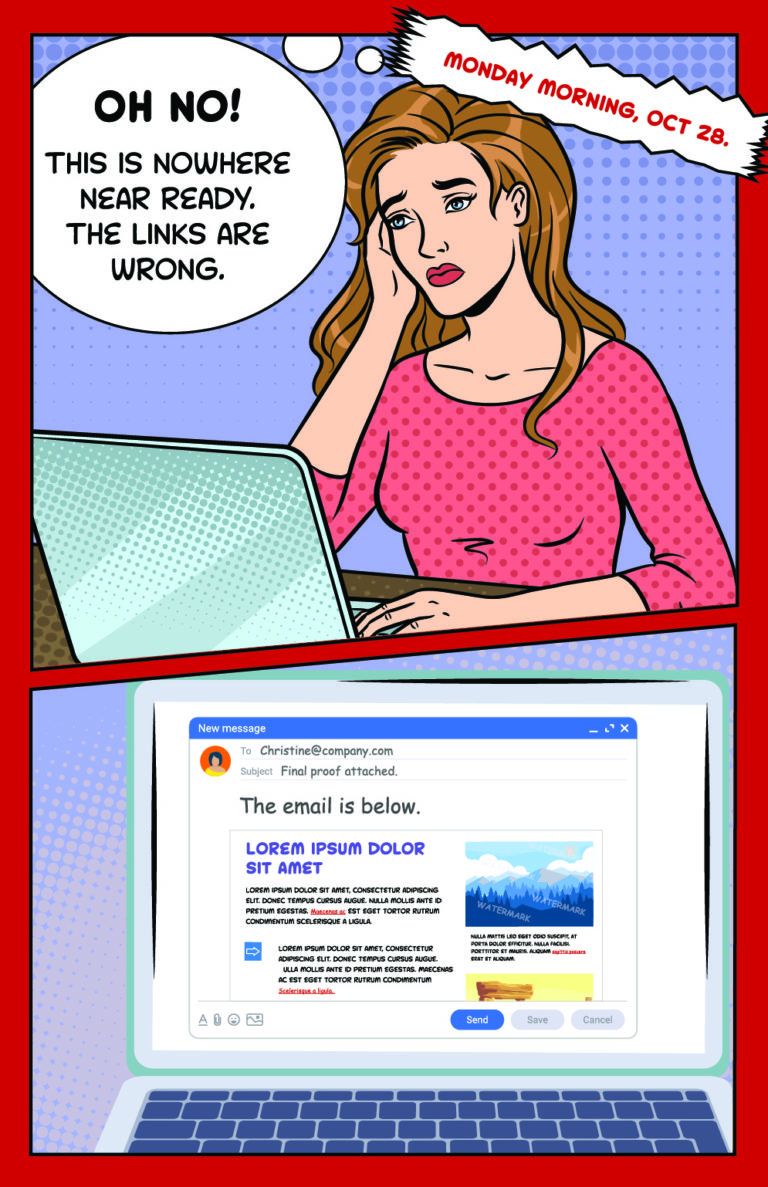
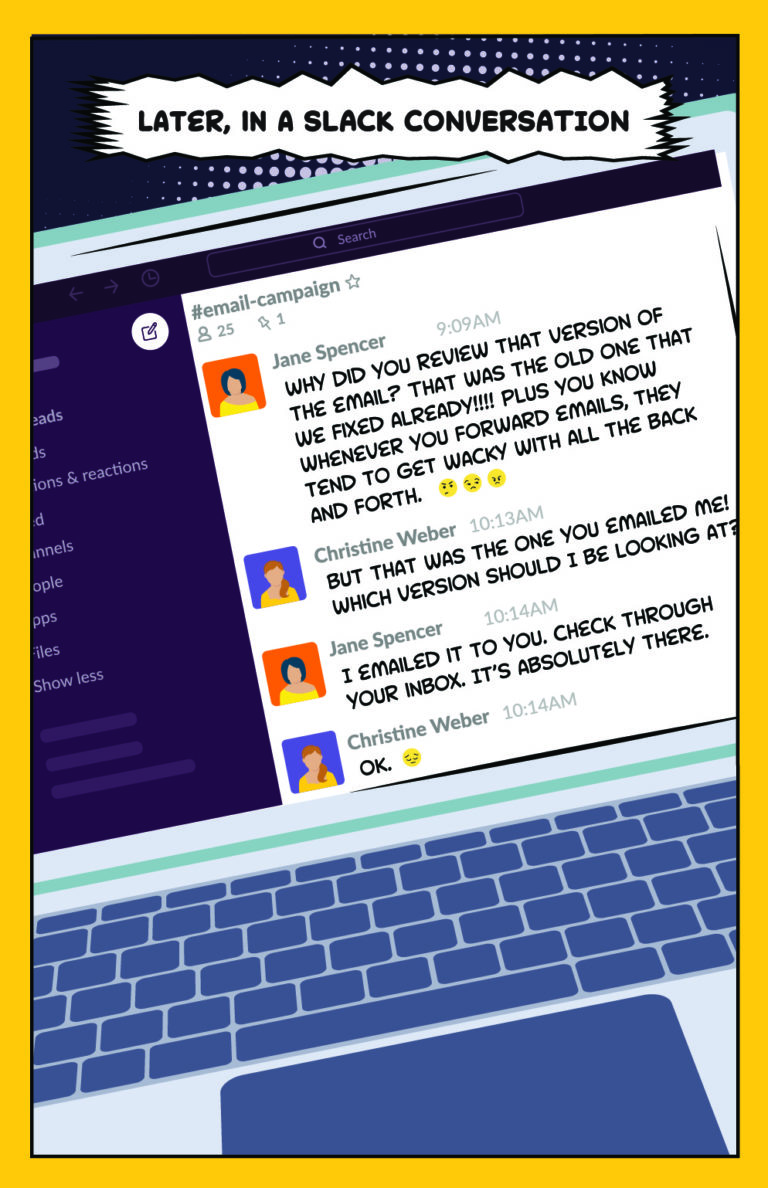
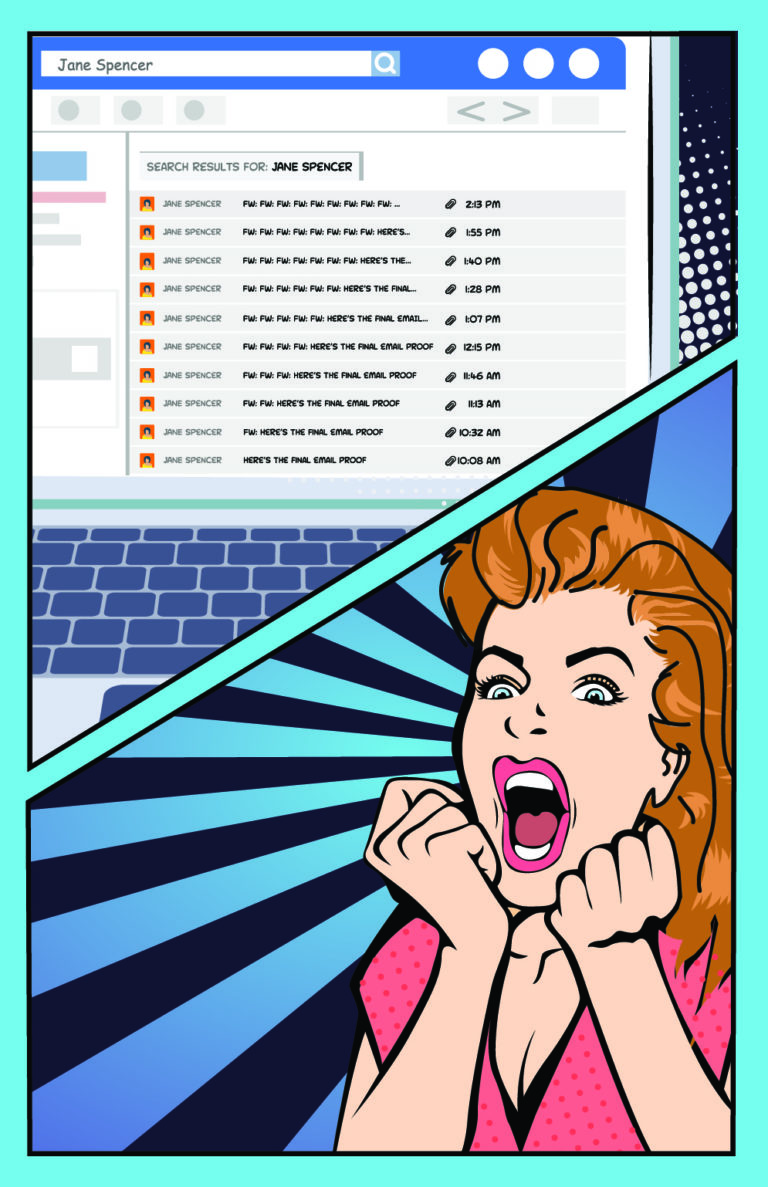
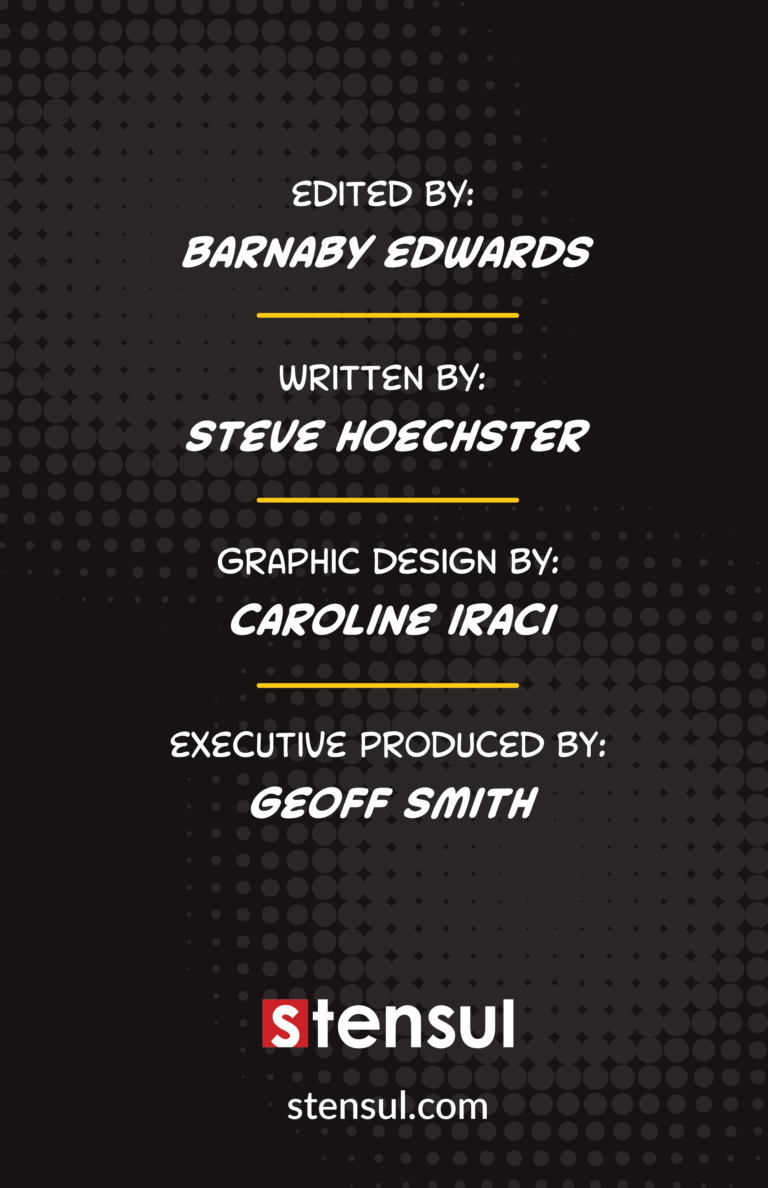
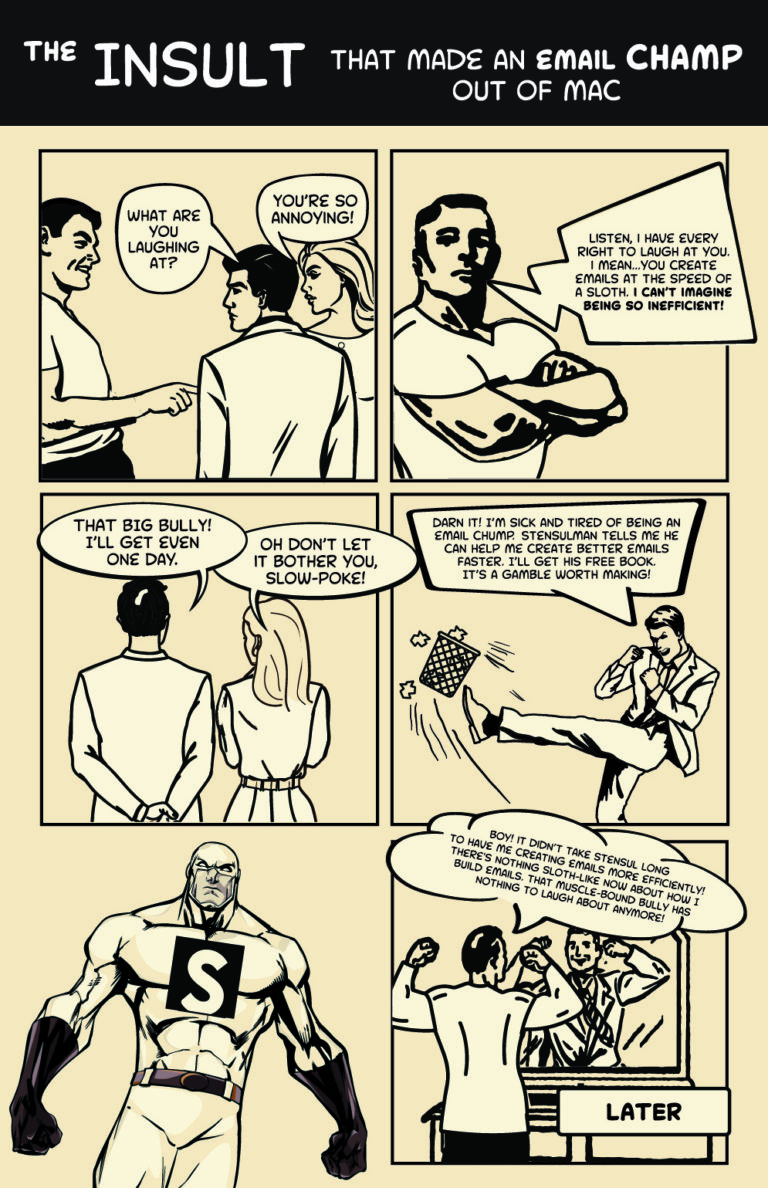
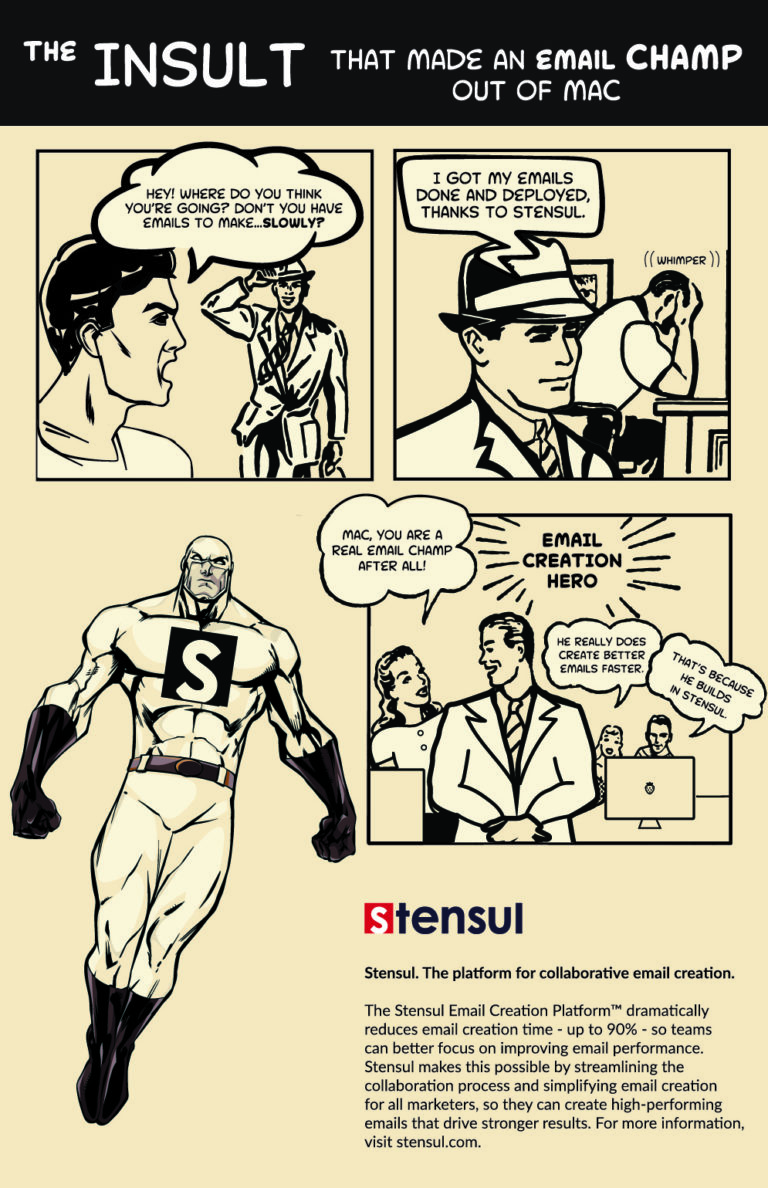
It’s cloudy in New York. The sky has a decidedly ominous look to it. Christine is walking on a once-again-crowded sidewalk to get to her company’s office, where she’s the Director of Digital Marketing. She’s feeling good and anxious simultaneously, mainly because of a text message she got last night from Jane, a member of her team coordinating the email review & approvals process.
The message read: We worked through the issue on the email. You should see another proof mid-morning tomorrow.
Not just any email. The email kicks off a new marketing effort that everyone is counting on to make the goals for the current quarter. As Christine navigated the sidewalk filled with others who, like her, had RTO’d (returned to the office), she was glad to know she and her team were one step closer to getting this crucial email done when it had to.
At 10:20 am, a soft bling sound emits from Christine’s computer, alerting her to the arrival of a new email. She looks at the inbox and sees it’s the email proof.
Christine opens the email and scrolls down to look at the email proof placed in the body of the email. She peers at it and says, “okay, we’re almost home,” and reviews the material carefully, looking at every aspect of this digital communication.
Christine realizes this email is nowhere near ready. Things need to be fixed. After typing a series of instructions, she emails the proof back to Jane.
Moments later, her Slack icon bounces. It’s a message from Jane. She asks, “Why did you review that version of the email? That was the old one that we fixed already!!!!! Plus you know whenever you forward emails, they tend to get wacky with all the back and forth.”
Distressingly, this wasn’t the first time a review of the wrong version occurred while readying an email at Christine’s company. Proofs were inserted into a handful of emails and sent to different individuals in the review and approval process. The threads of these emails got frighteningly long with changing commas to periods, fixing grammatical errors, and inserting the latest company logo. Because various people reviewed the various revisions at various times, the proof versions were labeled haphazardly. Little was done synchronously.
Finding the latest version – the proof that Christine hoped was the definitive “final final” – took a headache-inducing amount of time. Emails had to be sorted through, proofs re-examined, timestamps on those emails needed to be compared. Contradicting comments had to be evaluated.
The ominous sky over New York that morning was an omen Christine overlooked. The endless forwarding of emails with proofs that were forwarded and then forwarded again caused the campaign kick-off email not to be issued as planned. The dominos of the multi-faceted campaign fell one by one as a result. Not surprisingly, the company missed the quarter’s goals. You don’t want to know what happened next.
Christine and her team are not alone. Many experience this tale of horror unnecessarily. The overwhelming majority of companies create emails today the same way as in the 1990s. Emails are typically created by specialists using single-purpose tools, working in silos. That’s why 80% of all brands take two weeks or more to get one email out the door. Much of that time is taken up by endless back-and-forth in the email review and approval process – the curse of the forwarded email.
Christine and her team didn’t have to suffer this email creation horror.
They could have put a Stensul Email Creation Platform™ at the center of their email creation process. It provides a single environment that brings together all involved to streamline collaboration and simplify email creation.
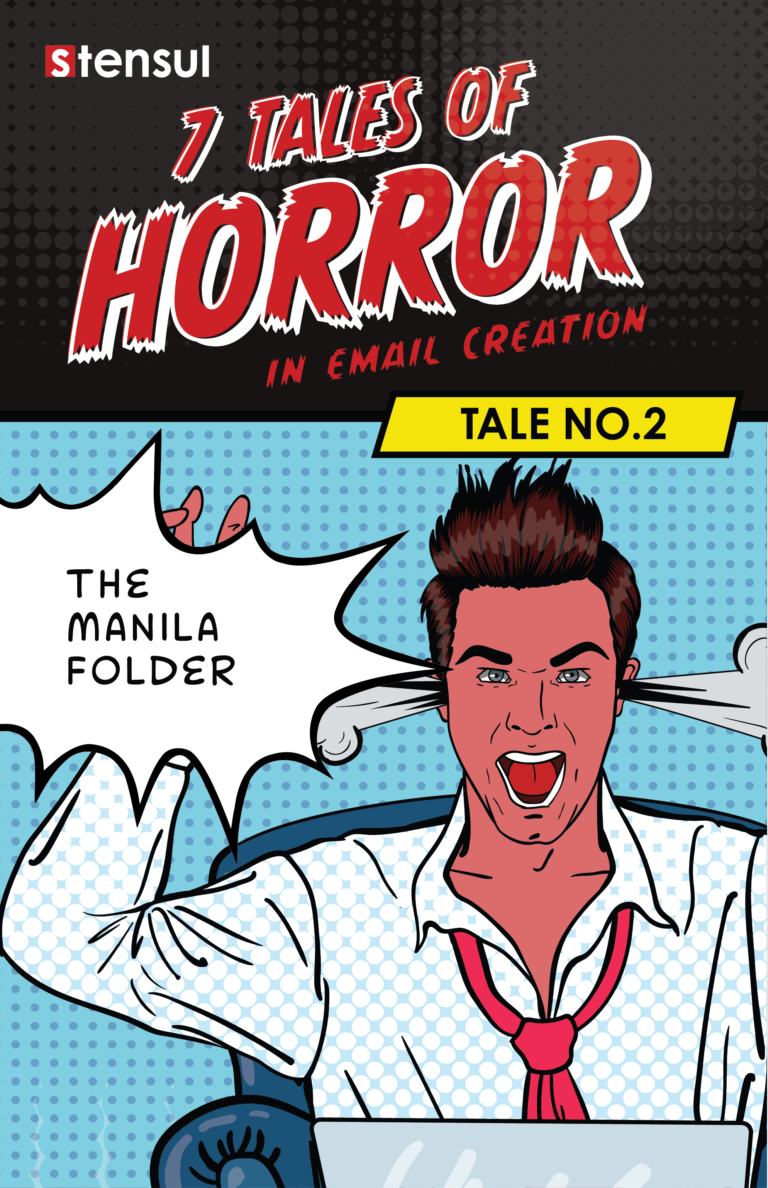
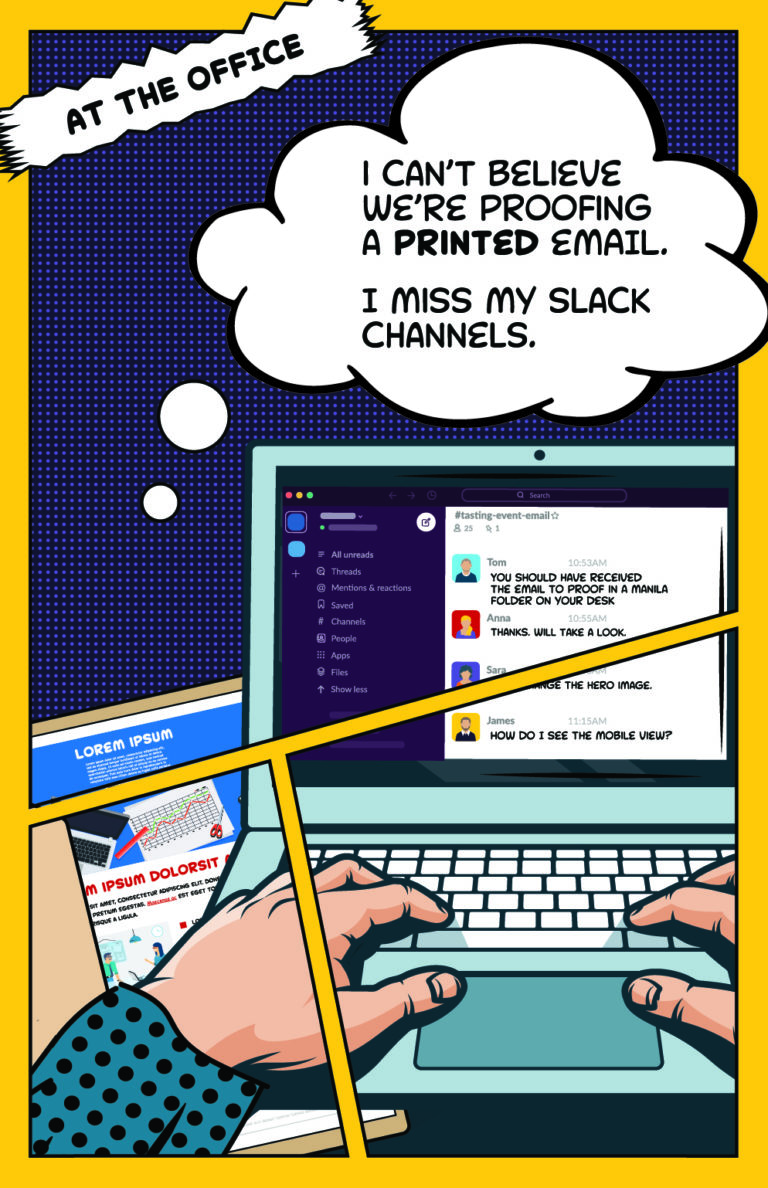
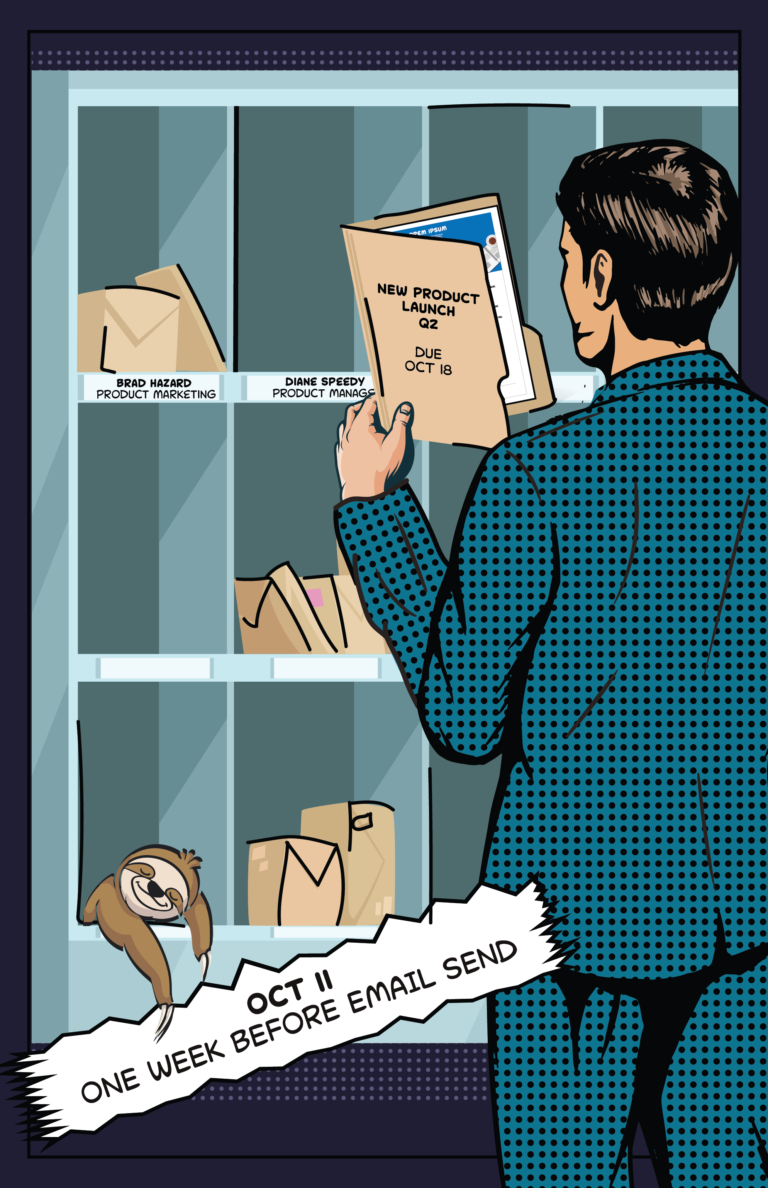
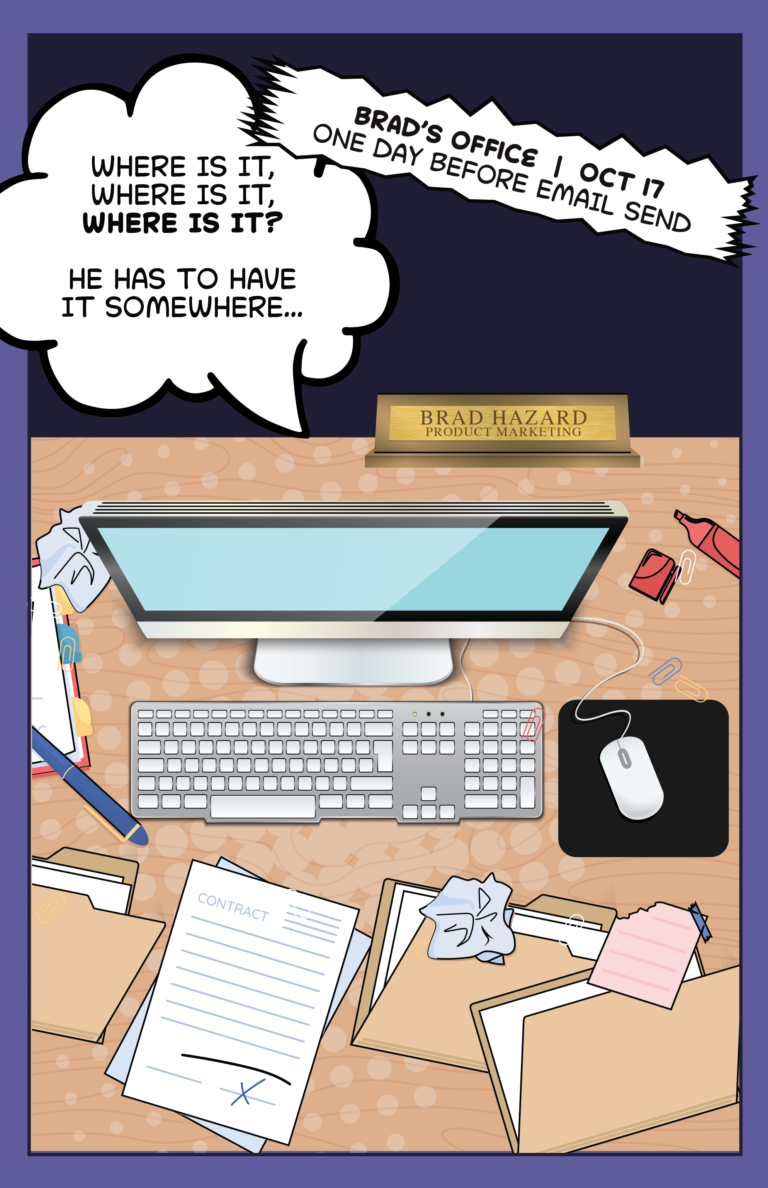
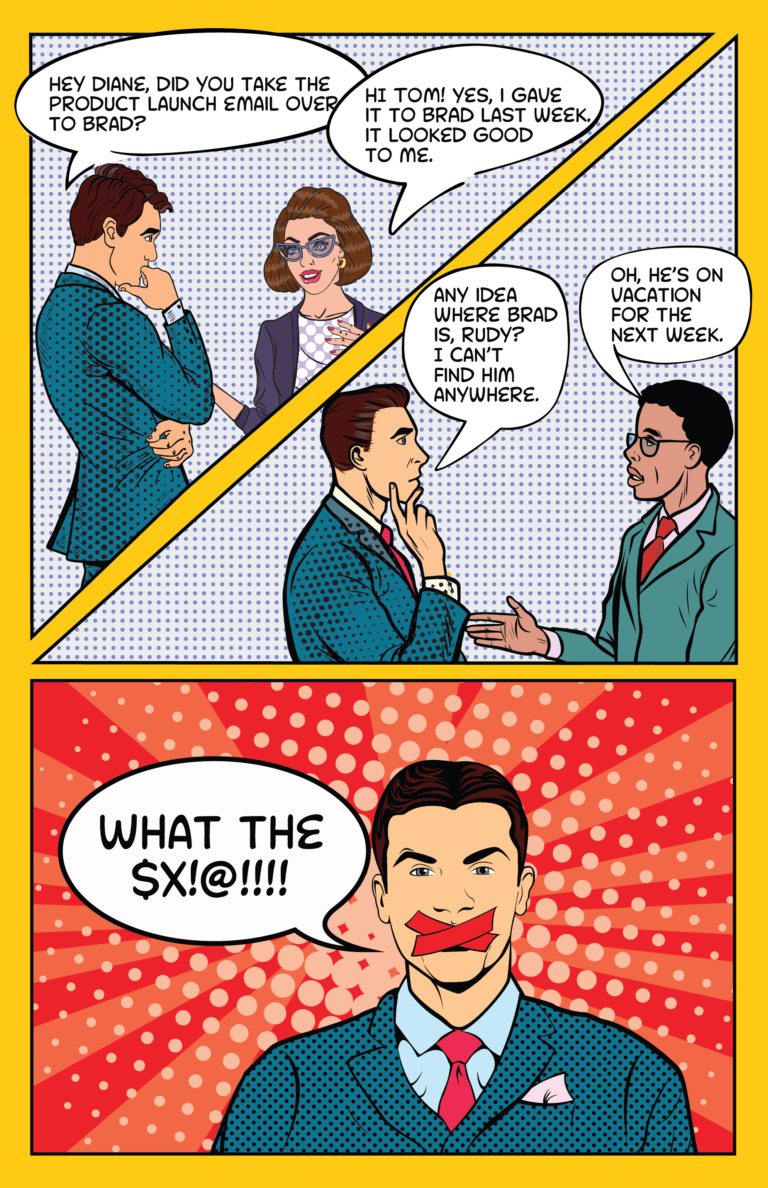
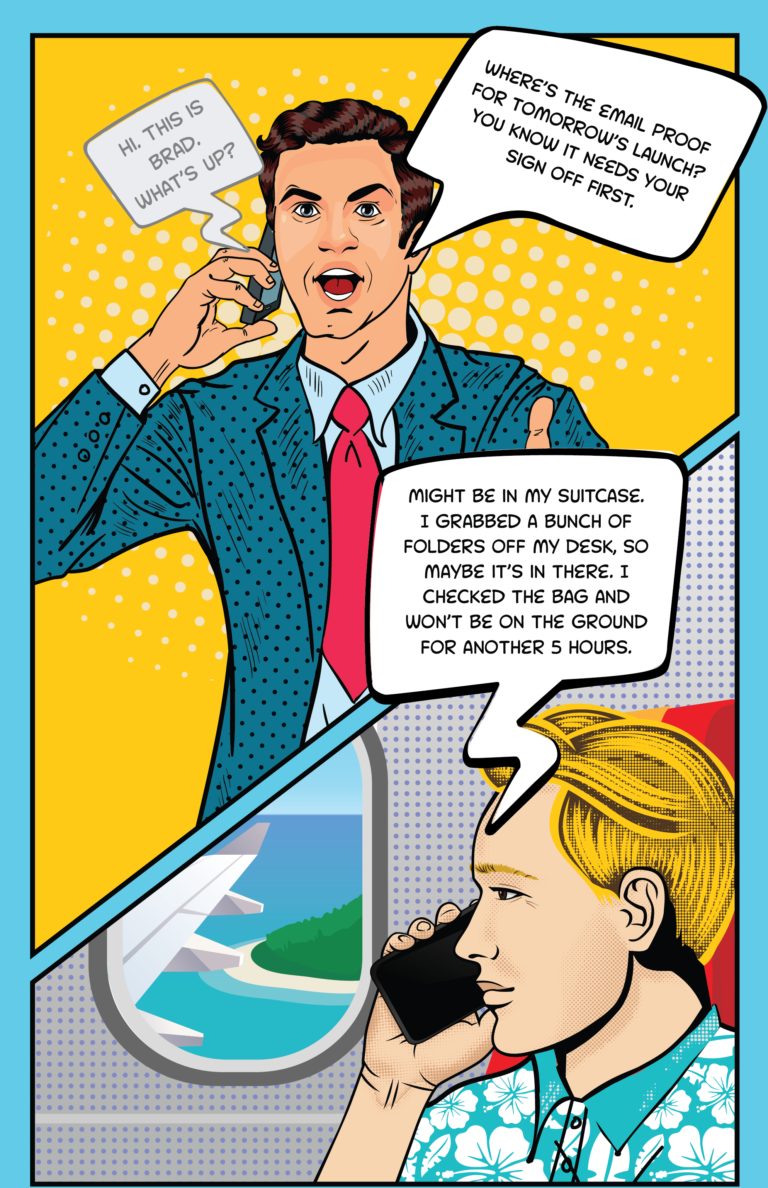




Tom doesn’t hesitate. If you ask, “are you glad to be back in the office?” he’ll answer quickly, “absolutely yes!”
Tom was glad to be in the office of the growing SaaS company, where he’s the email marketing manager, because he genuinely likes people. Starting up a conversation about an email program while grabbing a cup of coffee in the kitchen is so much better than working from home (WFH), in his view.
When everyone was WFH, he showed his inventiveness – and appreciation for innovation. He created channels on the company’s Microsoft Teams messaging platform for each email workflow. Whether it was lead gen, product announcements, or virtual events. Each person needing to review a particular email proof was a member of that particular channel.
Was it kind of kludgey? It was, but Tom made it work – even if it meant more work for himself. Emails need to be created and sent.
Back in the office, “they” decided on an email proof review method used since the late 1990s.
That method was called The Manila Folder. Just mentioning those words brought tension to Tom’s face. Thinking about it, he became a bundle of nerves crackling with anxiety.
The Manila Folder method involves an email proof being placed into one of those cream-colored sleeves of cardboard-like paper, a routing slip stapled to the front cover, to then be physically moved to the person’s desk at the top of the slip and onto the others.
As the email marketing manager, Tom often saw to it that the folder moved along its review route. The folder didn’t come with a pop-up that appeared on a display screen to remind you to review the proof. It didn’t indicate who had already seen it or what comments or edits were made.
There was one incident with The Manila Folder that most remember but prefer not to. It’s why Tom came to despise The Manilla Folder and everything about it.
Those who were there cautiously suggest Tom transformed from an immensely likable, cooperative guy into a growling, angry man. Think of the mild Dr. Bruce Banner becoming the green rage machine known as The Hulk.
It was the last day possible for reviews of the email promoting a special new product briefing for customers and targeted prospects. It had to be readied for deployment or there wouldn’t be enough time to build attendance. What’s more, Tom took pride in meeting deadlines consistently.
He looked for Brad, a Product Marketing Director central to this event. Brad’s desk was a mess. Papers and folders – manilla folders – were strewn across it. Tom sorted through them, never finding the one containing the email proof.
Maybe it hadn’t gotten to Brad. He knew who preceded him on the routing slip and strode to Diane’s workspace. Tom asked her if she had reviewed the email proof more forcefully than intended.
Diane looked up at Tom, wondering where his apparent anger was coming from, and said, “Sure. I reviewed it last Tuesday and walked it over to Brad.”
Tuesday?! That was almost a week ago. Where was Brad? More importantly, where was The Manila Folder with the email proof?
Tom went to the all-knowing Rudy, the combo office manager-receptionist. He asked, “Rudy, do you happen to know if Brad is in the office?
Rudy looked up quizzically and said, “He’s on vacation. Brad was on the road conducting customer interviews in California. Since he was close, he opted to take a few days of PTO. If I’m reading his travel itinerary right, his plane to Hawaii just took off.”
Tom was beside himself. In desperation, he dialed Brad. He muttered, “Come on, come on. Pick up, pick-up.”
“Hi there, Brad Edwards here. How may I help you?” spoke an obviously relaxed Brad.
Tom screamed into the phone, “How can you help me? Help me!? By telling me where the email proof is for your event!”
“Hey, Tom, great to hear from you. How’re things in New York,” Brad said.
“Are you kidding me!?” Tom shouted. “Where’s the email proof?”
“No idea, Brad wondered. “Might be in my suitcase. I grabbed a bunch of folders off my desk before I left the office. Can’t say if I have it. I checked the bag and won’t be on the ground for another 5 hours.”
At that point, Tom just lost it. Completely.
This tragic tale reflects the contradiction that is email creation in 2022. Tom’s appreciation for innovation was not shared by others, especially regarding the review & approval of email proofs. The aim is to create a digital communication, yet so much of it is manually accomplished by specialists using single-purpose tools operating in silos.
Even when collaborative technologies are ubiquitous, many companies, like Tom’s, print out an email proof and route it in the same way that a birthday card for a team member gets signed by their colleagues in a Manila Folder.
Tom, or anyone in his company, didn’t have to suffer this email creation horror.
They could have put a Stensul Email Creation Platform™ at the center of their email creation process. It provides a single environment that brings together all involved to streamline collaboration and simplify email creation.
If this tale of horror in email creation strikes a little too close for comfort, let Stensul show you how to reduce your email creation times by up to 90%, so your review & approval process is quick, easy, and effective.
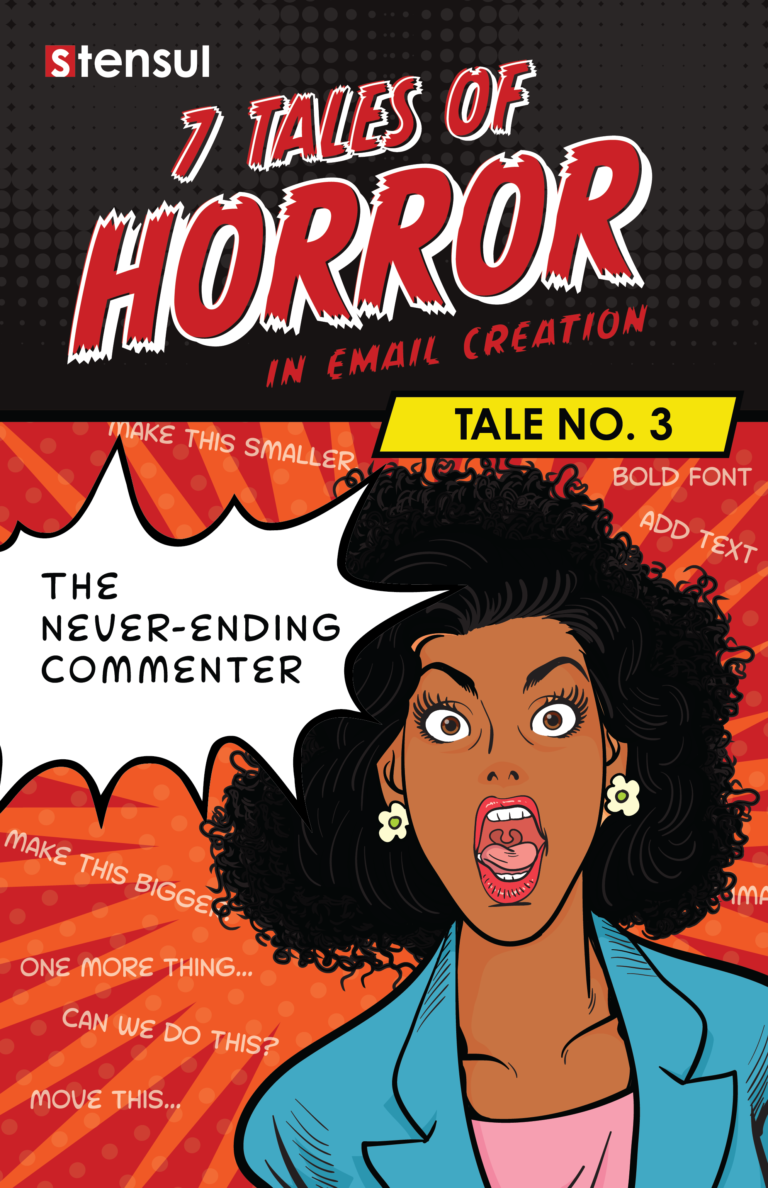
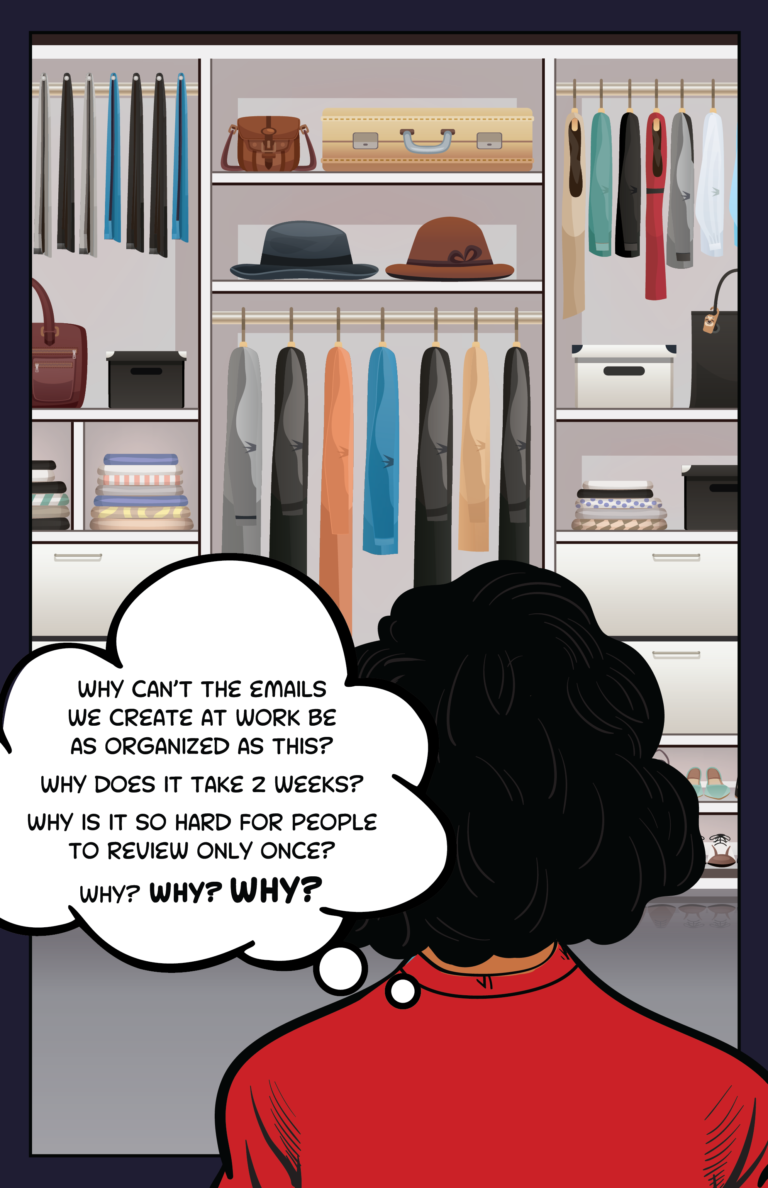
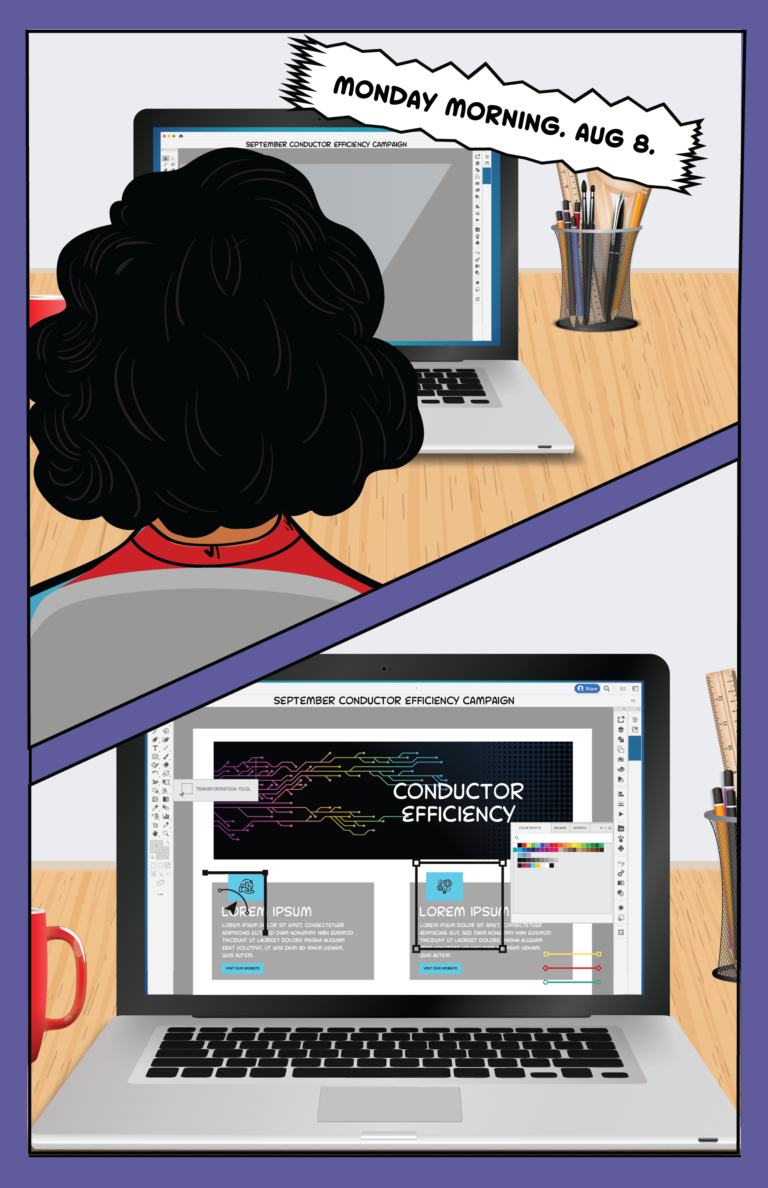
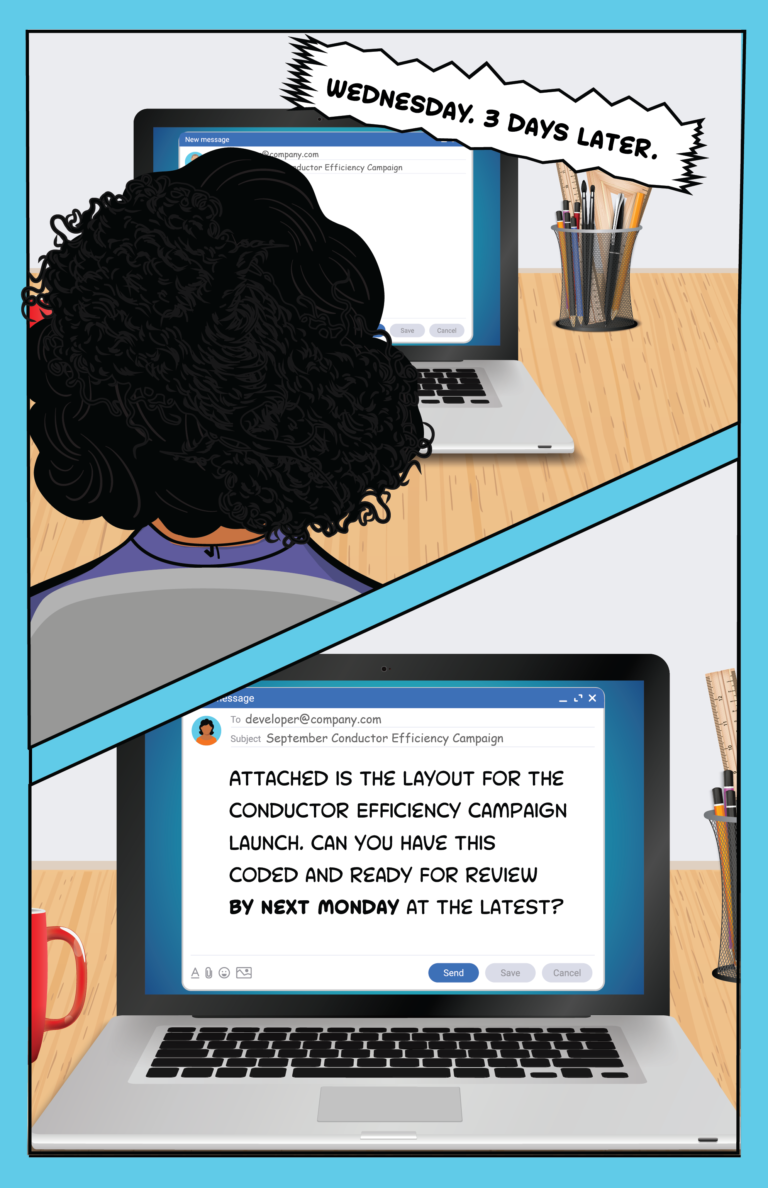
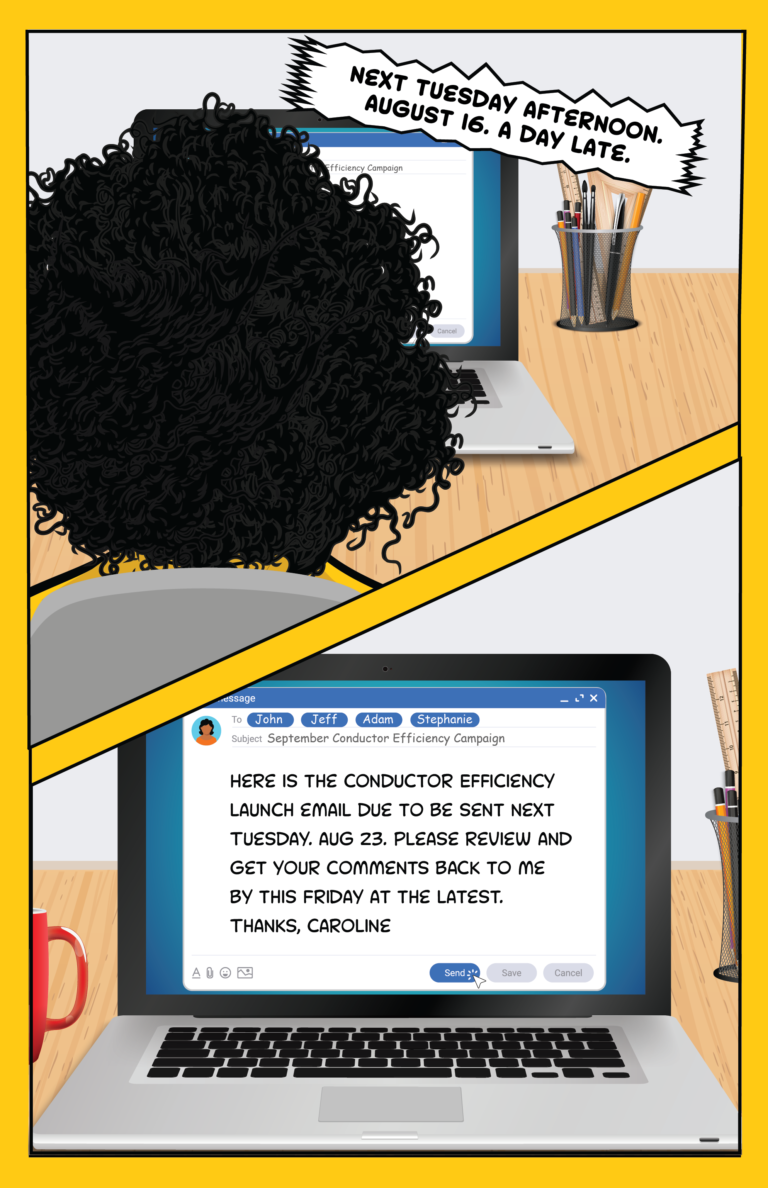
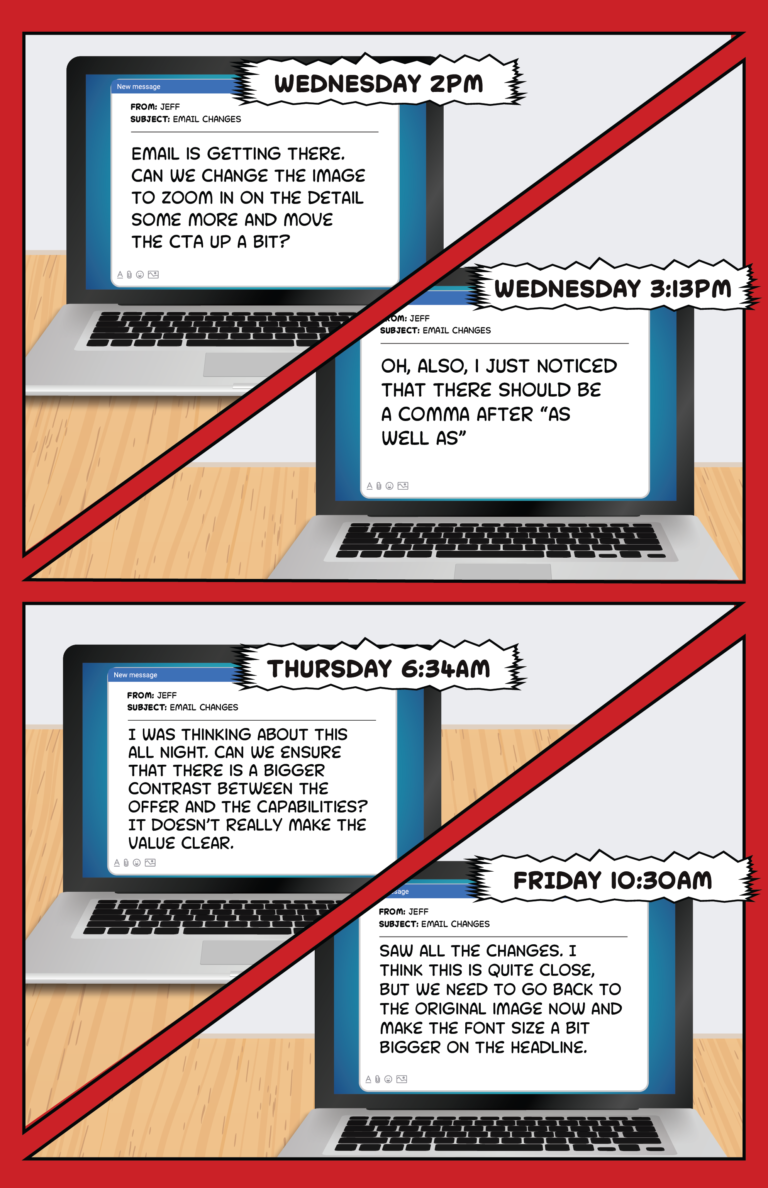
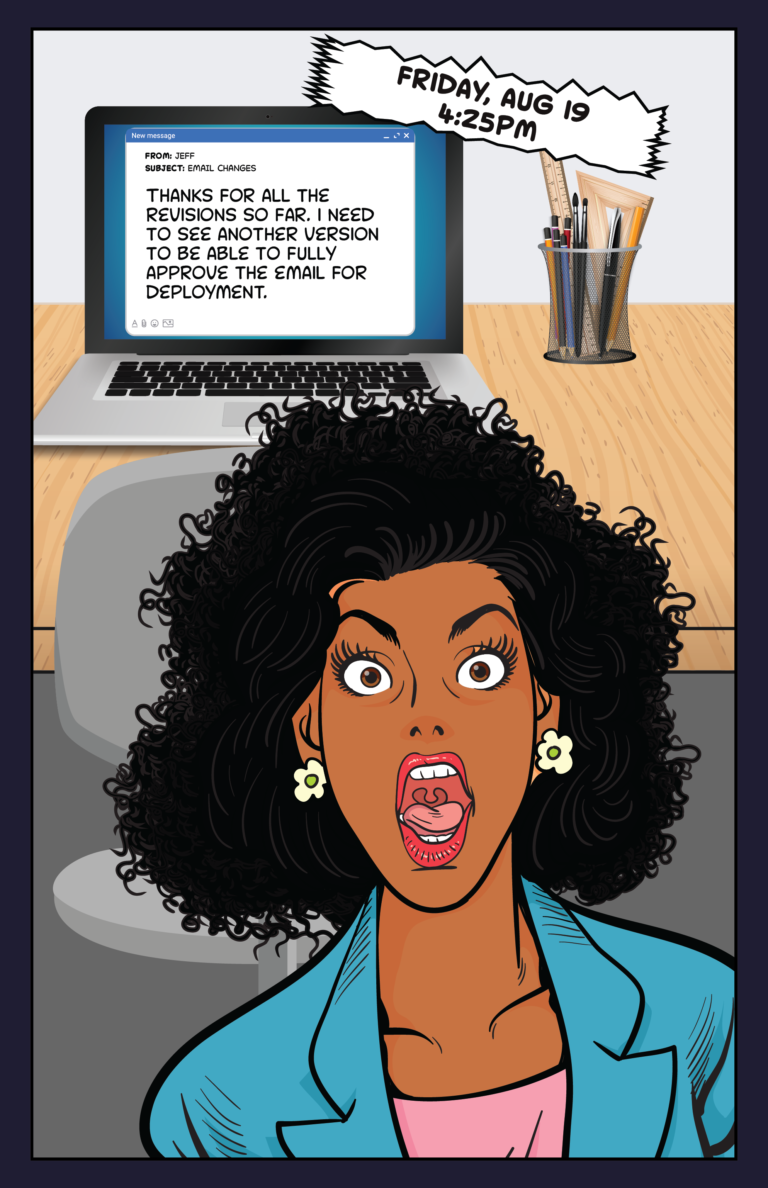
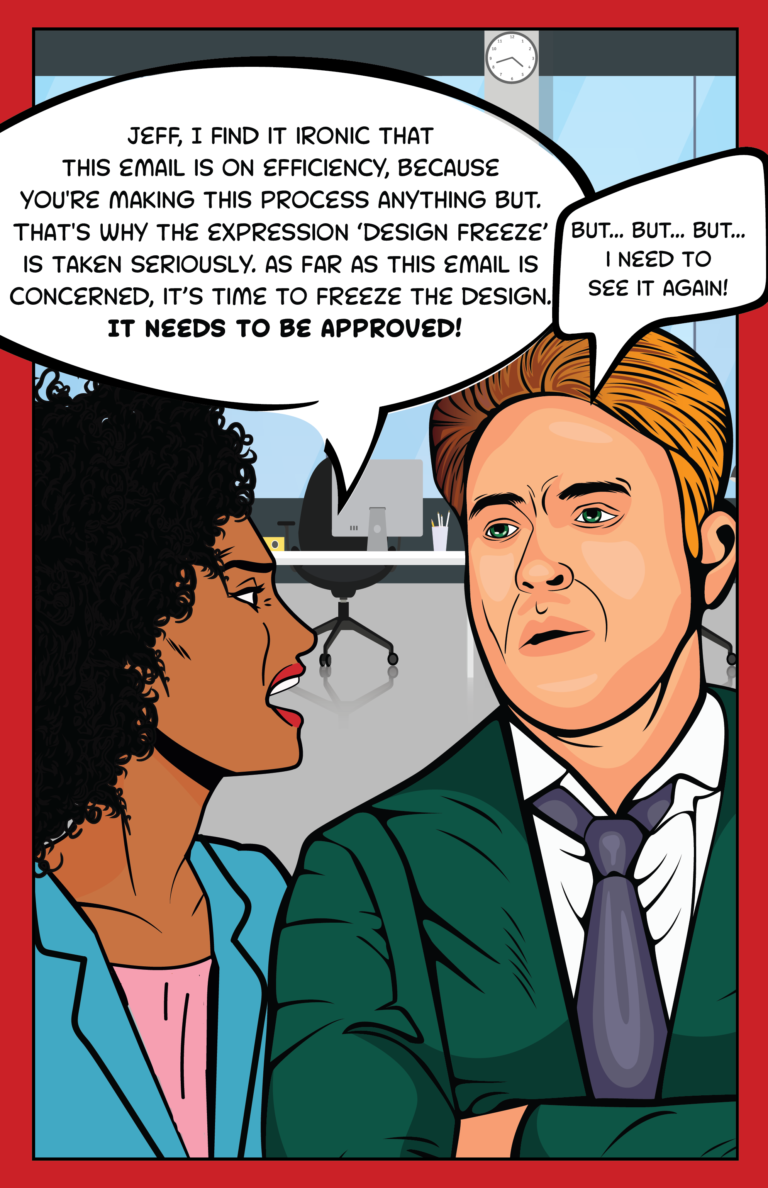
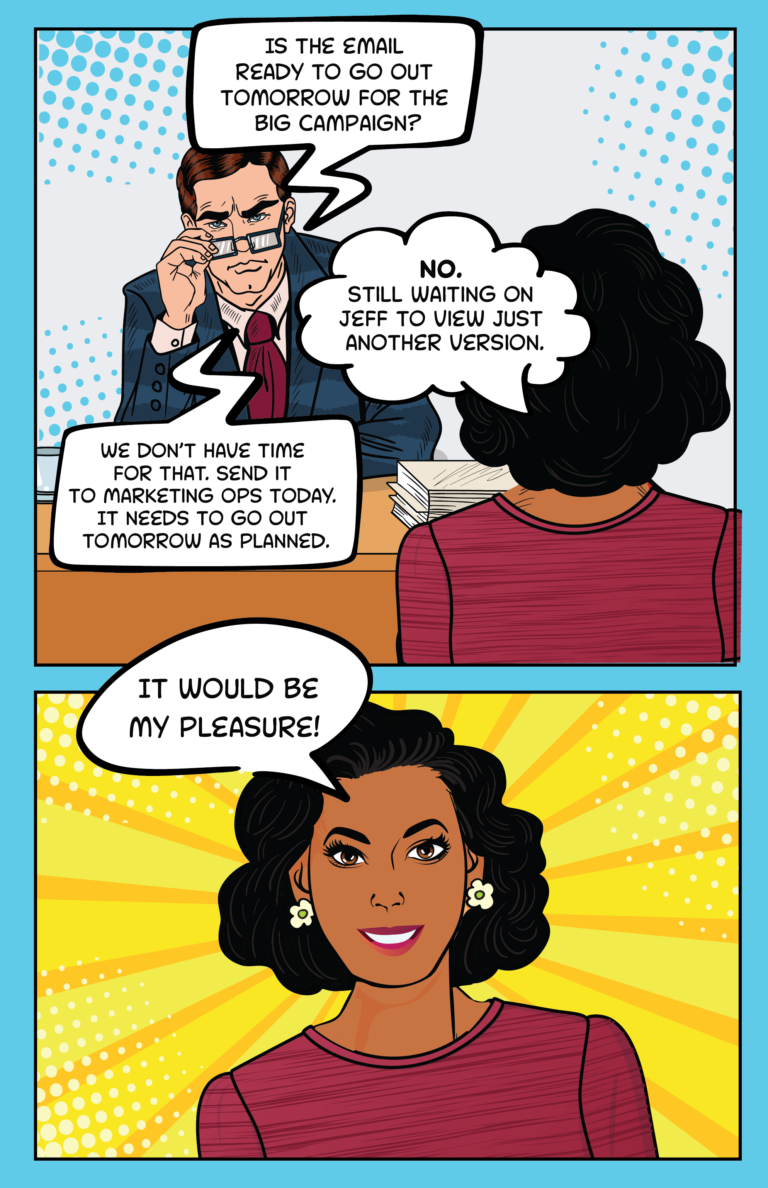



Caroline takes pride in getting things done efficiently. Considering she heads email marketing at a large semiconductor company, that’s no small feat. Like so many other companies – big and those working on getting big – the email creation process at Caroline’s is anything but efficient.
It bothers Caroline that her organization takes 12 days, on average, to get one email prepared and sent. It is little consolation that it takes two or more weeks for 80% of companies to get an email out the door.
Efficiency is Caroline’s hallmark. Since childhood, she’s laid out the clothes for the next day before bed. Heading for work is done with unnerving precision.
The email creation process Caroline oversees is Design-to-Code. While it is the workflow used by most companies, it’s also the most complicated, time-consuming, and costly. There are lots of people involved, performing lots of tasks independently. A marketer prepares a brief, the game plan, so to speak, for the email to be created. A designer and copywriter devise a concept based on the marketer’s idea. Once approved, it moves to a developer who turns the concept into HTML code from which the email will be produced, at least, for now, as an email proof.
The Design-to-Code workflow is prone to bottlenecks. For example, the coding slows down if the email design concept is done but the developer isn’t available. Then, as Caroline puts it, “progress can get seriously delayed.” but nowhere is the potential for delay higher than in the review & approval process.
As with most organizations, the review process at Caroline’s includes marketers, designers, and the keepers of the brand guidelines and regulatory compliance. Depending on the email, senior management may get into it too. It’s worth noting the QA process generally follows those reviews and holds the potential for added delays.
To her credit, she’s impressed nearly everyone involved in the review and approval process with the need to promptly and properly examine the email proofs they get. Caroline is a big believer in doing it right the first time, but that doesn’t happen with their email reviews.
The reason is Jeff. He’s reviewed countless emails, and every time it’s the same. A comment or edit by someone else prompts him to “rethink things.” Each “rethink” creates another cycle with the email proof going back for code fixing and then back to the others in the review group. Others have observed that several of Jeff’s “rethinks” were unneeded.
Caroline’s colleagues describe her as quiet, always under control. She moves forward regardless of what gets thrown in her way. But they know Jeff’s never-ending comments cause a slow burn within her. It wasn’t the sheer number of comments. Instead, it was the drip, drip, drip way he made them. It slowed things down to a distressing crawl because, with each comment, the review cycle effectively started again.
Last Wednesday, an email proof made the rounds that Caroline was pushing to get done before the weekend. True to form, Jeff began his stream of seemingly never-ending comments.
In a display of wholly uncharacteristic behavior, Caroline confronted Jeff. With one hand on her hip and the other pointing within an inch of Jeff’s face, Caroline said, “may I remind you we work in the chip industry, where unnecessary delays can have major business consequences. That’s why the expression ‘design freeze’ is taken seriously. Jeff, as far as this email is concerned, it’s time to freeze the design. It needs to be approved!”
Jeff stood still, eyes blinking, jaw dropped open. He gathered himself, stunned by Caroline’s forcefulness, oblivious that his never-ending comments caused her to boil over justifiably. Haltingly he stammered, “but…but…but I need to see it again.” Anyone witness to this playing out knew that was far from the case. Even after everyone signed off on an email proof, Jeff had this compulsion to peck at it, looking for things that didn’t exist.
Caroline, to her credit, didn’t respond to Jeff’s request to – yet again – comment on the email proof. She turned and walked away from Jeff, saying not a word or showing no discernible emotion on her face.
Friday ended uneventfully, albeit without the email proof fully approved. No thanks to Jeff.
Back at it on Monday, Mike, Caroline’s manager and the VP of Marketing Operations, came over to her desk and asked, “are we ready to get the email out?”
“Well, Mike, we still don’t have Jeff’s final okay,” Caroline commented matter-of-factly.
“Hey, it has to get out now,” he said firmly. “Let’s go!”
“Okay, then. I’ve got no issue with that,” Caroline said with an ever-so-slight smile.
Whatever may have happened to Jeff over the weekend is open to much speculation. His making comments in fits and starts throughout the review & approval process had the effect of causing emails to be unnecessarily delayed for deployment and took up the time of many others he worked with that could have been spent on higher-value, more strategic work.
Caroline and Mike could have put a Stensul Email Creation Platform™ at the center of their email creation process to reduce the impact of Jeff’s “rethinks.” It provides a single environment that brings together all involved to streamline collaboration and simplify email creation, eliminating much of the back-and-forths so common, and time-consuming in other email creation workflows.
If this tale of horror in email creation strikes a little too close for comfort, let Stensul show you how to reduce your email creation times by up to 90% so your team can focus on more strategic, higher-value work.
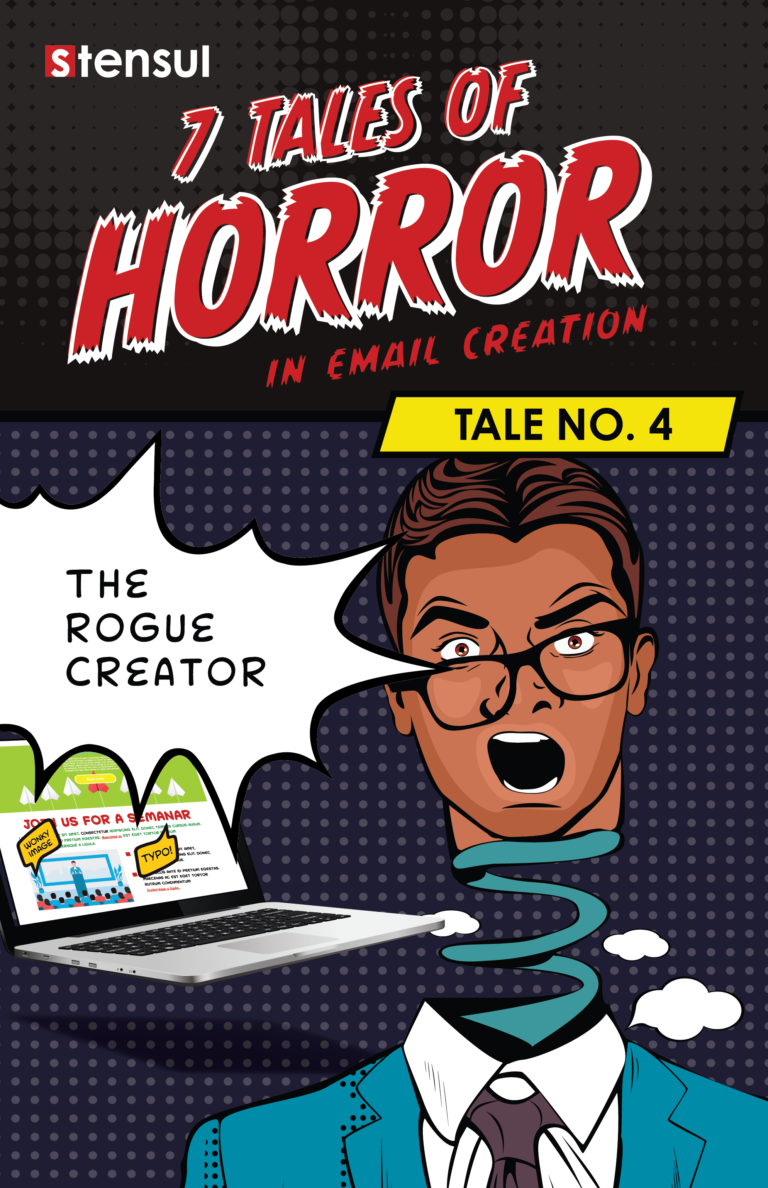
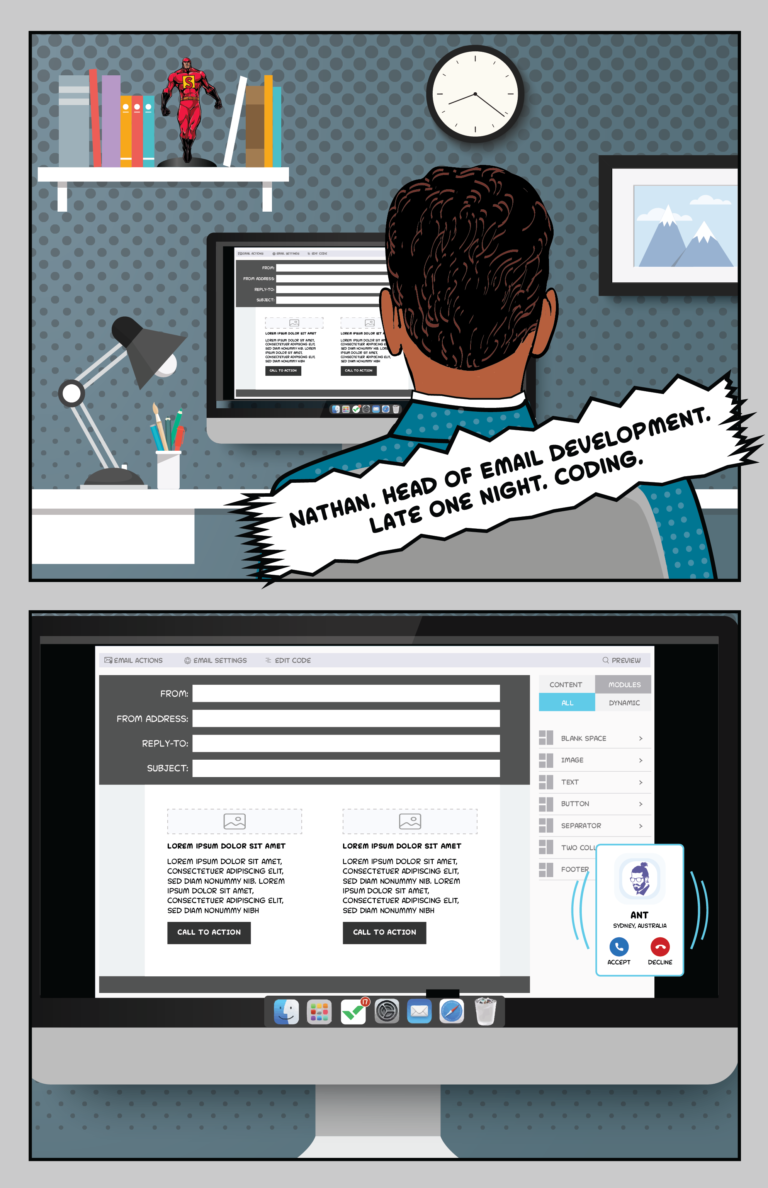
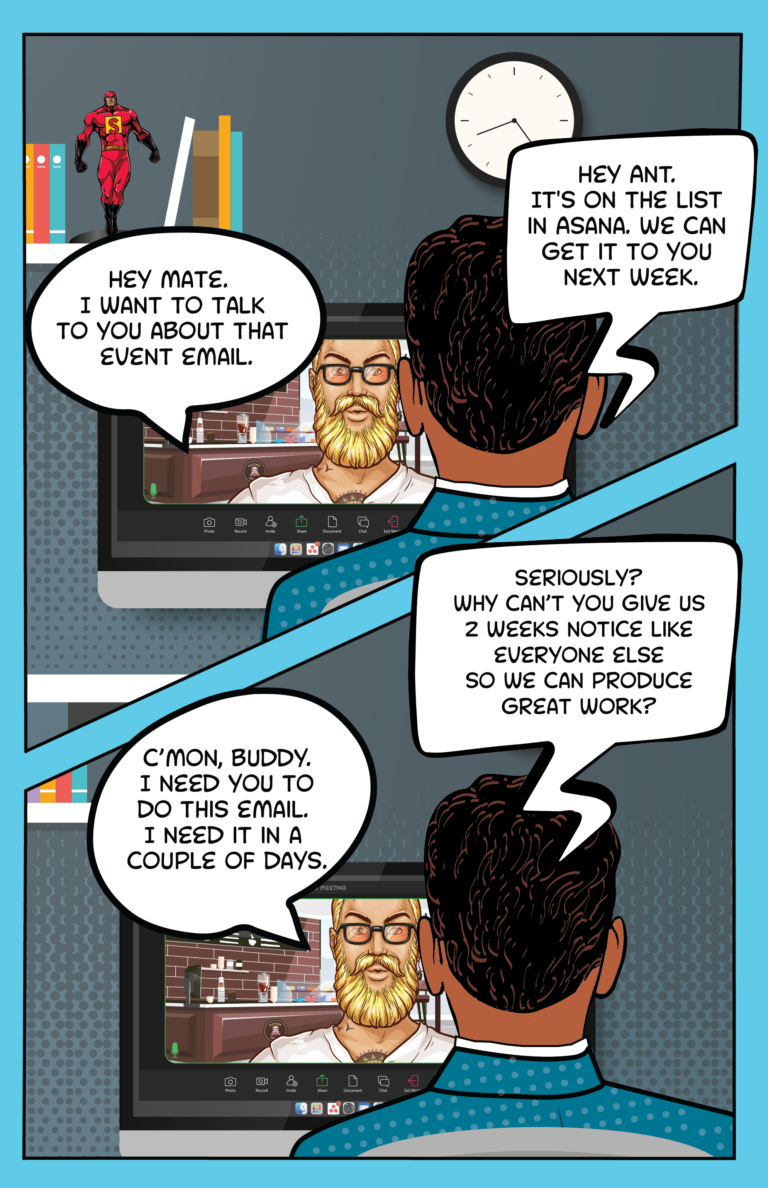
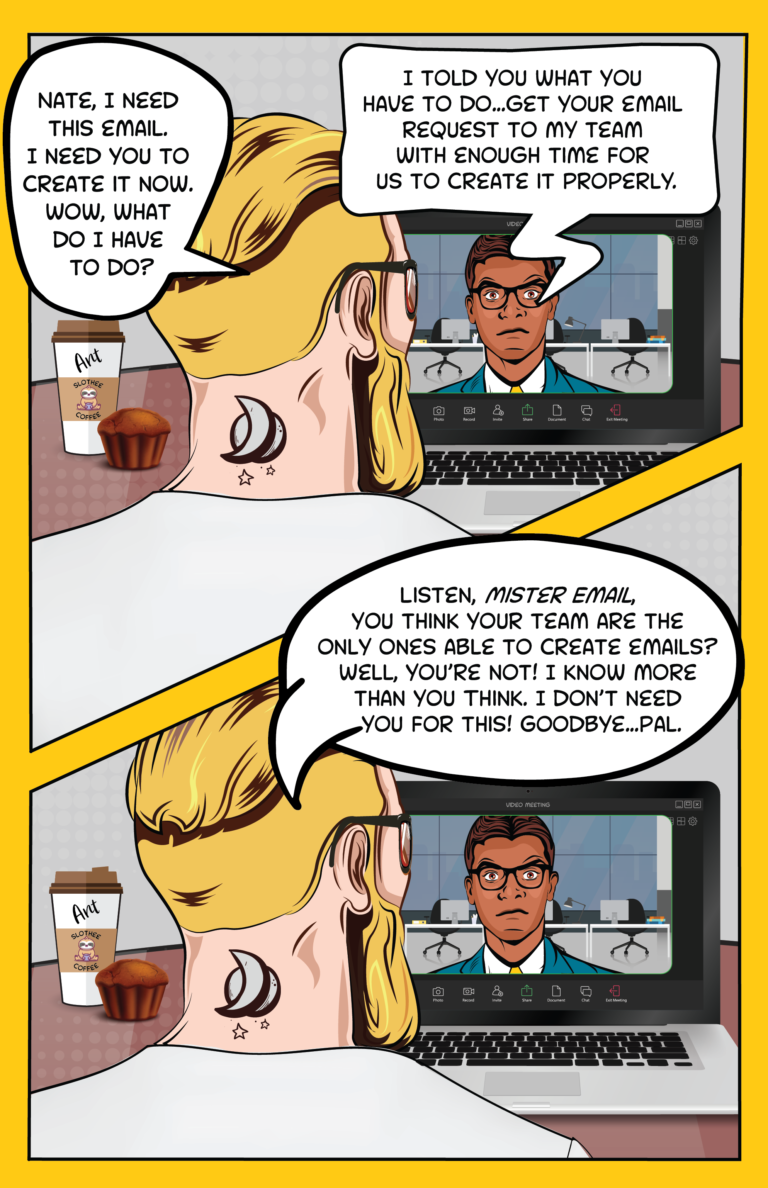
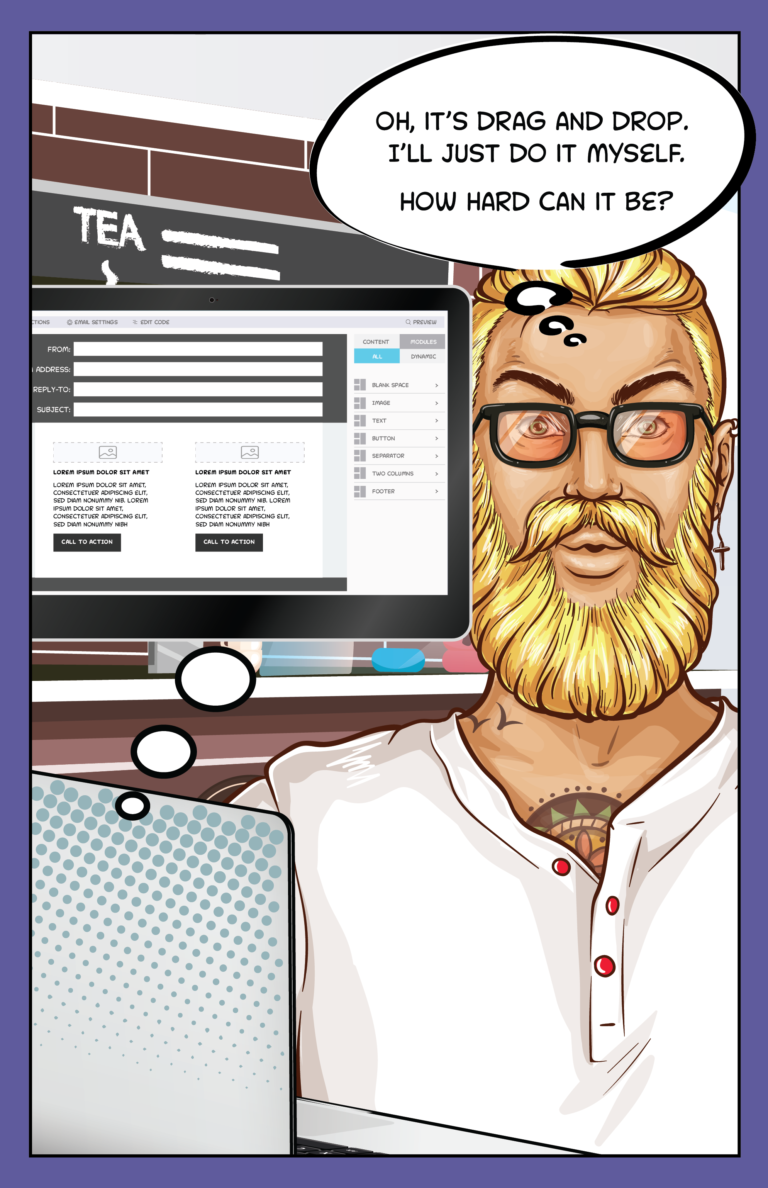
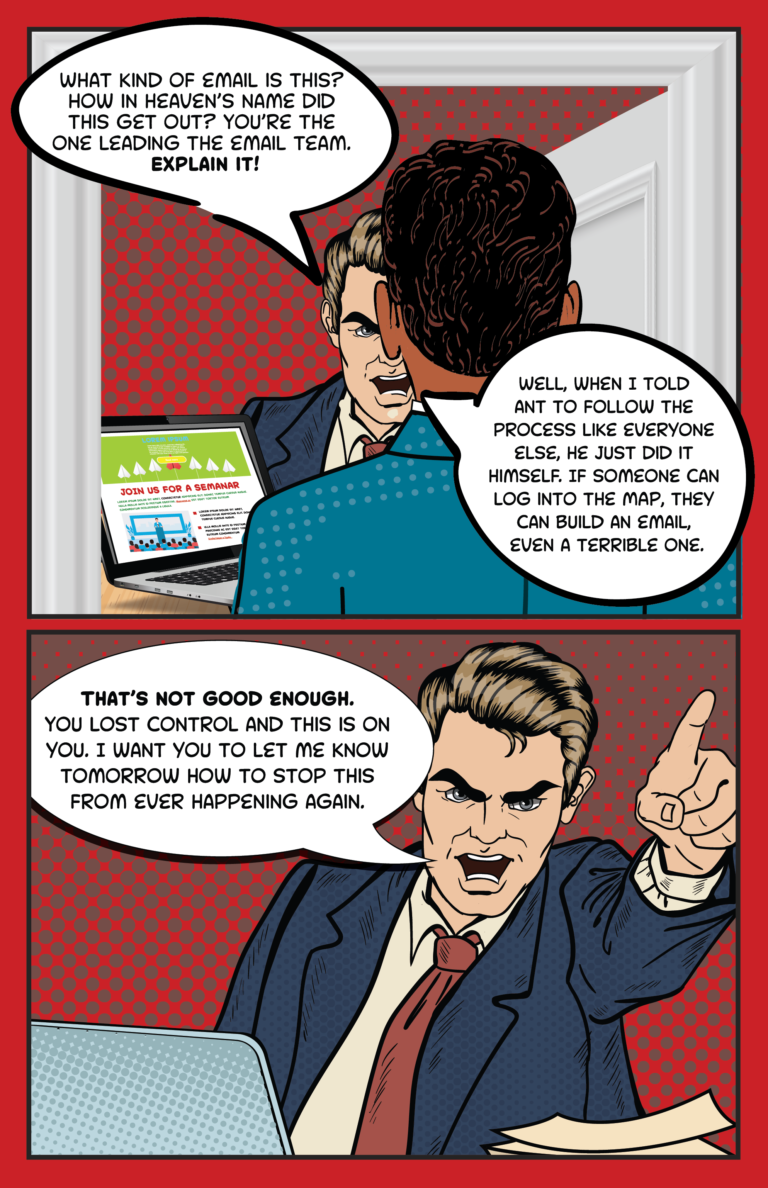
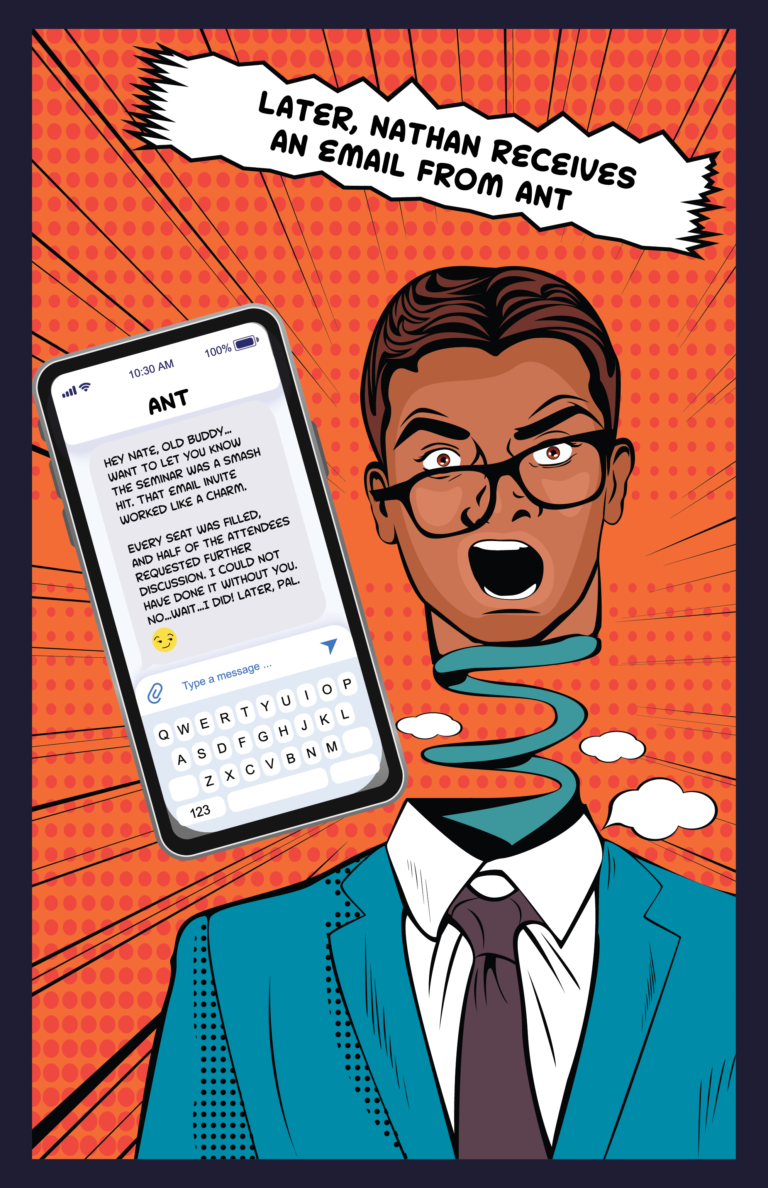



If you’ve worked a day or a decade, you’ve come across the type. You know, the sort who’s very busy, very important, and never has time to wait when it makes sense. When it comes to following procedures, this type acts like rules are for everyone but themselves.
Few deal with that type as much as Nathan. He leads digital marketing at a networking systems company doing business around the globe. To say his job involves a lot of moving parts and people would be an understatement. Nonetheless, his email marketing team numbers just 4, including himself. They handle about 25-30 different email initiatives each month, with several of them consisting of multiple emails that need to be created. That’s a lot of work done by not a lot of people.
Nathan will admit that all those requests can be overwhelming at times. It’s not that he and his team don’t want to turn ideas for emails into actual HTML-coded emails. The process used at the company, called Design-to-Code, has them creating a single marketing email in about two weeks.
That method is the email equivalent of custom-tailoring. Each garment is unique, bespoke, handmade in a meticulous fashion. Each email is hand-coded. Craftsmanship has its place, but not in the case of an email to build attendance for a seminar being held in a hotel conference room somewhere on the globe. It needs to get done and deployed fast, or the opportunity to fill the room and make an impact on a group of prospects is lost.
In those instances, Nathan has to deal with the very busy, very important types. No one is busier or more important than Bernie. He’s a Director of Field Marketing, covering the company’s APAC region. Nathan accepts that Bernie has lots to do, but it always seems to be done in a panic-mode manner.
He suspects Bernie might have a problem with program planning and time management. Despite telling Bernie numerous times that his email team needs 10 to 14 days to fulfill an email request properly, his show up five days before they need to be sent.
Each time that happens, Nathan sends Bernie a message via the company’s Teams platform to let him know in real-time that his request can’t be handled adequately in the time asked. Usually, Bernie would make a Zoom call to ingratiate himself to Nathan.
“Hey, Nate…c’mon, buddy. You gotta do it for your pal Bernie. I need you to do this email. I need it in a couple of days.”
Nathan’s eyes gazed off to nowhere in particular. The blood vessels in his neck throbbed visibly. He slowly inhaled and spoke.
“Bernie, I’m not your pal or your buddy. I’m just like you, trying to do my job. Why can’t you get your email requests to me in enough time for my team to produce something we can all be proud of, something that works for you…that helps make your field marketing efforts more successful?”
“Nate, I need this email. I need you to create it now. Wow, what do I have to do?”
At that, Nathan cut Bernie off. With a cold, emotionless voice, he said, “Nobody calls me Nate. No one and especially you. I told you what you have to do…get your email request to my team with enough time for us to create it properly. You haven’t done that…again!”
This reaction was all new to Bernie. He usually cajoled Nathan into performing miracles for his late email requests. It flustered then angered him. He needed this seminar to work. The APAC sales head was ratcheting up the pressure daily. He snapped and decided to go rogue and create an email on his own.
“Listen, Mister Email, you think your team are the only ones able to create emails? Well, you’re not! I know more than you think. I don’t need you for this! Goodbye…pal.” With that, he clicked on the End Meeting for All button and watched as Nathan’s image faded to black.
Bernie still had permission to go into the company’s MAP from when he was a member of the corporate marketing team at worldwide headquarters. He made his way to the email builder that’s part of the system. Bernie thought, “Hey, it’s drag and drop. How hard could it be?”
Somehow he managed to cobble together an invitation to the product seminar and sent it to prospects and customers across the APAC region.
He was pleased with himself.
Nathan walks across the company parking lot to his office three days later when his boss, Stan, comes up from behind. A physically imposing man, his tap on Nathan’s shoulder felt more like the strike of a hammer. Startled, Nathan stopped in his tracks and turned to see his boss quite angry.
Stan pulled a sheet of paper from his backpack and waved it at Nathan. “What kind of email is this? How in heaven’s name did this get out? You’re the one leading the email team. Explain it!”
Nathan took the paper from Stan’s hand and looked at it. He hadn’t seen it. As his eyes scanned over it, Nathan noticed typos, use of colors that weren’t part of the corporate palette, and, most disquieting, the footer of the email displayed the logo replaced 18 months ago.
“Well, Nathan, explain it!”
“Stan, I can and I can’t. He told of his recent heated exchange with Bernie, ending with the APAC field marketer threatening to go rogue and create the email himself, which he had done.
“Why didn’t you stop him?”
“I tried, but I really can’t. If someone can get into the MAP, they will try to build an email, even one that’s error-filled.
“Nathan, you lost control of this one. Sorry to say, but it’s on you. Figure out a way to stop this from ever happening again, and share your thinking with me tomorrow morning.”
Nathan nodded and watched his boss storm off to the office building. He followed close behind and started his work when he heard the alert for an incoming Zoom call.
He clicked on the button, and on his screen appeared a smirking Bernie.
“Hey Nate, old buddy…want to let you know the seminar was a smash hit. That email invite worked like a charm. Every seat was filled, and half of the attendees requested further discussion. I could not have done it without you. No…wait…I did! Later, pal.
There will always be those who will stretch the envelope till it tears. When that happens, it usually impacts those who urged against pushing beyond the limits of a protocol, as it did with Nathan. He’s a person who feels it best to “stay within the lines,” but was undone by someone who thought otherwise.
However, what real controls did Nathan have? How could he control the likes of Bernie, who created his email, albeit chock full of errors? Access to the email builder was not as tight as thought, leaving the marketing organization more vulnerable to emails that could damage its reputation and financial performance.
Bernie’s going rogue wouldn’t have happened if the company had a way to create emails in hours, not weeks, by non-technical people guided by robust guardrails that ensure design and brand and regulatory compliance were constantly maintained.
Nathan and his boss, Stan, could have put a Stensul Email Creation Platform™ at the center of their email creation process to prevent Bernie from going rogue. It provides a single environment that brings together all involved to streamline collaboration and simplify email creation, eliminating much of the back-and-forths so common, and time-consuming in other email creation workflows.
If this tale of horror email creation strikes a little too close for comfort, let Stensul show you how to reduce your email creation times by up to 90% and keep your Bernies from going rogue.
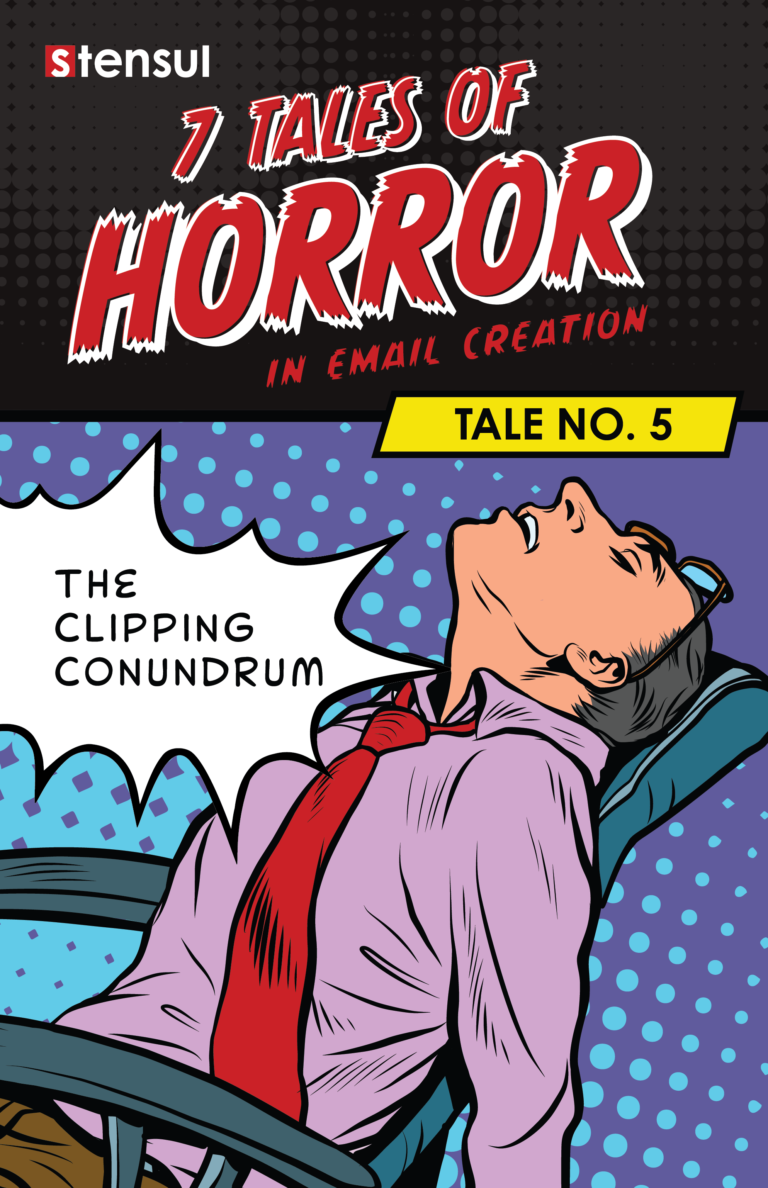

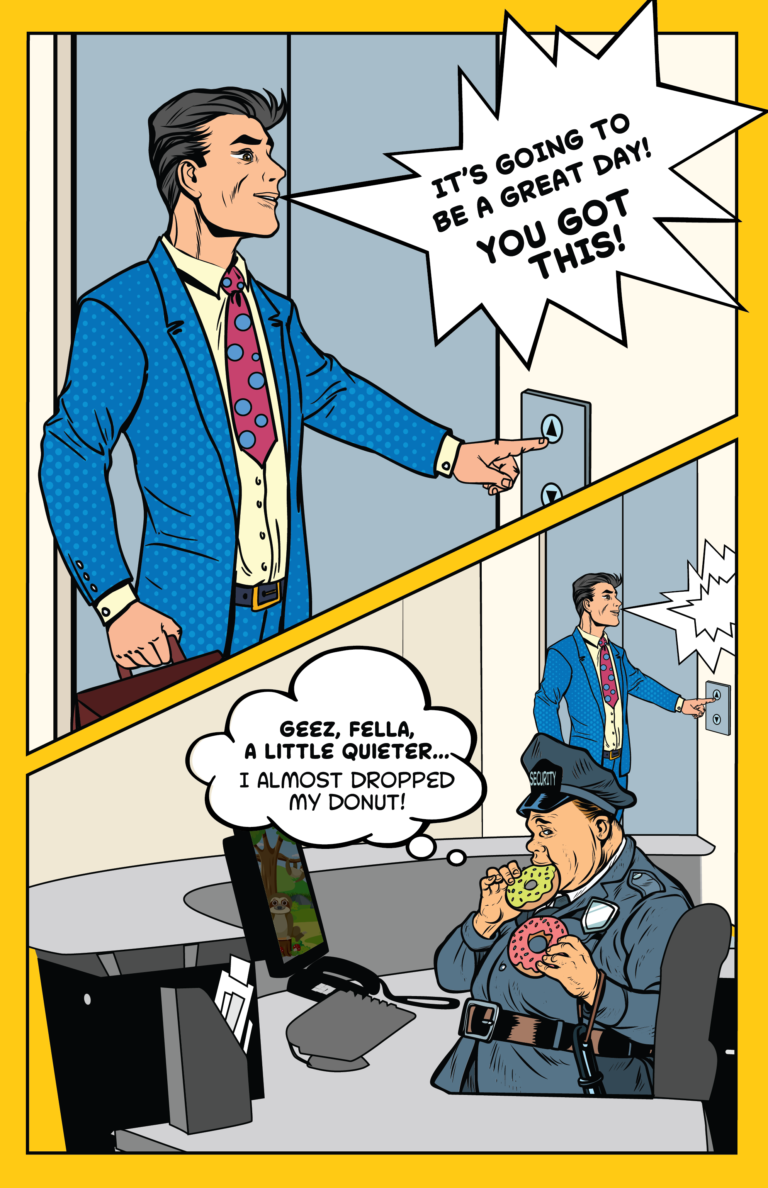
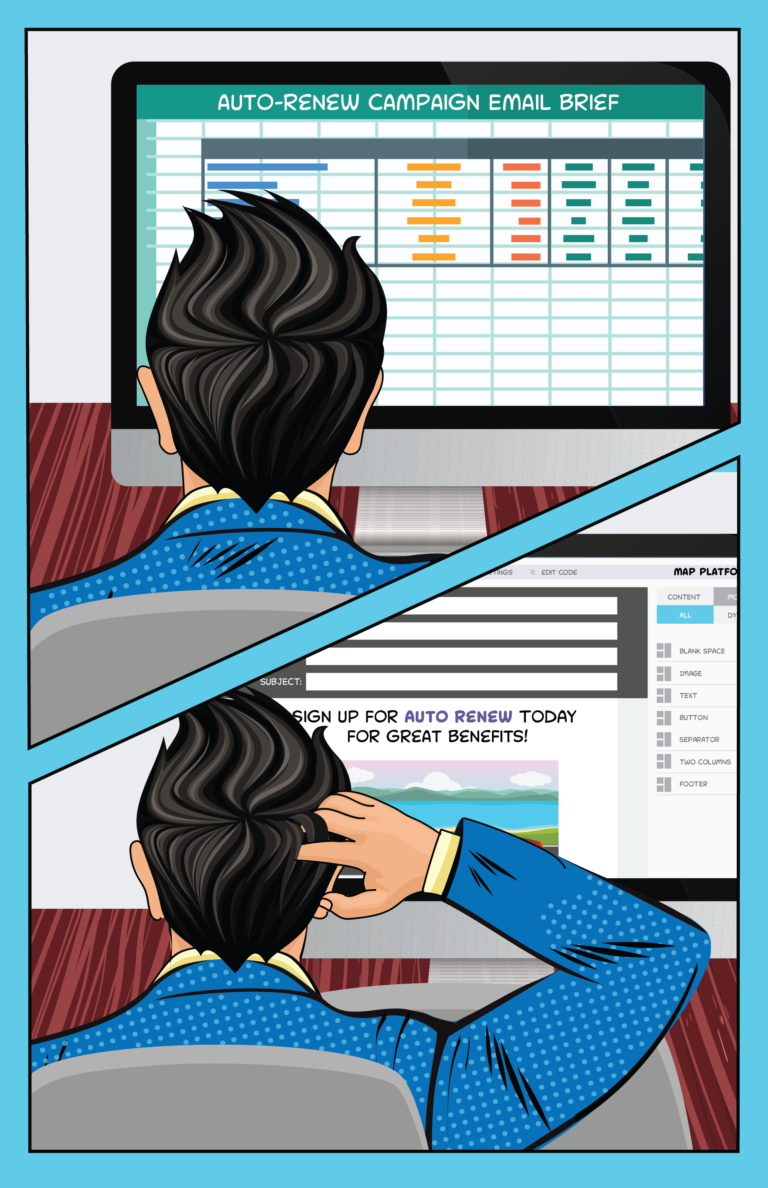
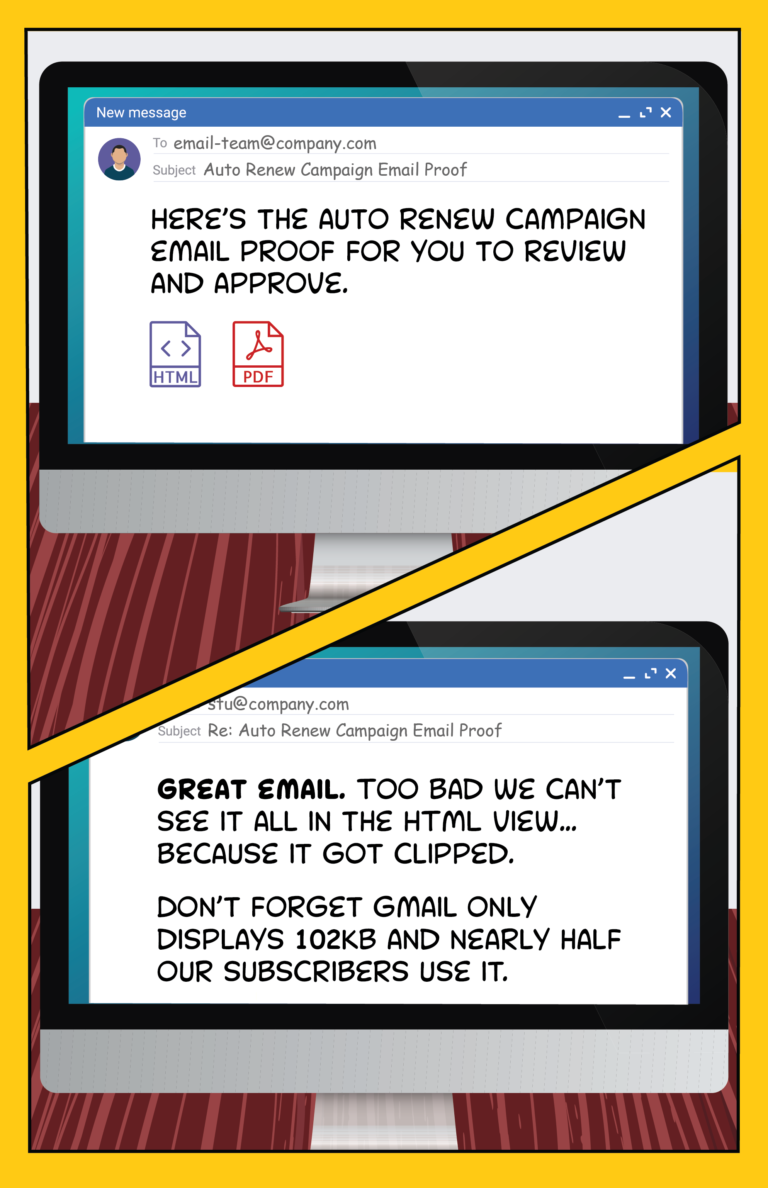
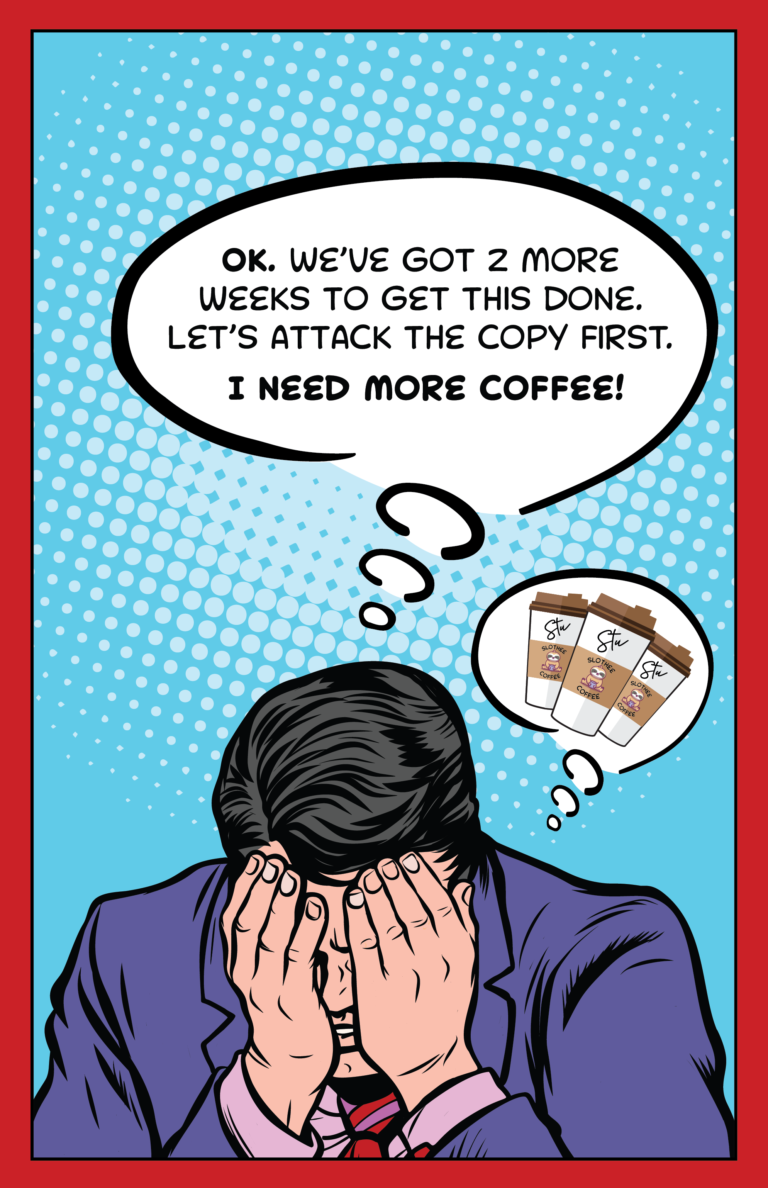
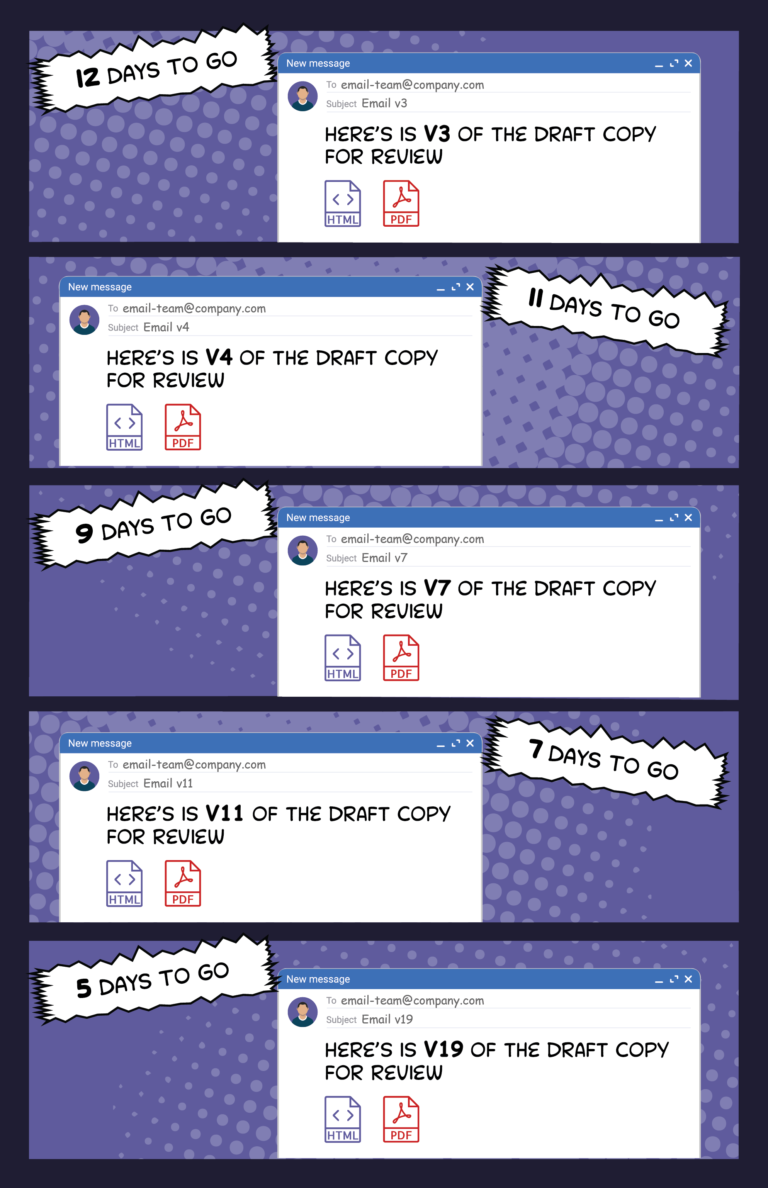
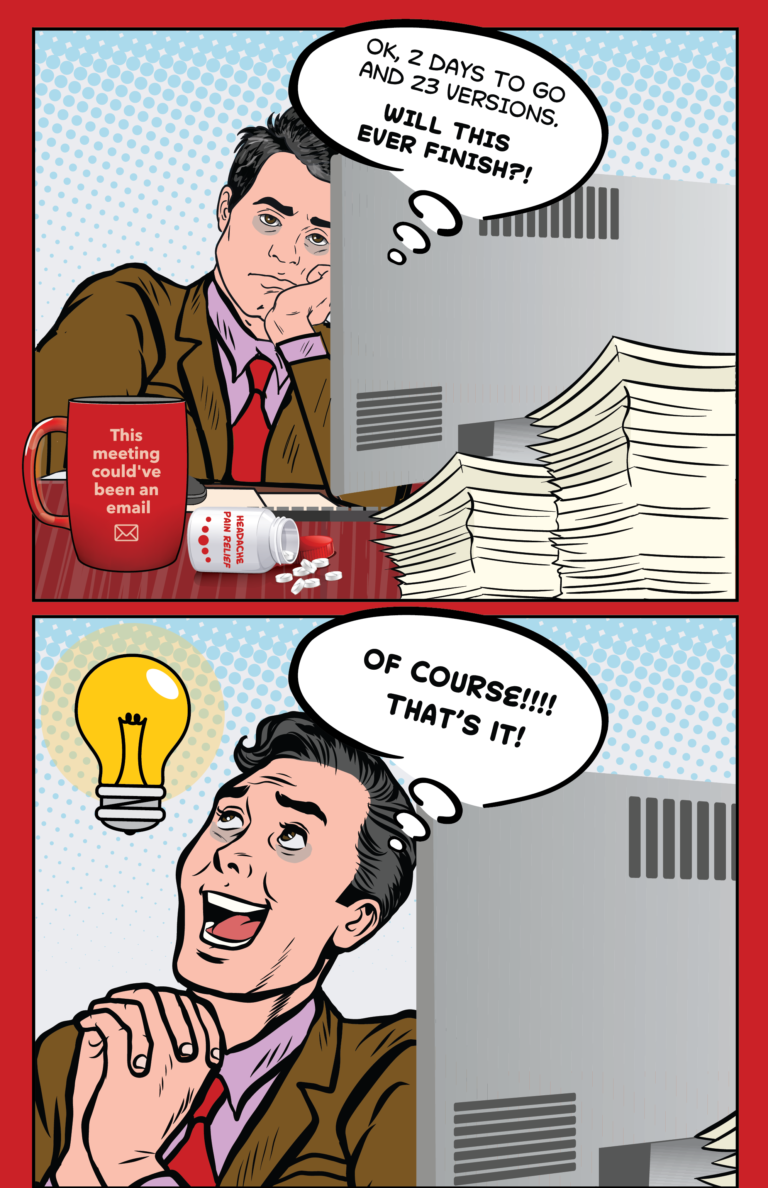
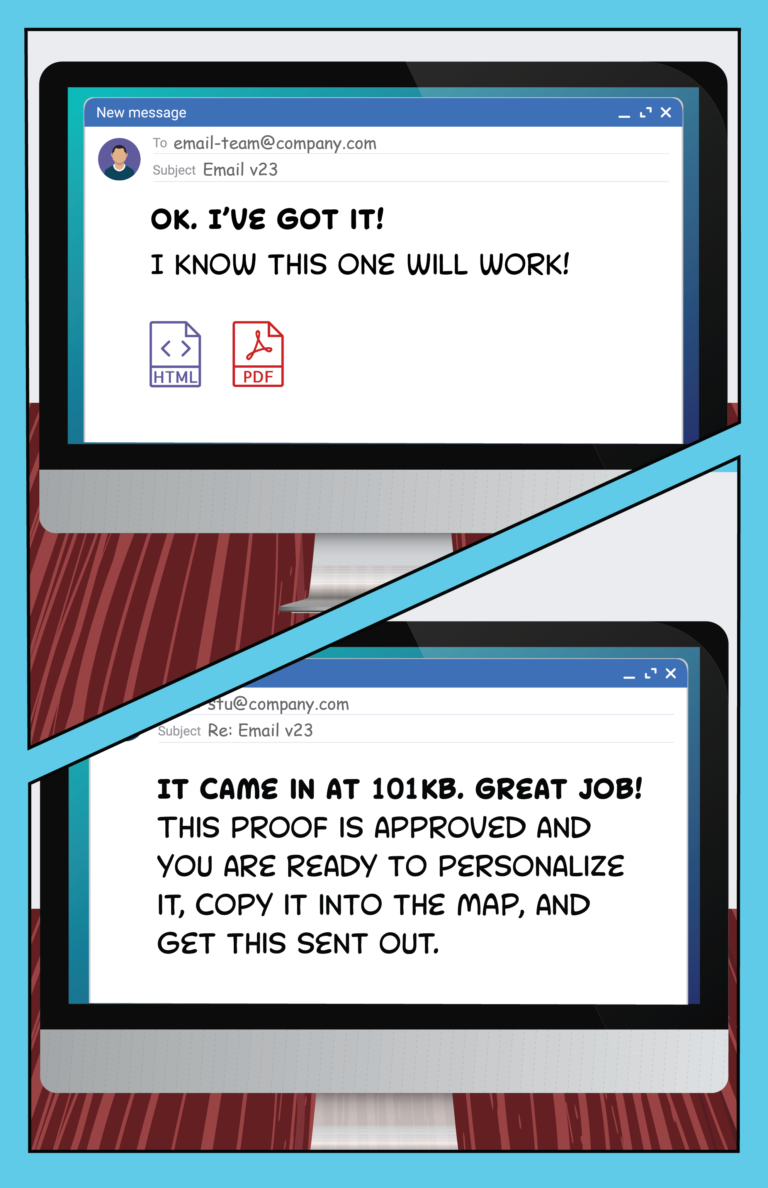
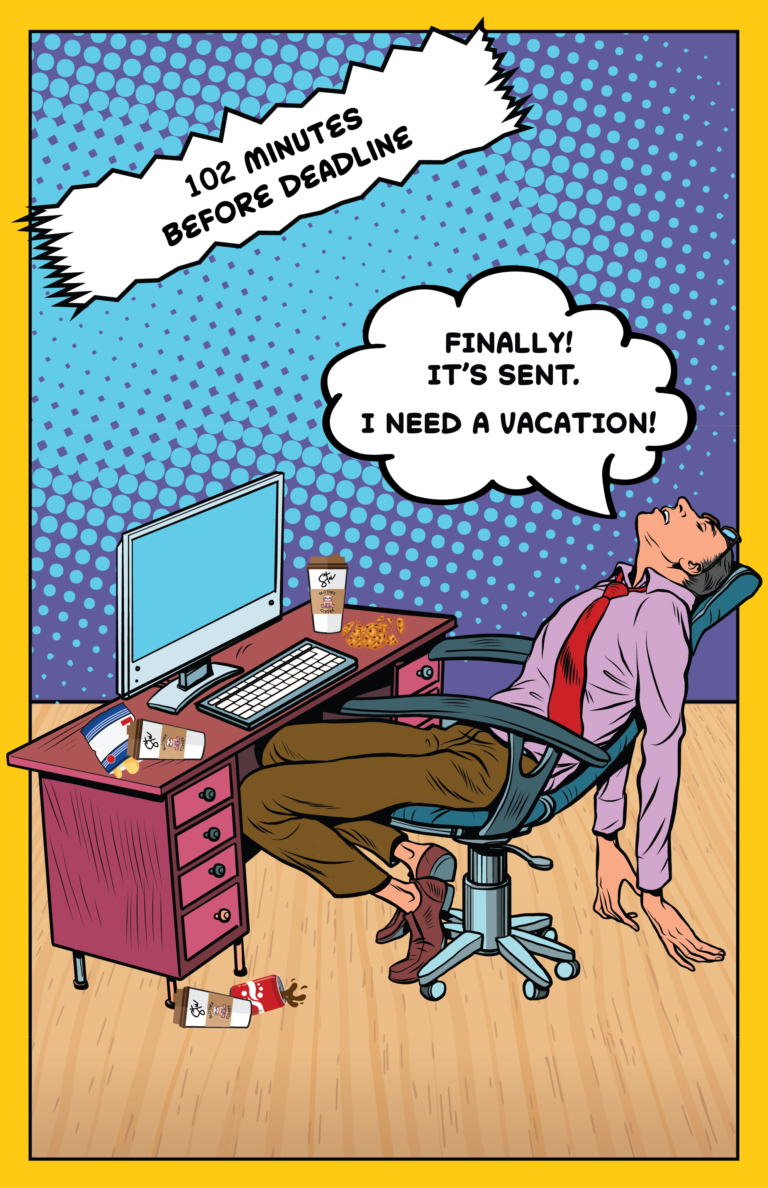



Stu practically ran to the midtown office where he worked on the digital marketing team of a leading insurance company. Today was the day he’d craft his first email for an important campaign, able to apply all the email creation skills he’d been honing since joining the team.
He’d be working on the auto policy renewal campaign, an email effort that had to move the needle. That meant it needed to get out as planned and then hit the projections.
As he entered the lobby of the office building, Stu bellowed, “YOU’VE GOT THIS!!”, causing the security guard to drop the donut he was munching on. Stu didn’t just touch the panel on the entry gate, he slammed it with his access card. He was up for the game and ready to win!
Now seated before his keyboard and high-res display, Stu absorbed the design and copy devised for the campaign. He then went about turning the concept into an email, sending a first proof from the ESP to the design team.
Before he could get up to grab a cup of coffee from the break room, a Slack message from the designer popped up. It read: “Great email. Too bad we can’t see it all…because it got clipped.”
His company uses Gmail which has a 102 KB size limitation for individual email messages.
This was a big deal. He knew a large percentage of the 300,000 people who’d get the email use the Gmail client.
There were two paths Stu could pursue to get the message under the size limit; move the images from being embedded to sitting on a server or cut copy.
He took a deep breath and reassured himself by saying “you’ve got this .” But he knew it wasn’t going to be all that simple. The email was intended to prompt auto policyholders to renew their coverage earlier, in an attempt to lessen the chance of defections to other insurance companies.
There was a lot of copy to make clear all that was included in the offer. While some was purely promotional, much of it needed to be there to comply with company and regulatory compliance.
The conundrum this clipping posed was that Stu could only see if he got under the file size limitation by creating a series of proofs that would be sent from the ESP to a Gmail client. How many such proofs were unknown. What was known was the deadline to get the auto policy renewal email sent. There was little time for Stu to waste.
He worked with the copywriter to whittle down the text, get it into an email form, and send a proof. The day wore on and Stu was still producing proof after proof only to see the email was still getting clipped.
Several days passed and Stu was still at it. Cutting copy and pushing proofs out of the ESP, only to see the email getting clipped. On top of needing to resolve the clipping situation, Stu needed to have email approved by marketing, QA, compliance, and a handful of executives, known for being sticklers. That never went without effort or a few heart palpitations. The many proofs to check on clipping exacerbated a review and approval process that normally was very much like trying to herd cats.
At one point, Stu lost count of the proofs produced to check on the clipping. He was far more than frazzled.
Finally, as if a divine spirit intervened on Stu’s behalf, the email size was less than 102 KB, and everyone who needed to approve it had signed off. That let Stu handle personalization tokens and other actions just before uploading it to the ESP for deployment.
When all was completed on this first important email, Stu was more exhausted than exhilarated. He sent the email.
Slumped in his desk chair, Stu looked up at the oversized clock on the wall opposite his desk. His eyes widened as his already-tension-filled face tightened further. The email with the clipping issue had been sent exactly 102 minutes ahead of the absolute deadline.
Stu is like most email creators. They’re pressed for time, often unable to check on things before a proof gets sent from an ESP or MAP, like whether or not an email won’t get clipped. Since about one in three email users worldwide use Gmail, the need to check the email size makes all kinds of sense. Better yet, having some kind of alert that warns of the email size as it’s being built.
The reality is Stu didn’t have to suffer this email creation horror.
If his organization used a Stensul Email Creation Platform™, he would have benefitted from its Gmail clipping notification capability. Instead of endless trial-and-error attempts to see if the email will be clipped, Stu can track the estimated email size (in KB) as the email is created, and be notified if it reaches 102KB. In addition, the estimated reading time of the email is displayed.
More than saving time for email creators like Stu, it will ensure the emails won’t be clipped in Gmail. That means a subscriber won’t have to deal with a clipped message, improving the email experience and raising the chance for a policy renewal.
The Stensul Email Creation Platform™ provides a single environment that brings together all involved to streamline collaboration and simplify email creation.
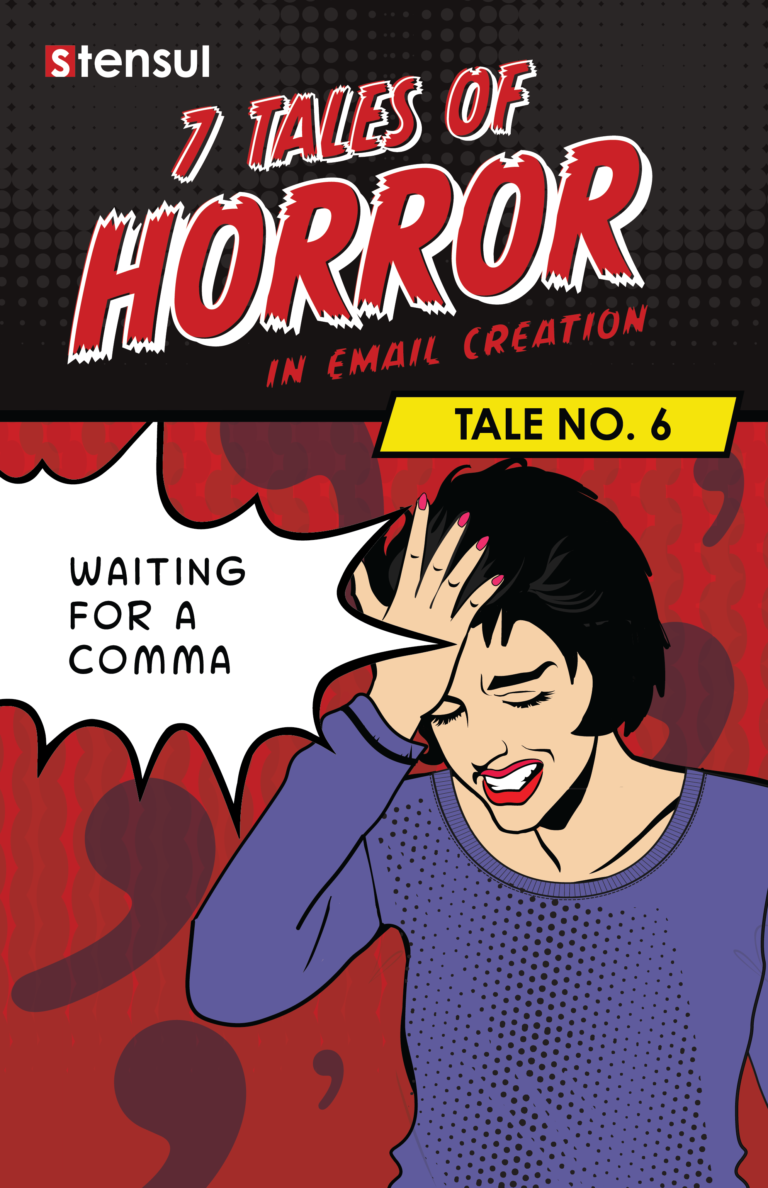
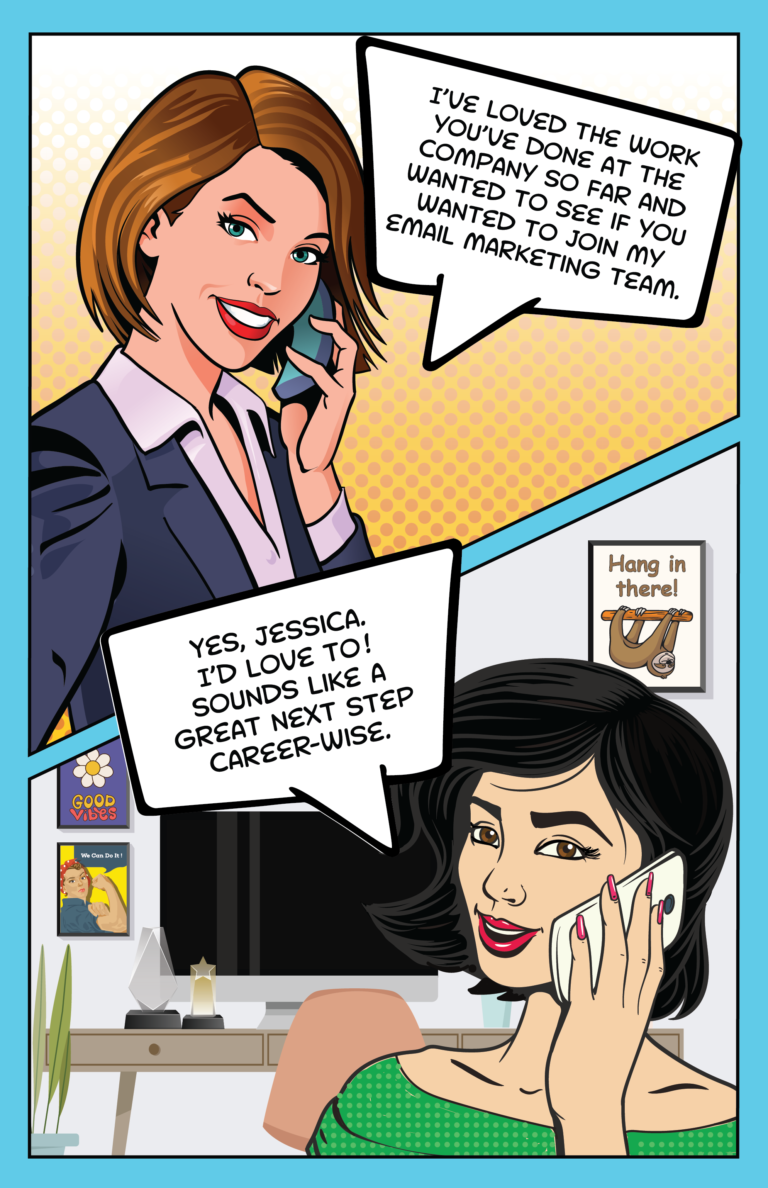
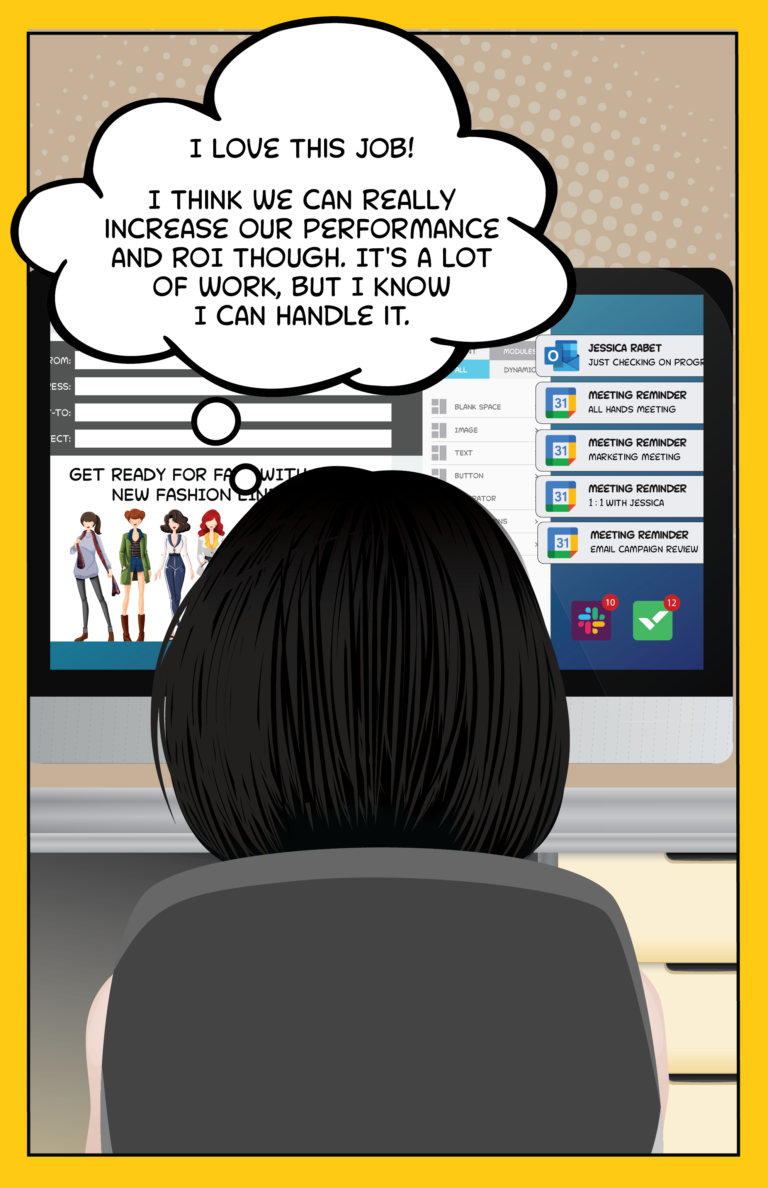
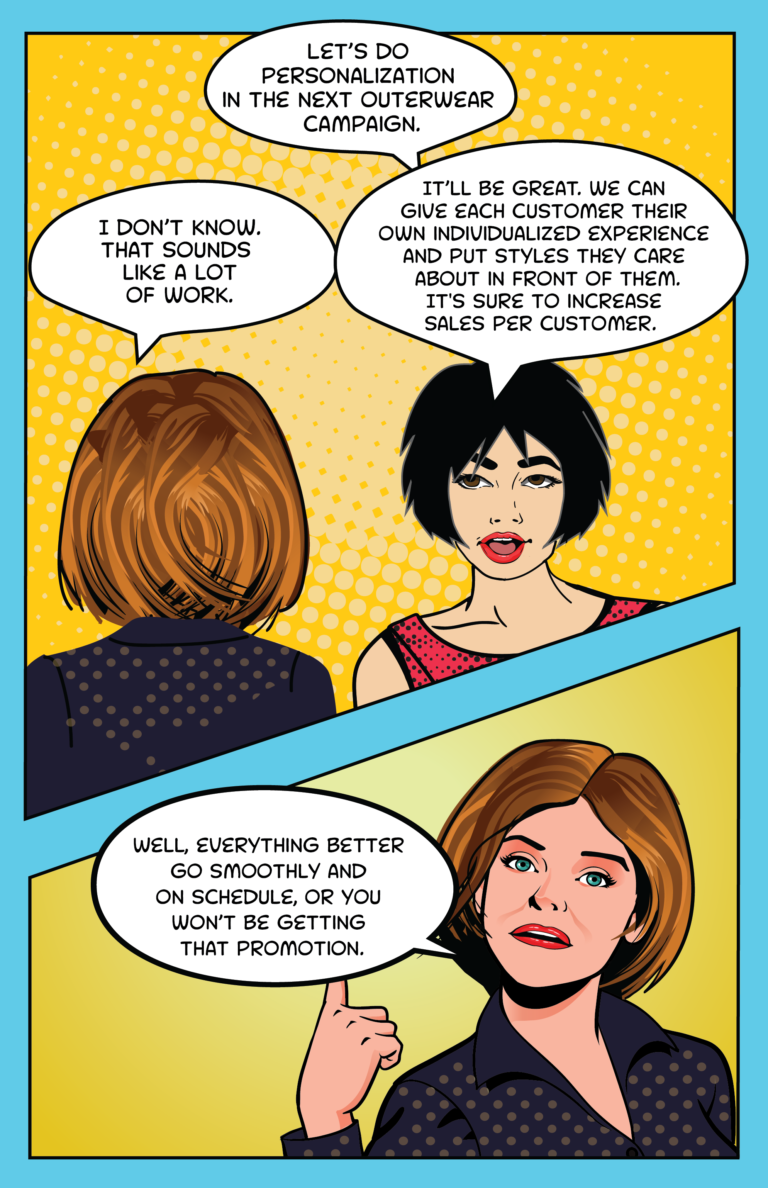
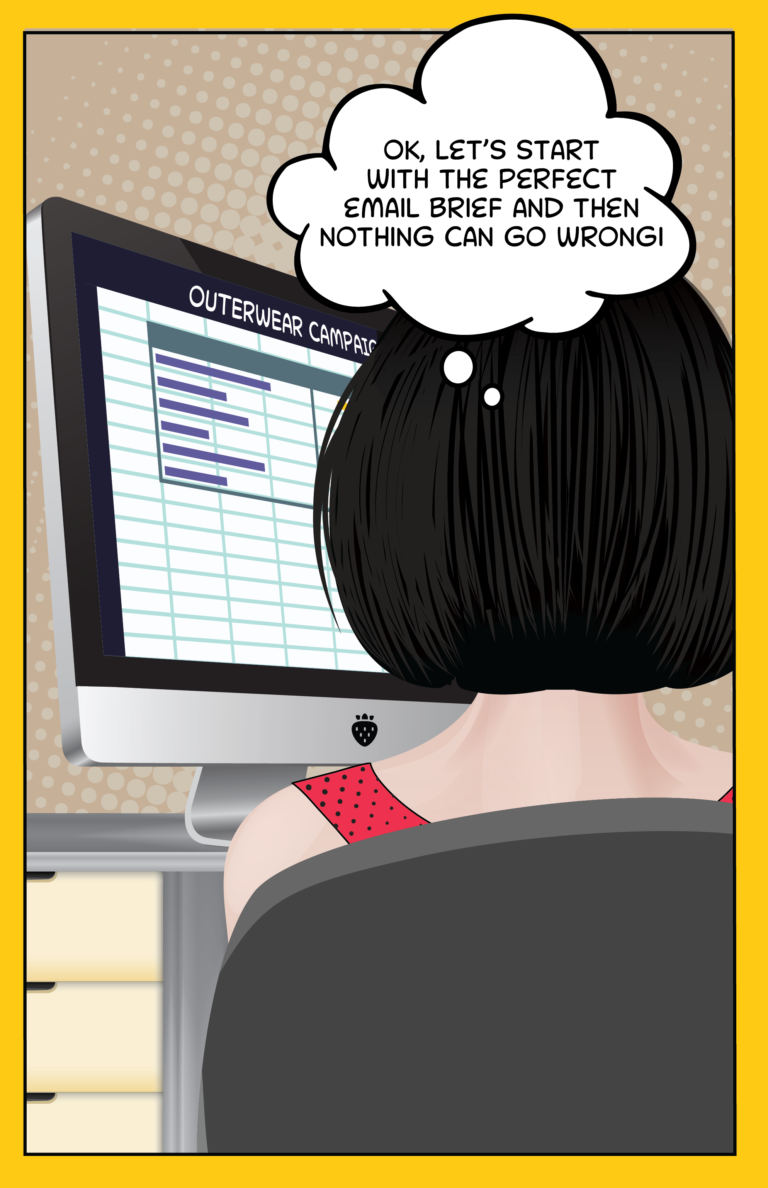
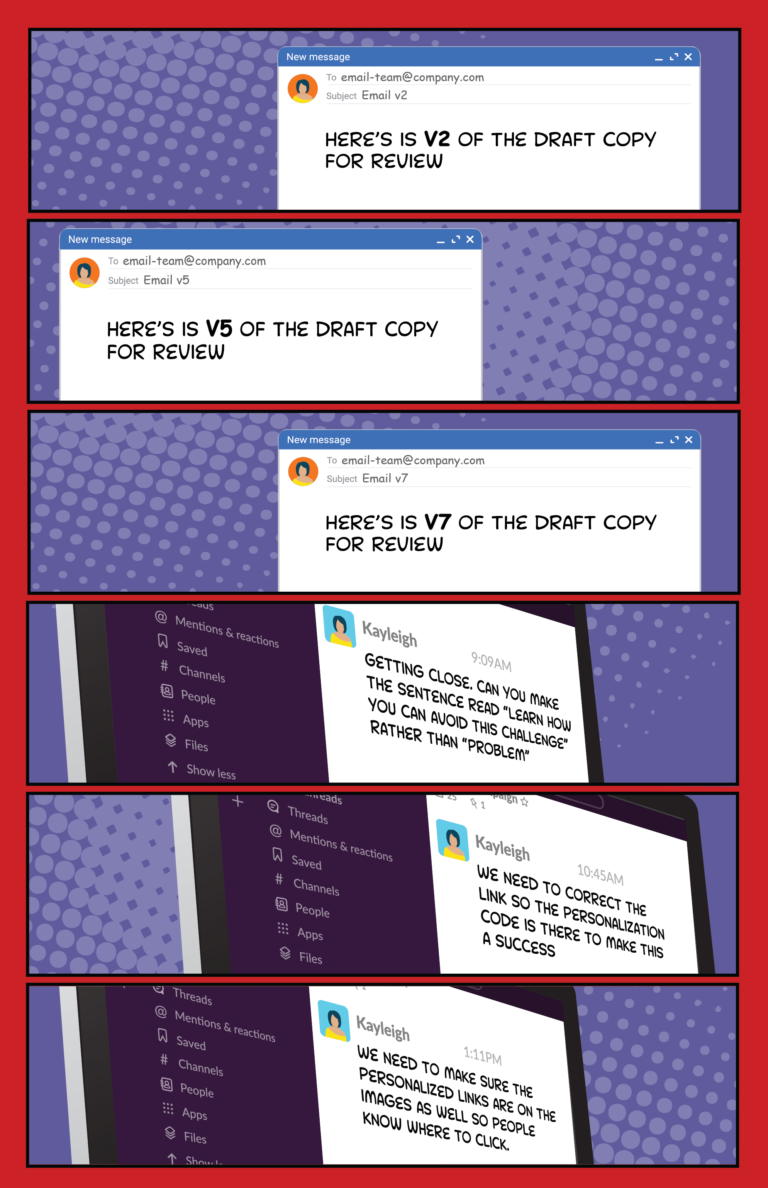
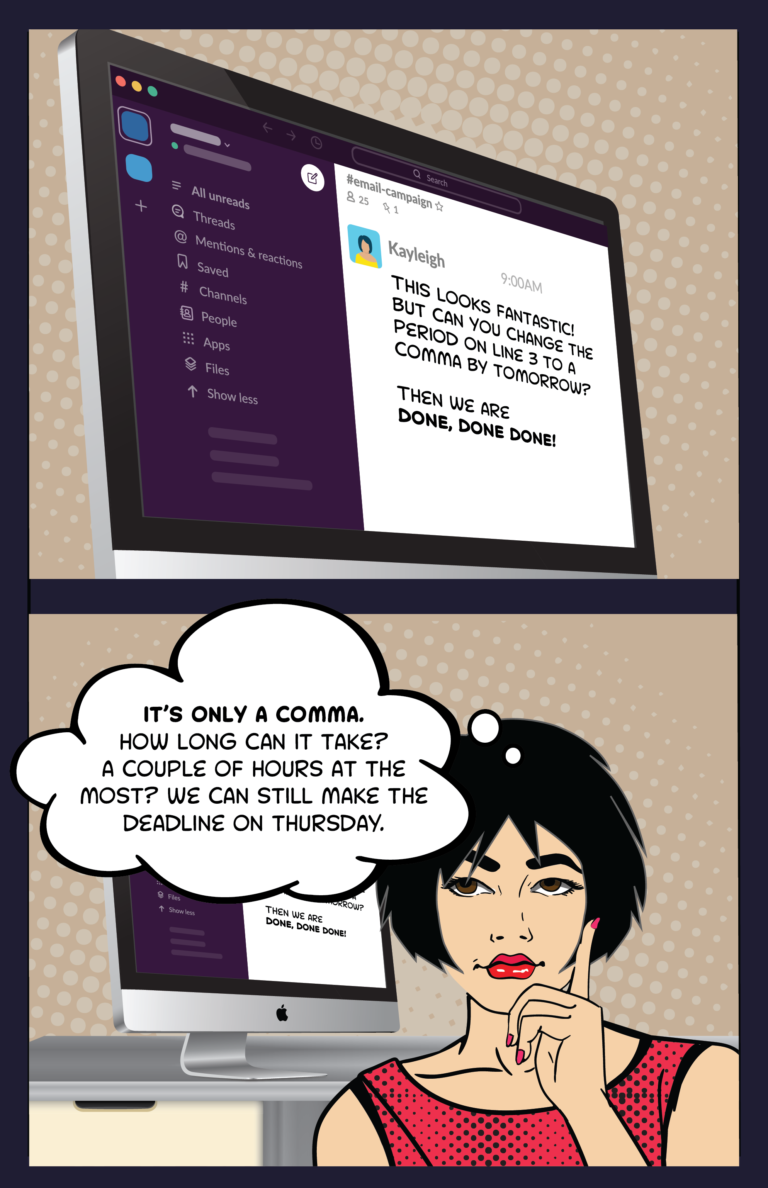
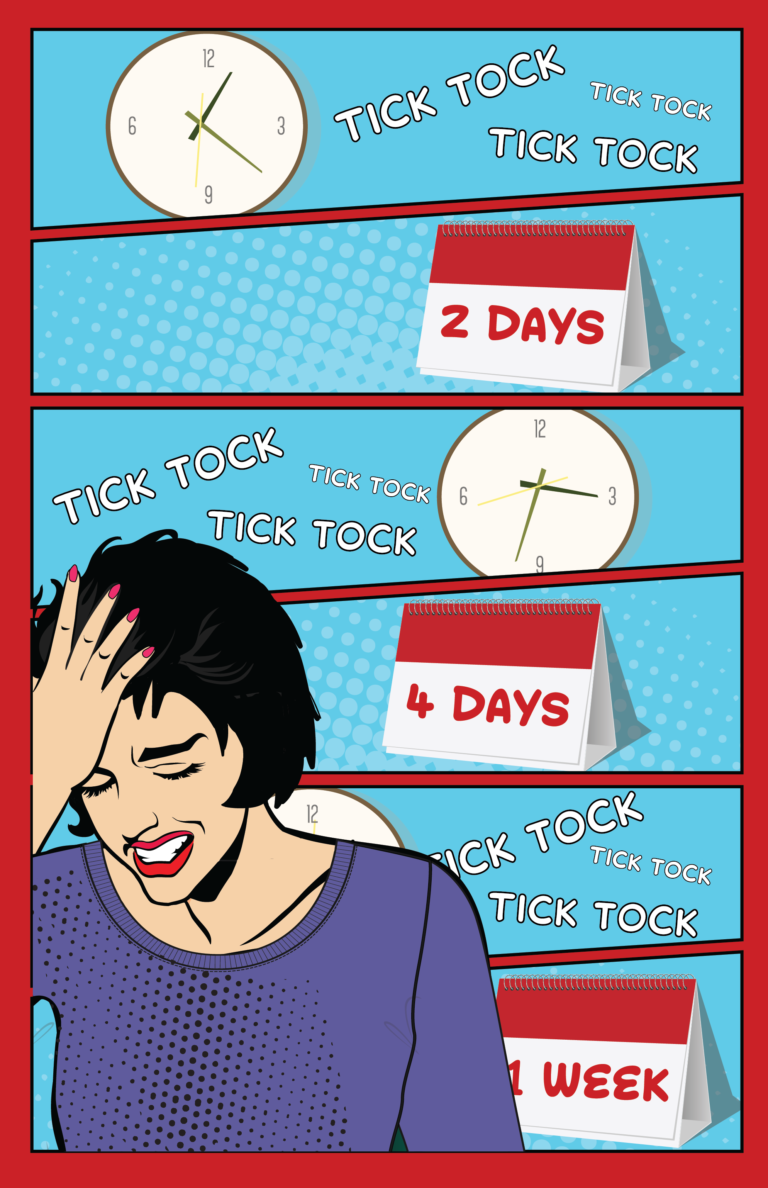
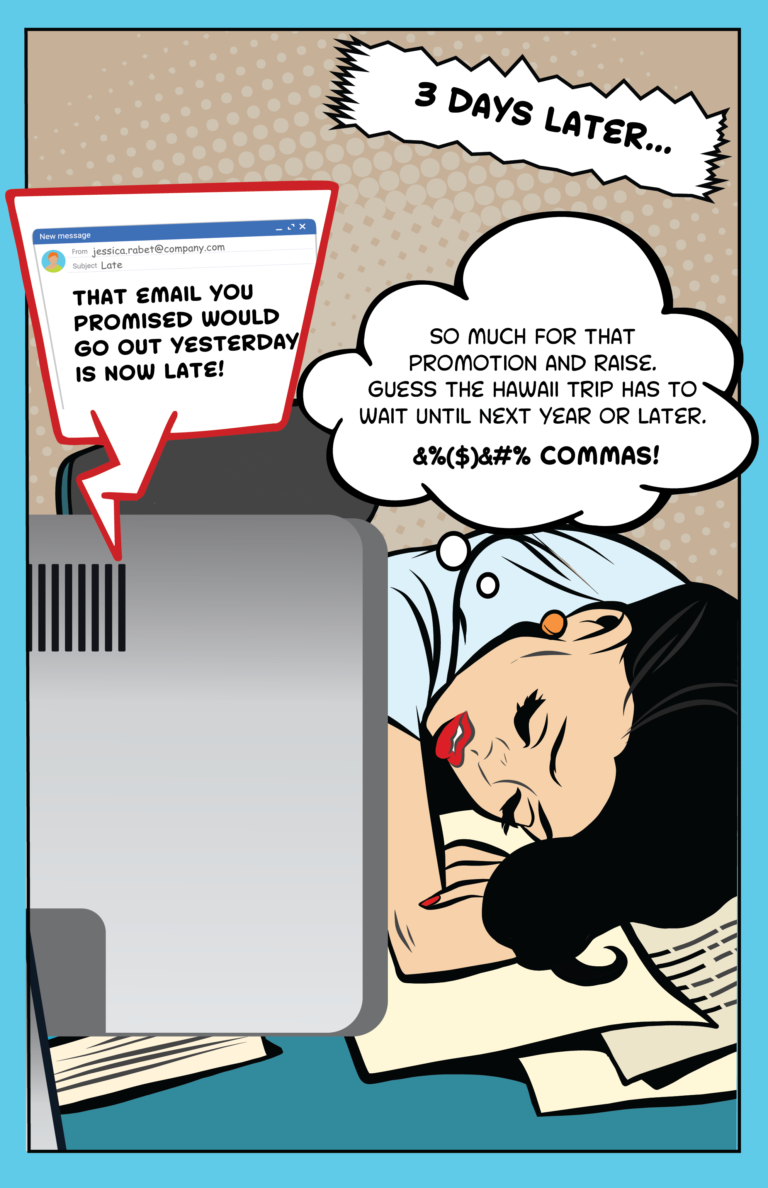



Kayleigh is amazing. There don’t seem to be any boulders blocking her path to achieving anything. From humble beginnings in the Midwest, she leveraged her stand-out running ability to get a track scholarship to her state’s university, where the experience of being an editor of her high school newspaper directed her to its highly-regarded school of journalism.
For Kayleigh, four years of college life flew by, with records set on the track and in the classroom. She next took herself to a big city daily newspaper, covering local politics. It didn’t take long for her to realize that while a noble profession, most journalists are not compensated well.
Kayleigh made the transition to public relations easily, as she manages to do in every circumstance. Once in a top-tier firm, she rose rapidly up the ranks, getting an up-close exposure to the marketing end of things through her digital media work with a well-known clothing brand.
In a surprise to no one, the CMO at the clothing brand liked what she saw in Kayleigh and asked if she wanted to shift gears in her career. And shift she did, signing on as a marketing manager developing strategies for digital communications campaigns, mainly email.
We find Kayleigh today, a marketing manager on the cusp of more responsibility and maybe a new title. She still operates at high speed and never lets them see her sweat, as the expression goes. From all outward appearances, nothing seems to rattle her. And that is a big deal, if only because the way they create emails at the clothing brand is far from quick or smooth. If anything, it’s a complicated workflow with plenty of places for an email creation process to get off schedule, way off schedule.
Kayleigh convinced her manager to increase the level of personalization in a series of emails that were moving through the creation workflow for the next outerwear campaign. Kayleigh’s manager, Jessica, initially balked at the idea primarily because she had gotten to where she was by playing the odds. That meant if there was a high likelihood of success, go for it. If not, mitigate the risk by steering clear of the potential for bad things happening.
However, after a series of heart-on-her-sleeve statements of assurance from Kayleigh, the risk-averse Jessica opted to risk it. Well, that’s not quite right. The risk was all Kayleigh’s. If the email series could not get created and deployed on schedule – without undue hassle – Kayleigh would not see a pop in salary and title for another year.
Kayleigh wasn’t born with a bone of doubt in her body. There was no way this email series wouldn’t get out on time. Or was there?
The review and approval process for the first email in the series, which had to get out on time, made its way to Kayleigh. Each time an email proof came to her, memories flooded her mind of that killer copyediting class given by Professor Donald Spencer. The course was all about editing paragraphs of stories before they were ready to be in the newspaper, littered with spelling, grammatical, and AP Deskbook Style errors. Lengthy sections had to be edited in minutes. If you didn’t get it done, the professor would utter the nickname given to him by students many years ago, “No excuses.”
Kayleigh would sit up a little straighter in her desk chair and say, “no excuses needed,” and race through the email proof, finding issues from header to footer. In mere minutes, she was done with it. Unfortunately, the review process involved several others who were not as skilled or speedy as Kayleigh when reviewing an email proof. Any error meant the email had to go back to have the associated HTML code fixed.
Because Kayleigh was Kayleigh, she insisted on seeing every email proof before it had gotten to the “final final” stage. This time, the “near-final” proof had everything right, or so it seemed.
In the middle of the third paragraph, Kayleigh saw a period mark that should have been a comma. It had to go back to the coder. Kayleigh thought, “no big deal, it’ll get done in a snap.” Maybe the snap was from a snapping turtle because all progress slowed. The developer handling this email had been moved over to another task deemed strategically imperative.
To be sure, Kayleigh was unhappy, especially when she learned it was unclear when that period mark would be changed to a comma.
Kayleigh took a quick walk to the break room to grab a well-chilled can of seltzer. On the way back to her desk, the can of bubbling water was rapidly warming. Kayleigh may not have let them see her sweat, but she was getting hot inside and anxious.
She drank the contents of the can in a couple of swigs, then slammed it on her desk hard enough to startle a couple of folks nearby. Back straight, shoulders back, she sat on the edge of the desk chair and said loud enough for those already startled to hear, “How long could it possibly take? What, an hour or two? I’ll still be good.”
It took three days before her wait was over for a comma, and so too was her raise and title promotion, at least till the following year.
Kayleigh was a victim of her hubris. More than that, though, she was a victim of an email creation process where bottlenecks are common, and nothing gets fixed quickly, even a period mark that needs to be changed into a comma.
She’d be a senior manager with a fatter paycheck had that clothing brand put a Stensul Email Creation Platform™ at the center of their email creation process. It allows adjustments to be made to an email proof by non-technical people, synchronously and in real-time. It provides a single environment that brings together all involved to streamline collaboration and simplify email creation, eliminating much of the back-and-forths so common, and time-consuming in other email creation workflows, even when Dynamic Content used for Personalization is involved as for Kayleigh.
If this tale of horror email creation strikes a little too close for comfort, let Stensul show you how to reduce your email creation times by up to 90% and prevent your Kayleigh’s confidence from crashing.
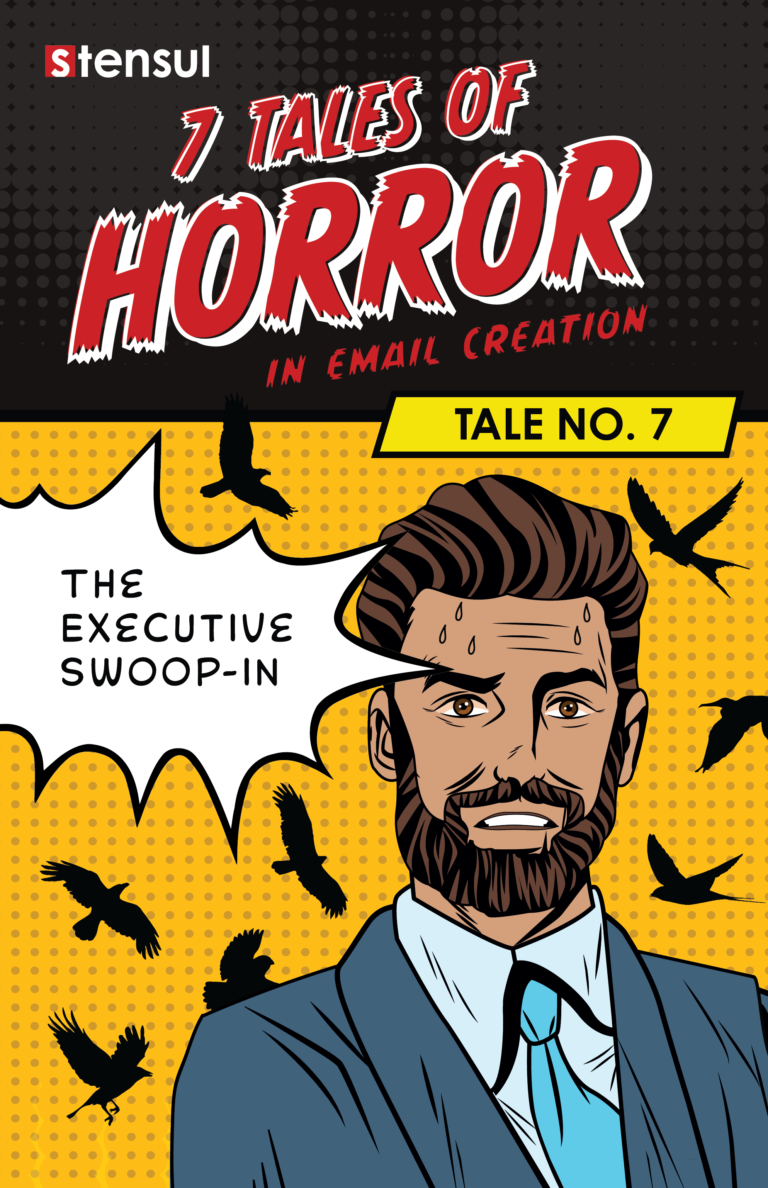
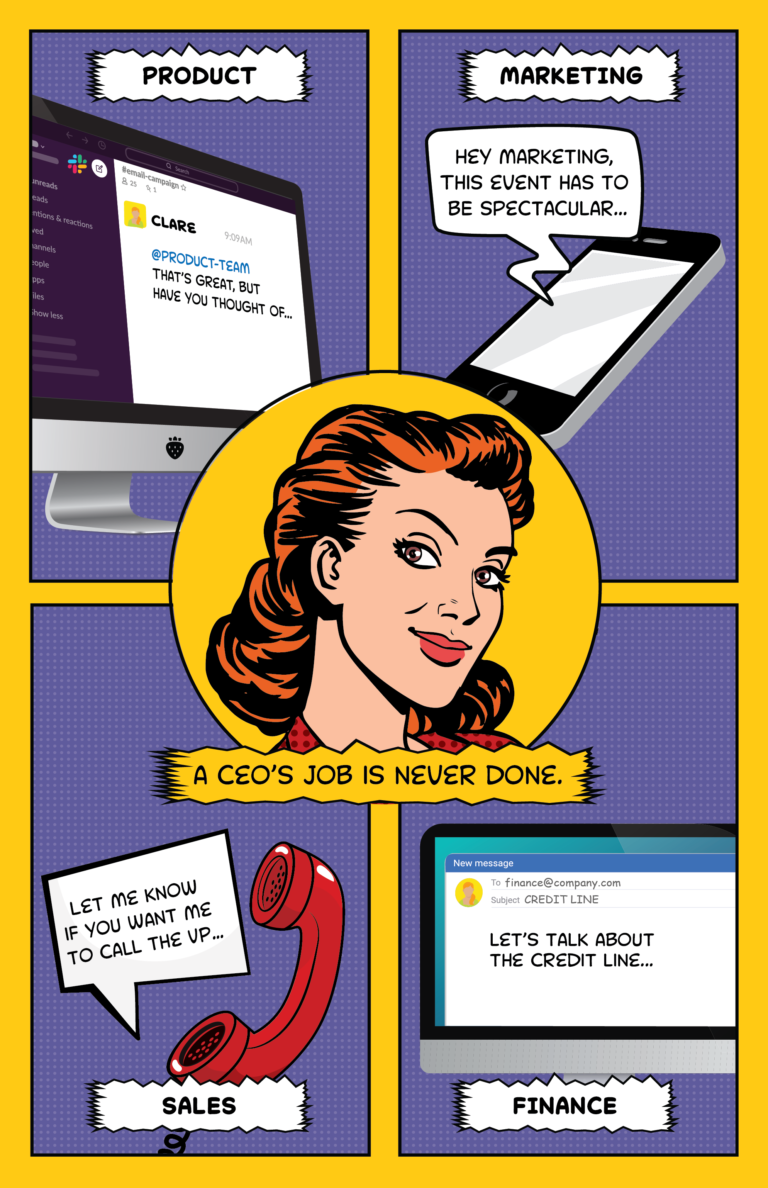
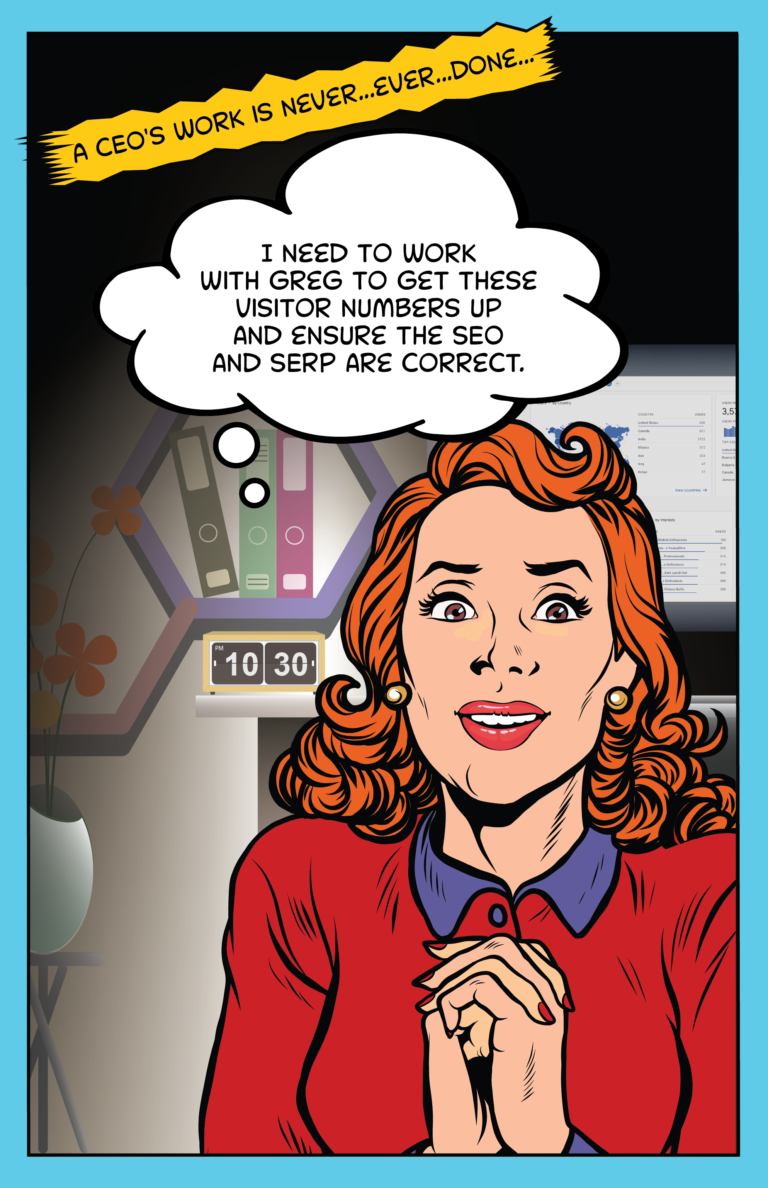
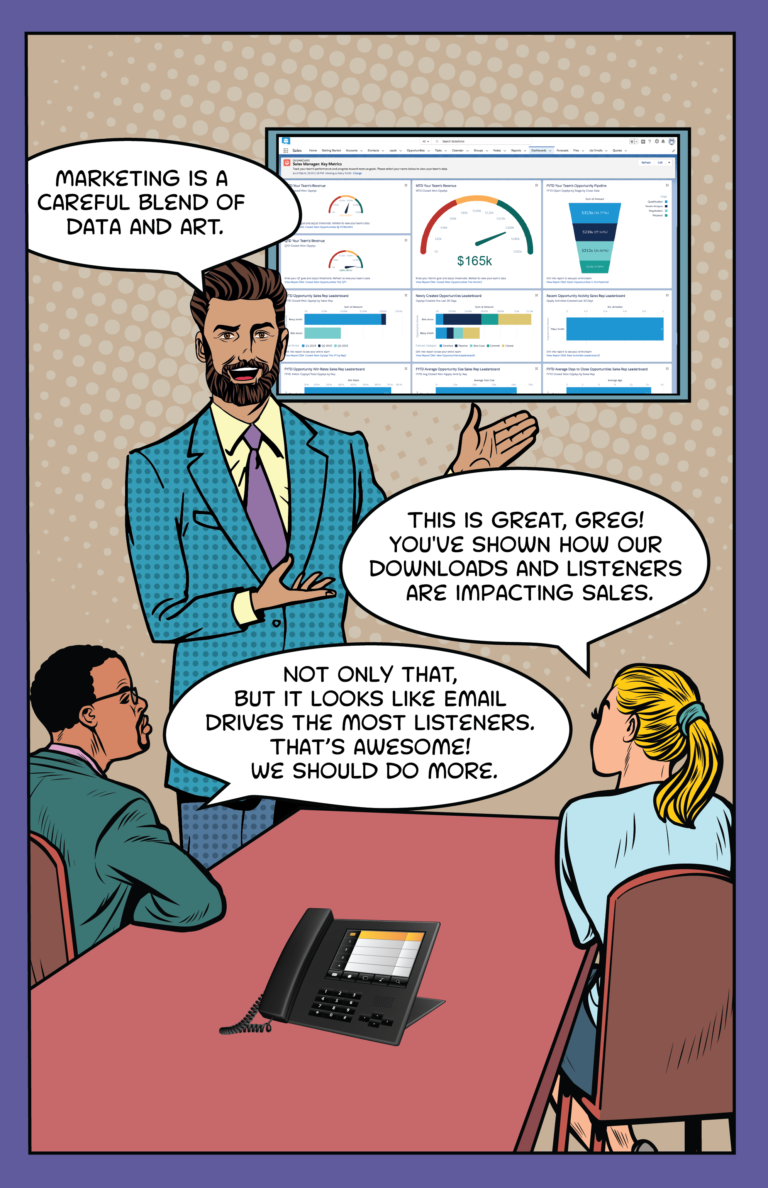
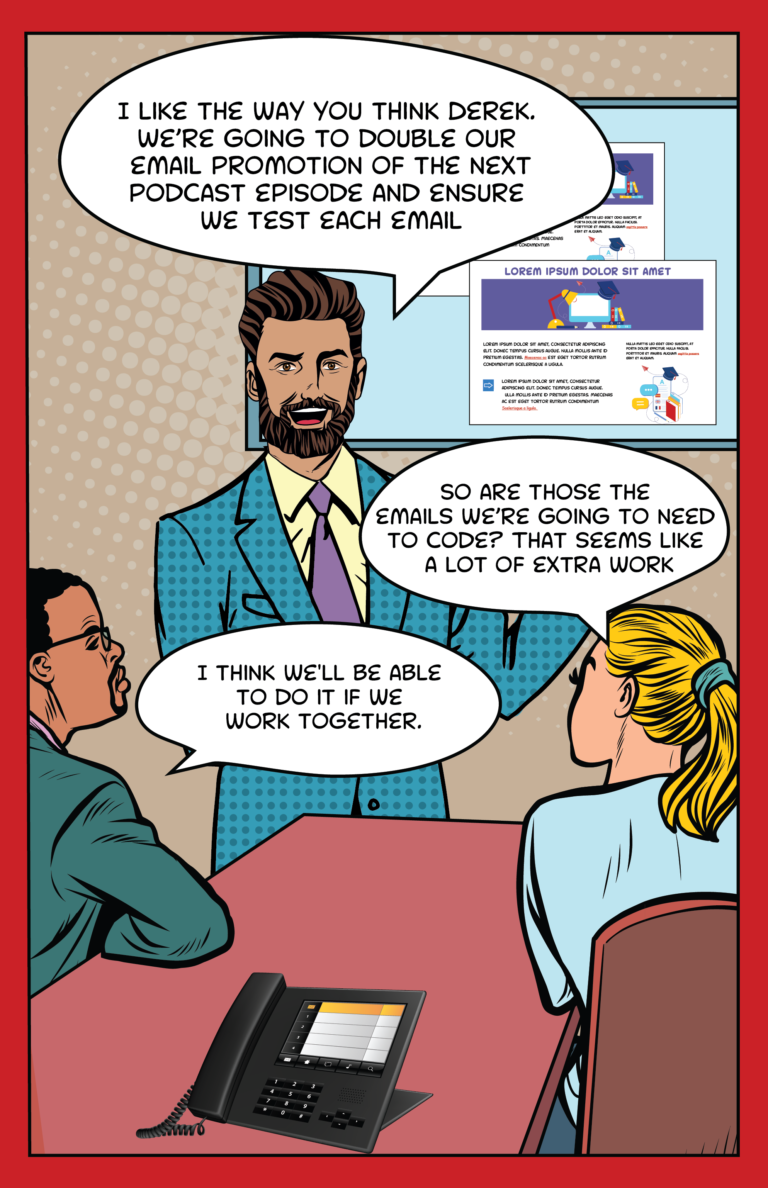
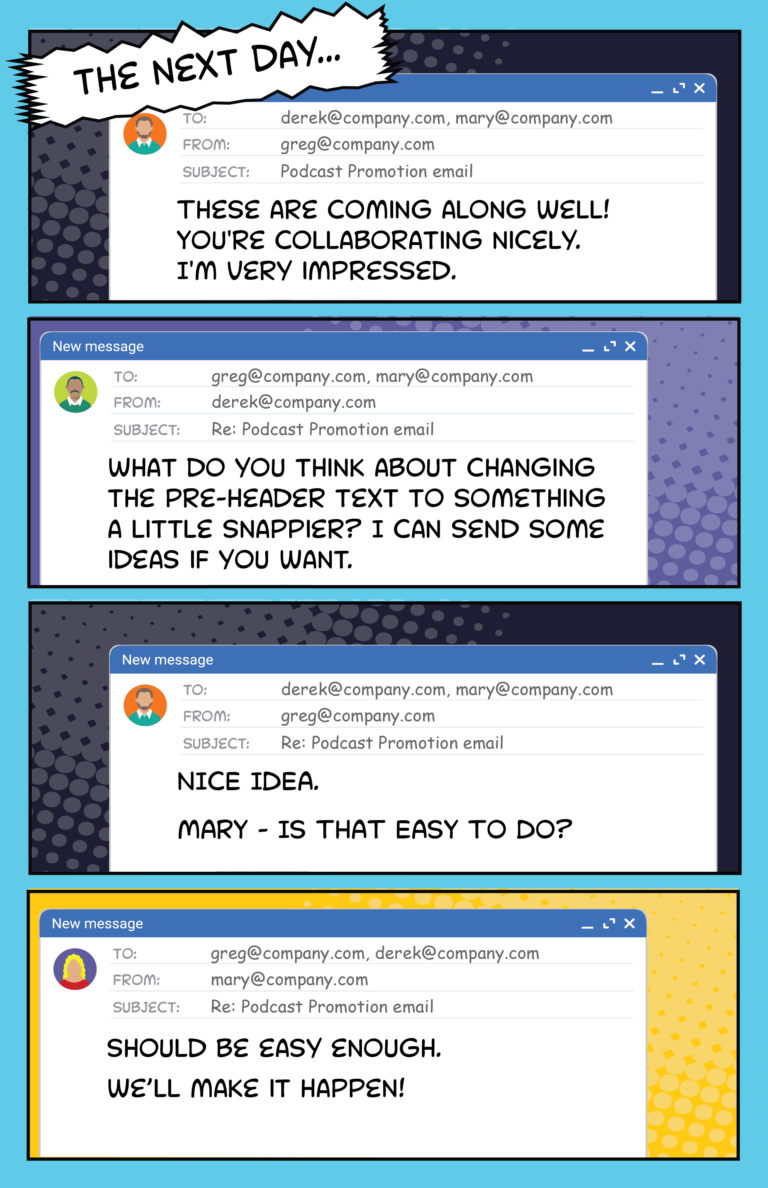
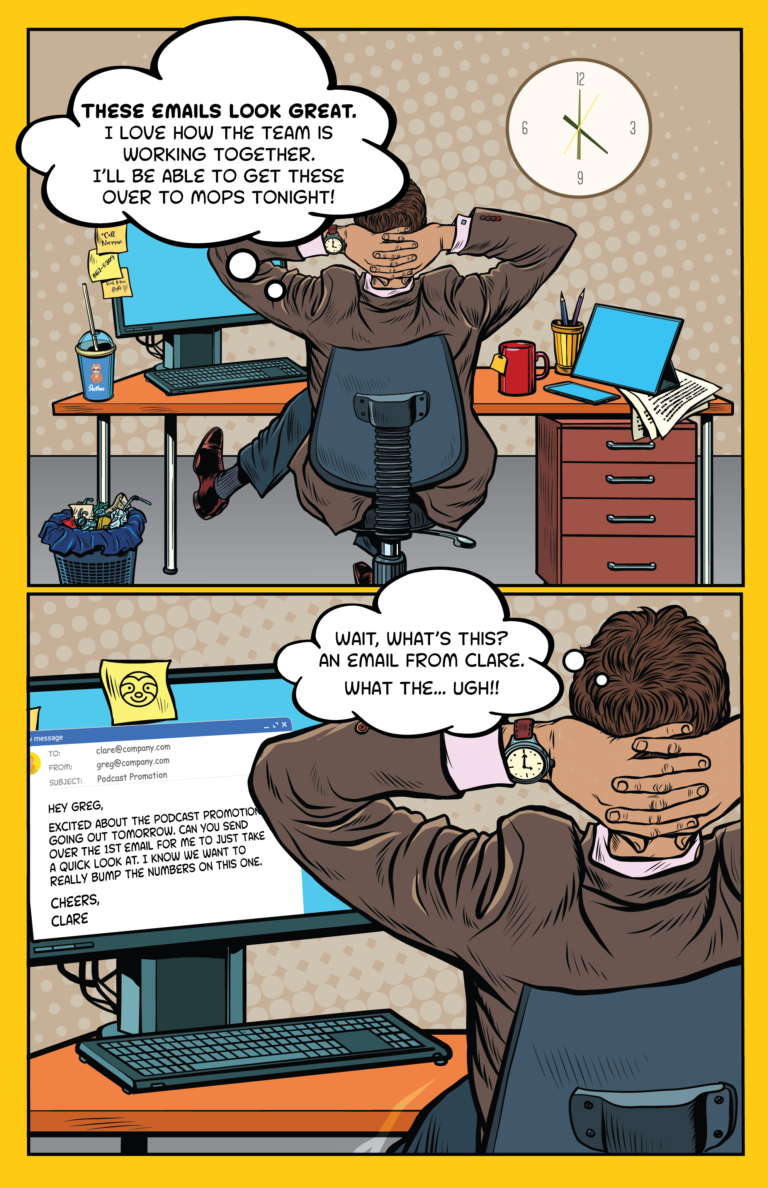
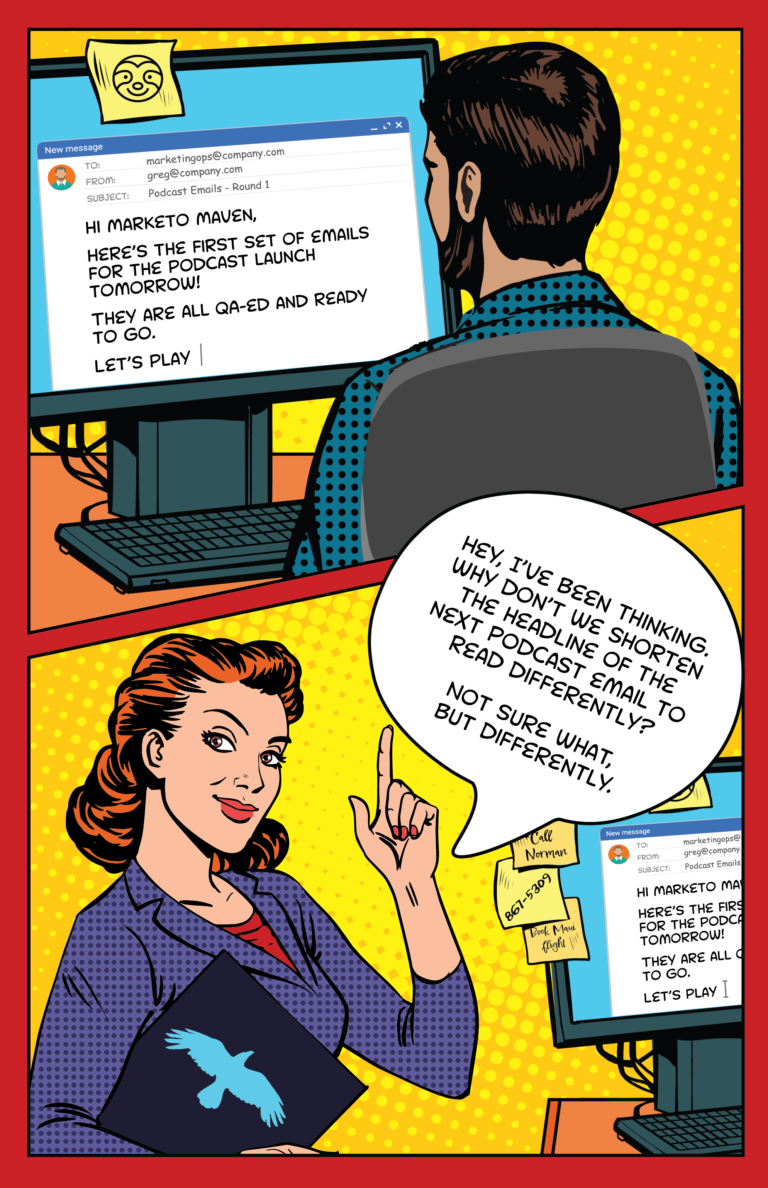
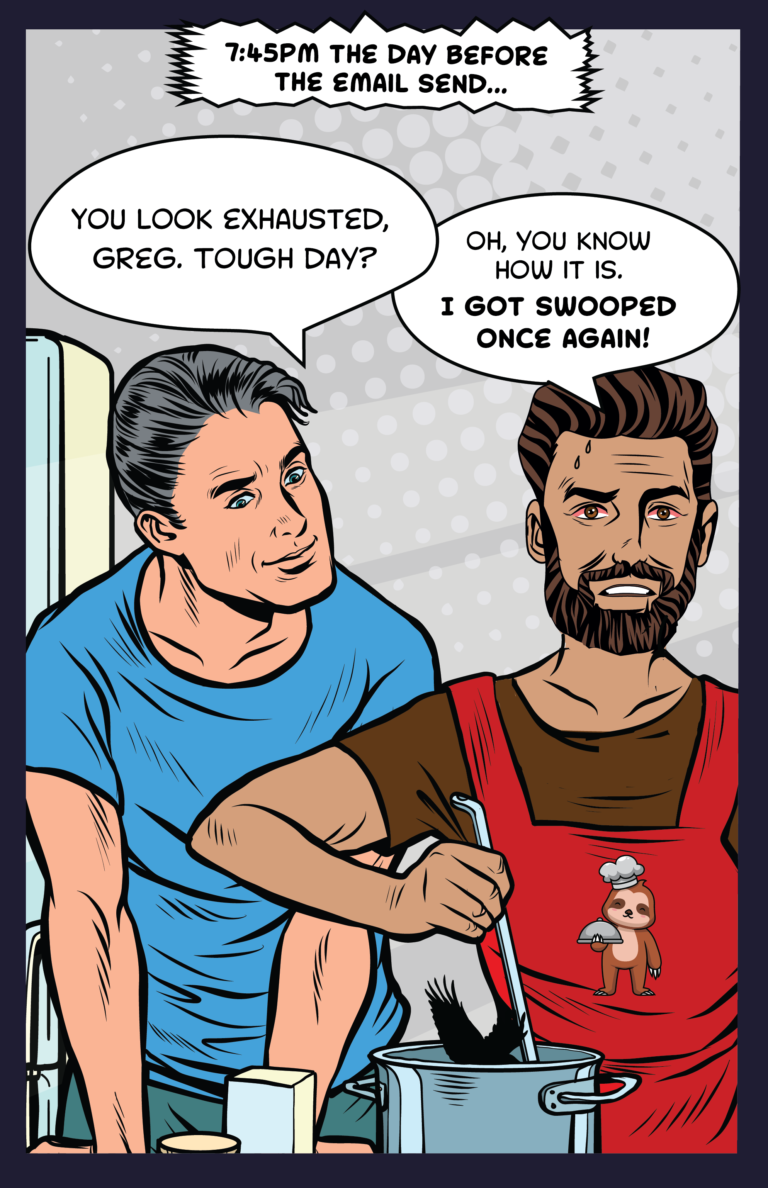



Clare is your prototypical Founder & CEO of a young company roaring on the fast track to monstrous revenue growth. She’s a constant blur of activity that can confound even the most even-tempered members of her leadership team.
Just when you think Clare is heading left, she suddenly shifts to the right. An uncanny ability to see the need for a change usually results in one sort of breakthrough or another. Yes, sometimes her propensity to pivot does not bring about what she envisioned, not even close. It’s something her management team lives with. Others in the company – especially those in the Go to Market (GTM) area – often deal with Clare’s mercurial nature.
The company that Clare formed and leads is an EdTech provider. They offer a project management platform aimed at the educational market; on its own, not new. There are numerous such platforms, many of which grew out of curriculum development, a process that has lots of people doing lots of things, often at different times, in different places. It all needs to be tracked and managed in a way that helps ensure the curriculum project gets done on time.
What makes Clare’s SaaS platform appealing, especially to the Go-to-Market (GTM) teams at high-growth companies or those poised for rapid expansion, is in sync with the way marketers think, the language they use, and, in particular, the nature of the work they do.
Some think Marketing is simply about coming up with ideas for programs to engage prospects, then moving them through a journey that ends with their buying the product or service. At a basic level, the idea is important, but if it doesn’t make an impact, it doesn’t matter how inventive or crazy it is. It needs to work.
For the uninitiated, the level of discipline required for a Marketing effort to succeed can be eye-opening. Greg, the head of Marketing at Clare’s company, says, “it’s a careful blend of dreams and data.” He’ll launch Salesforce and show an array of metrics being tracked on a near-constant basis to underscore his point. His face brightens just looking at the dashboard, even if the number of downloads of the latest Podcast is less than anticipated.
Greg and his team create and issue a Podcast every month. Somehow they mastered the art and science of producing a Podcast that prompts the right people to listen to it, want to learn more, and talk with a salesperson.
Those podcasts are promoted through several marketing communications channels, none more effective than email. It leads the pack by a wide margin. There’s nothing better to find prospects and get them to act than email.
Even with a few hundred downloads per Podcast, Greg and his team won’t rest on the prior month’s performance. They’re constantly testing, from the wording of the email’s pre-header to the placement of the CTA button. They’re always looking to do better.
All that testing, even the planning for that testing, takes time, something they don’t have very much of due to how they create emails. Design-to-Code is the method used, a complicated, time-consuming approach that does not allow much wiggle room for last-minute changes. Emails produced in this way often take upwards of two weeks.
One aspect of Clare’s modus operandi that’s not been mentioned is a tendency to stick her nose into almost everything. It’s a reflection of the early days of the company. She probably had to have her hand in it if something needed to get done. That was then, and this is now. She’s got Greg, a hard-core professional marketer who’s put together a solid team that operates with speed and effectiveness, especially as it relates to creating emails that will drive prospects onto the road to becoming customers.
All was set to send the first in a series of well-devised emails to promote the company’s newest Podcast. Sensing all was ready to go, Greg began to type a Teams message to Marketo Maven, the heart-felt nickname for the team’s Marketing Operations manager. As Greg did with all previous times, he would type, “Play Ball! Let’s get that email sent!”
Clare swooped into Greg’s worktable in the fraction of a second between Greg typing the last exclamation point and clicking the send icon. A bit startled, Greg drew back his hands from the keyboard and heard Clare say, “Hey, I’ve been thinking, why don’t we shorten the headline of the next Podcast email to read differently. Not sure what, but differently.”
Greg’s eyes blinked rapidly. He was experiencing yet another dreaded Executive Swoop-In. He did his best not to let his facial expression indicate how flippin’ angry he was.
In fairness, some of Clare’s late-in-the-process “Hey, I’ve been thinking…” moments improve the emails, but not all that often. What they do is create unplanned work, done in a massive hurry. Sometimes, those efforts made in haste have ended as unforced errors that diminish the hoped-for performance of the emails and the Podcast episode associated with them.
It’s not that Clare isn’t part of the review process. On the contrary, she’s exposed to the email from its first proof. A characteristic of the Design-to-Code email creation method is the review and approval process has a bewildering amount of back-and-forth among those reviewing the emails. Clare, and executives like her, think in bursts. Something occurs to them – at the moment – and they need to address it then. Sometimes that happens very late in a process like the one to review and approve an email.
That’s when you see the Executive Swoop-in. It wreaks havoc for even the savviest of marketers.
When that happens, people like Greg will respond to the question – even from a well-meaning spouse – “How was your day?” by grumbling, “Please…don’t ask. Let’s just say I got swooped again.”
To be sure, it’s tough to change the ways of a Clare, a quintessential Executive Swooper. Adding to that is another reality, Greg, or anyone like him, won’t ever know when there’ll be an Executive Swoop-in. It happens when you least expect and can least afford it, like at the end of an email creation process.
The answer is to change the process overall. Stop using the bottleneck-prone Design-to-Code email creation process that is too complicated, takes too long, and costs more than it should.
Even with Clare swooping in, non-technical people on Greg’s team can create emails – and send them on time – with a Stensul Email Creation Platform™ at the center of the company’s email creation process. It brings all involved in the email creation into a single environment, so everything from design to approval can be done quickly and easily, regardless of how late the Executive Swoop-in occurs. And you know it will.
If this tale of horror email creation strikes a little too close for comfort, let Stensul show you how to reduce your email creation times by up to 90% and an Executive Swoop-in from a moment of horror to one of humor.
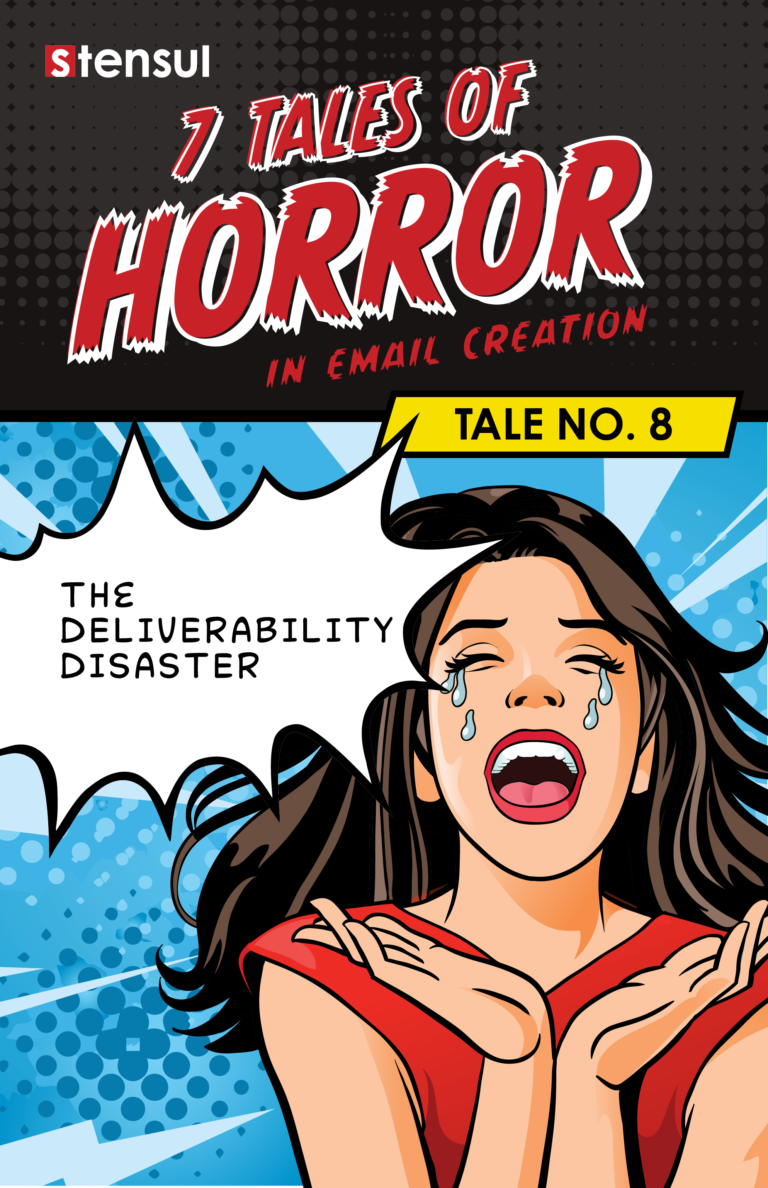
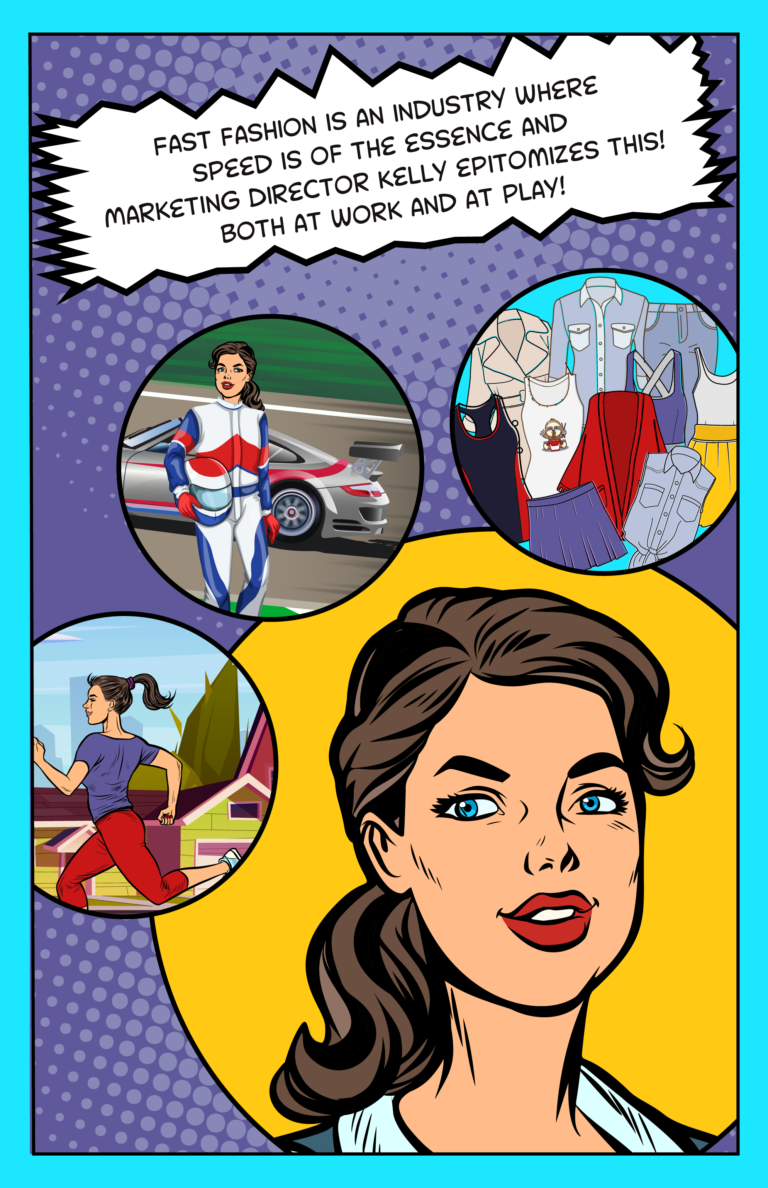
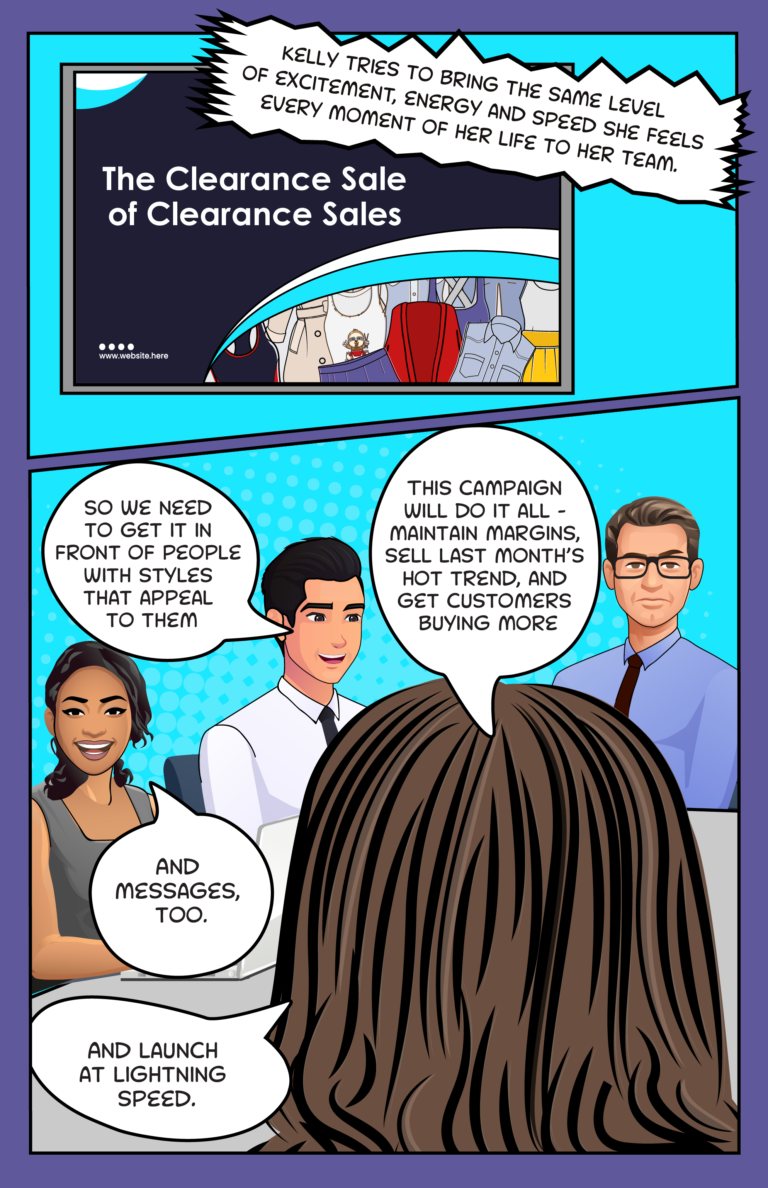
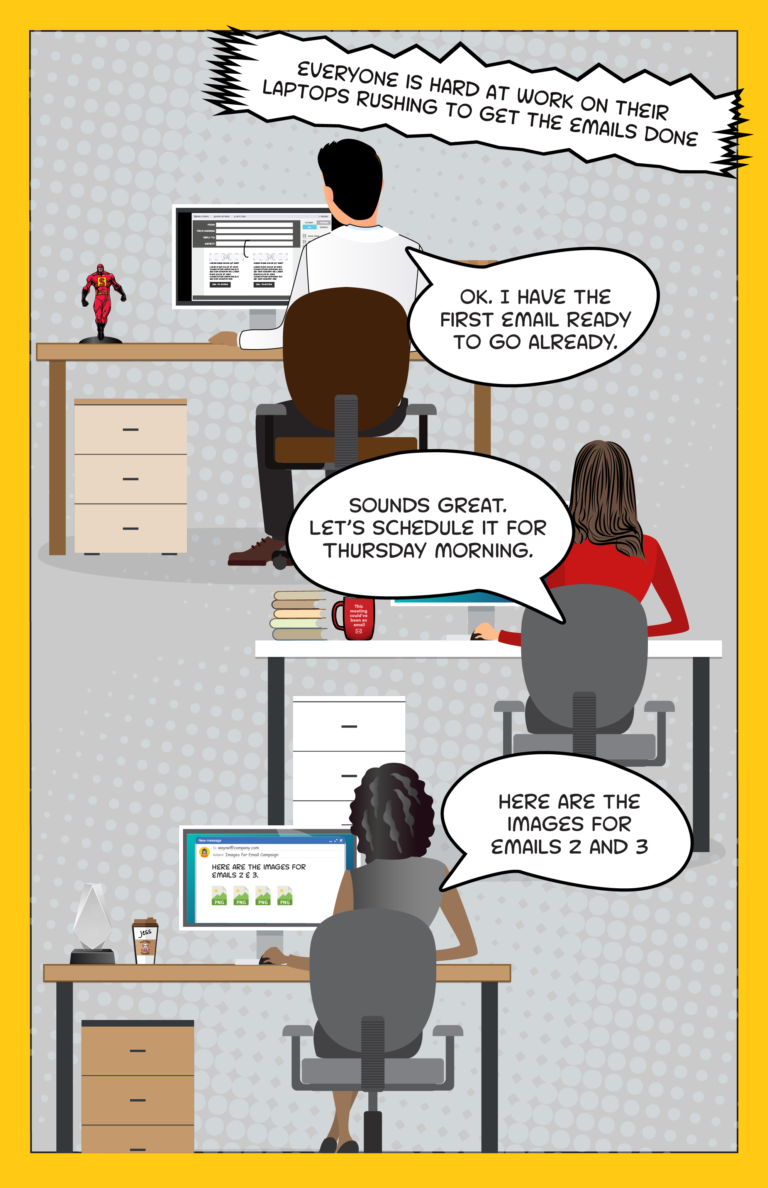
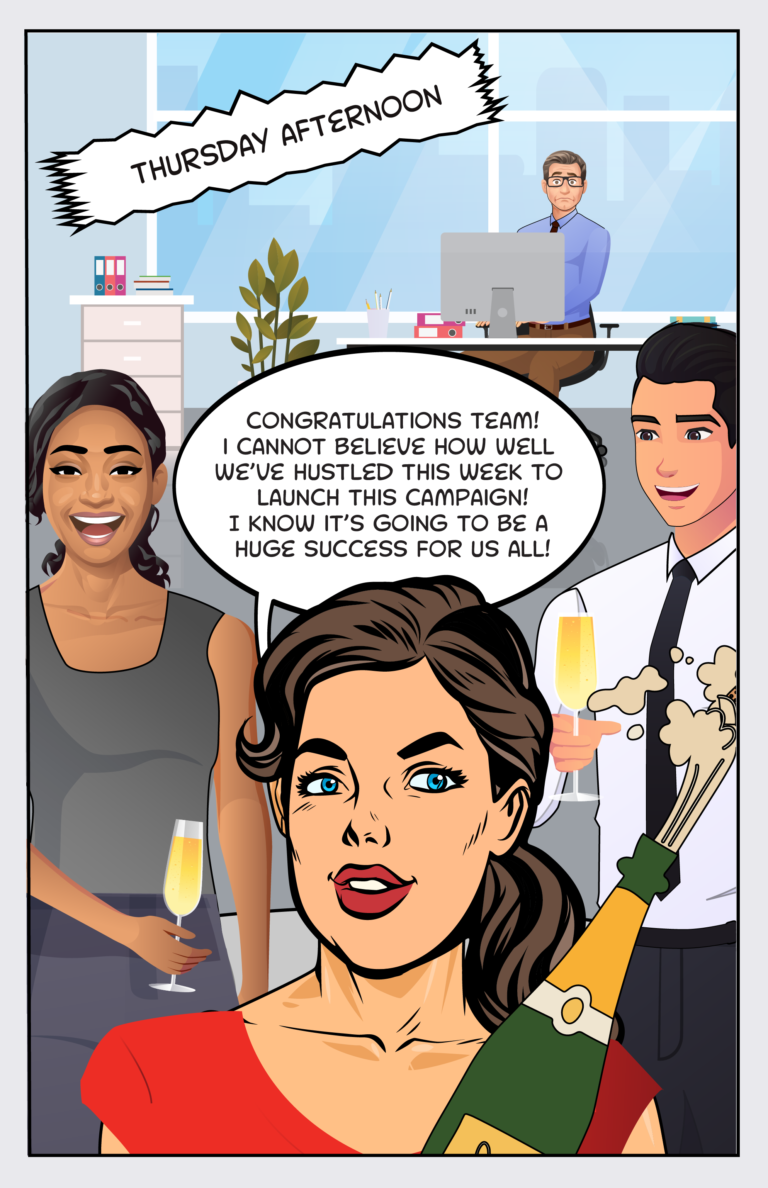
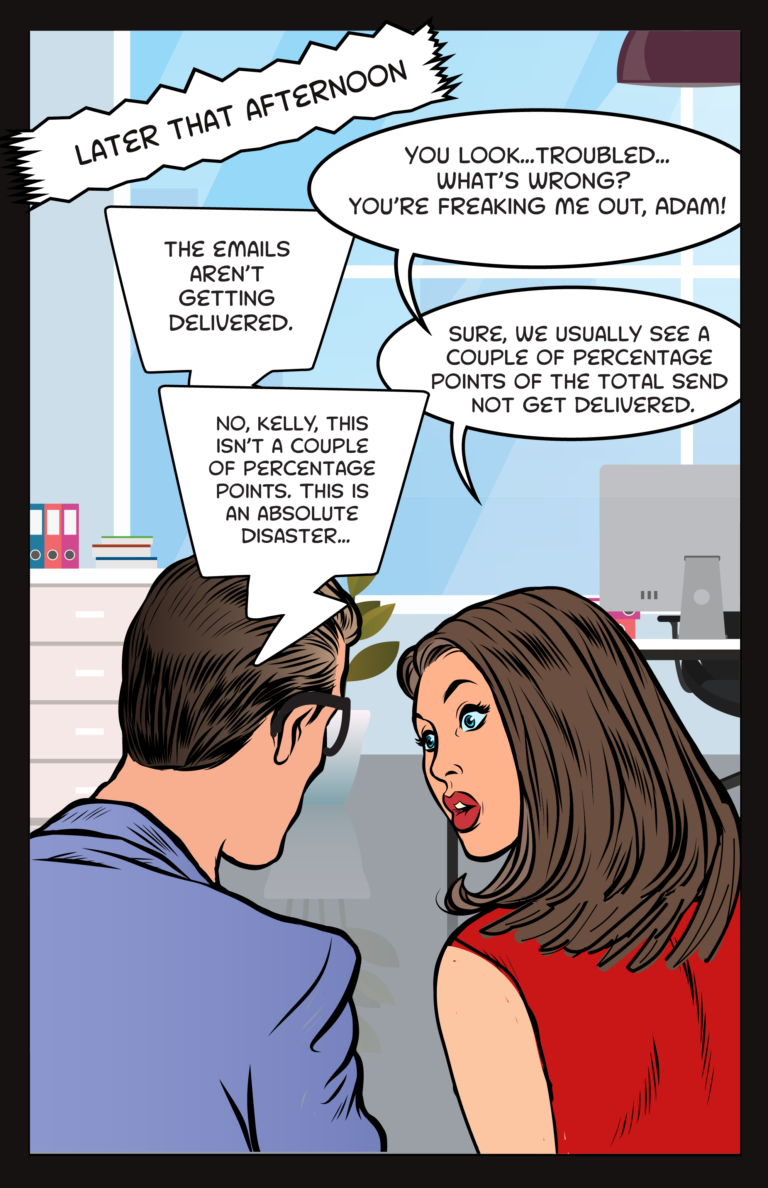
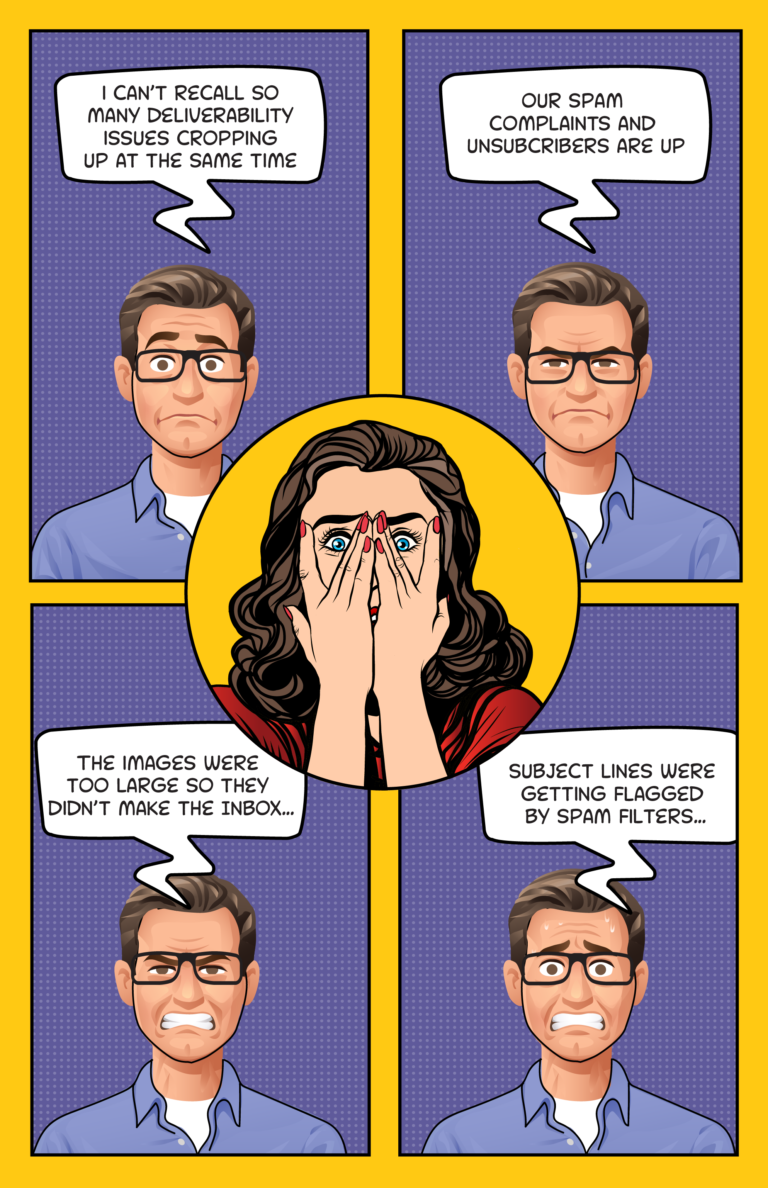
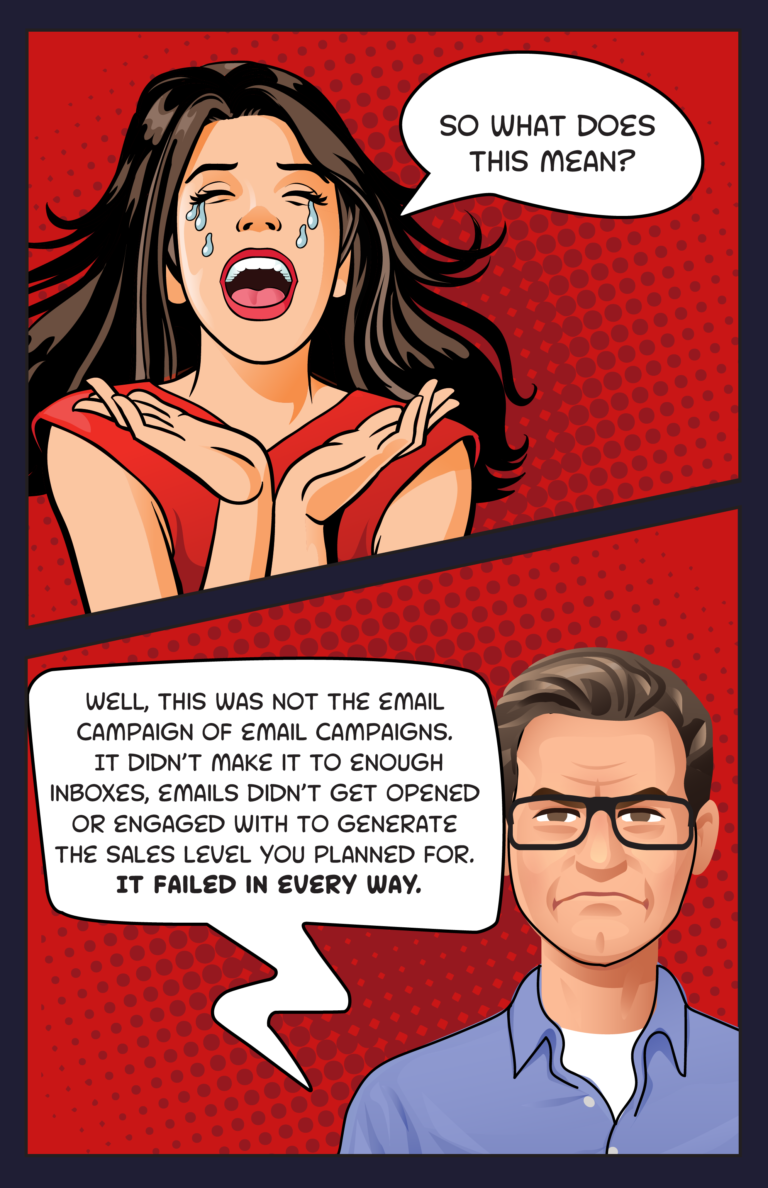
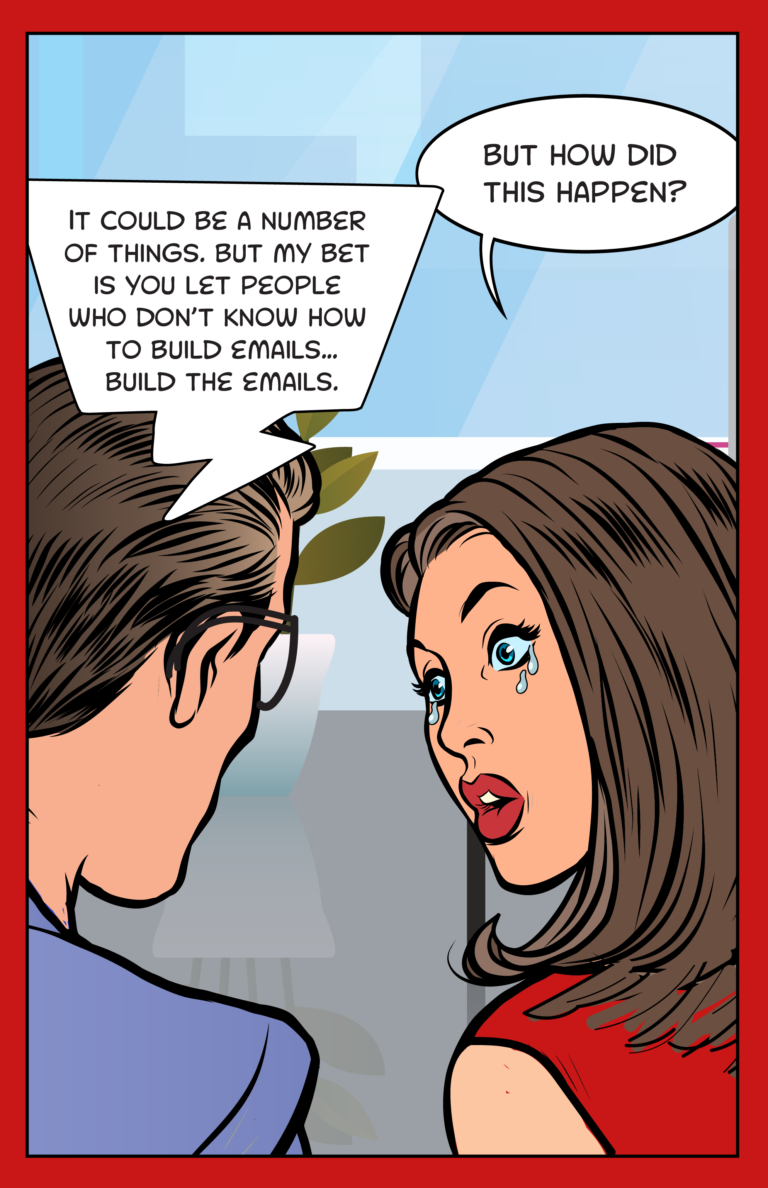



The world of fast-fashion operates at a frenetic pace. It’s also ultra-competitive as a handful of formidable brands battle each other for the fleeting loyalty of young people seeking to be oh so au courant on oh so little money.
It’s the kind of business that draws people who thrive on pressure and seemingly impossible deadlines. Few reflected that more than Kelly, a Director of Digital Marketing at one of the fastest growing fast fashion companies.
Her love of speed transcended much of her life. A stand-out sprinter on her college track team, she set records a few years back that still stand. A short-lived relationship with a boyfriend took things up a notch. He introduced her to the thrills of car racing. And, given her nature, Kelly went from enthusiastic spectator to an astounding driver of a sleek wheeled missile that flew around tracks across America. Not surprisingly, her employer was impressed enough – and saw the brand-building value – to be a sponsor of this high-octane activity.
Kelly was smart – street and book smart – with an unmatched ability to focus, be inventive and, without question, win. The checkered flag was something she went for in all situations, not just behind the wheel of her race car.
To her credit, that thirst for victory was infectious. Each member of her team was “all in” on whatever happened to be the project of the moment. It was really something to witness, especially their latest campaign, “The Clearance Sale of Clearance Sales.”
In the fast fashion business, the hot item of Monday can easily become the ice cold remainder of Wednesday. Because of that, managing inventory can be as nerve-racking as racing at speed on a rain-soaked race course. One mistake and you’re sent spinning out of control.
Even knowing the risks, Kelly and her team had created a multifaceted email campaign that was certain to clear out yesterday’s hot style – and do so profitably, without lessening the reputation of their brand.
When the initial wave of emails declaring “The Clearance Sale of Clearance Sales” was underway, Kelly had several bottles of well-chilled champagne brought to the center of the team’s workspace.
As corks popped and cheers were passed around, Adam was at the periphery of the celebration. Decidedly not fashion-forward, he stood there quietly, dressed in rumpled khakis and a shirt that was a size or so too large. While Adam looked a mess, when it came to data, he was exceedingly precise.
He rarely showed his emotions. Most who dealt with him appreciated his thoroughness in diving deep into the granular levels of just about any report but found his manner cold and mechanical. Many on the team referred to him as Automaton Adam.
There was something different this time. The revelry quieted down, people stopped dancing about – even Kelly, who stepped toward Adam and quietly asked, “you look…troubled…what’s wrong? You’re freaking me out, Adam!”
Adam looked straight at Kelly, took a long, slow breath, and said, “the emails aren’t getting delivered.”
Kelly, always about winning, replied, “sure, we usually see a couple of percentage points of the total send not get delivered.”
At the exact moment she finished saying that, Kelly saw something perhaps no one else had seen. Tears swelled in Adam’s blood-shot eyes. As the first tear rolled down his cheek, Kelly noticed his lips were quivering.
“No, Kelly, this isn’t a couple of percentage points. This is an absolute disaster,” Adam said with uncharacteristic emotion, his voice practically cracking.
Her facial expression had transformed from the usual cool serenity to what could only be described as bug-eyed shock. A quick look up – to some undefined source of spiritual support – Kelly then asked Adam, “how do you explain this.”
“I can’t,” he said. ”There’s so much going on that’s wrong. Overall, deliverability is way below our benchmark.”
On hearing that, Kelly’s fair complexion turned ashen. In barely a whisper, she asked Adam, “can you be more specific?”
“Where shall I begin,” Adam moaned. “Frankly, I can’t recall so many deliverability issues cropping up at the same time – as it is now – let alone to the levels I’m seeing.”
“Like what?” Kelly questioned.
“Our bounce rate is at least ten times higher. A larger than should be tolerated number of SPAM complaints have been received. And opens are well below what they ought to be.
Kelly looks to Adam with an unfamiliar look of fear across her face as she plops down in a nearby desk chair with posture that suggests defeat, the exact opposite of what she’s all about…winning.
She stammers ever so slightly and then says “I don’t understand…how…how…how did this happen?
Adam, who suddenly looked like the one in control, said, matter of factly, “well, Kelly, it could be a number of things. But my bet is you let people who don’t know how to build emails…build the emails.”
Kelly shot back, we had to, there wasn’t enough time!”
“That aside, the source of some of the deliverability issues can be assigned to bad list hygiene or compliance issues. Both contribute to emails not getting through. But I think, in this case, the fault lies with the emails.”
He continued, “I took a look at them. There were several instances of the words used, in both the body of the email and, yes, the subject lines were the sort that would get flagged and have the emails get caught in spam filters.
“What’s more, several had images that were simply too large, making them candidates for inbox rejection. And then there were the images that had text over them…something of a no-no,” Adam whispered.
Summoning what strength she had left in her body, Kelly, stood up from her chair, as straight as she could, with one hand on a hip and the other jabbing the air, said, “what does that mean?”
“It means “The Clearance Sale of Clearance Sales” was far from the email campaign of email campaigns. It didn’t make it to enough inboxes, emails didn’t get opened or engaged with to generate the sales level you planned for.
He paused…and realized it was Kelly whose eyes were now welling up with tears. The two stood in a room now silent and empty of people who, moments before, were high-fiving each other over their success.
It turned out to be something far different. It turned out to be a deliverability disaster.
Creating emails – either by hand-coding or using templates & modules – requires both skills and awareness of what ISPs or corporate mail services will allow. Those service providers try to protect the users of their email services from SPAM and worse. As a result, they have a variety of protections in place that require those sending emails to be in compliance – or experience some version of what Kelly did.
As Adam noted, the root of the problem was allowing under-trained individuals to build emails. Not only were they not able to create the emails properly, they had no knowledge of things like word choice, image size, text over images, and more. Inadvertently, Kelly created her own perfect storm of undeliverability.
If her company had the Stensul Email Creation Platform at the center of their process, the most novice email builder could produce a quality email that made it to inboxes and presented the brand’s way impactfully. The platform offers the blend of easy-to-use drag-and-drop creation plus robust guardrails into which every element of a company’s corporate branding and design policy and practice can be programmed. The likelihood of an email not being deliverable that’s created in Stensul is virtually zero.
More than that, Stensul can help with deliverability in these ways.
Those capabilities, and more, are integral to the Stensul Email Creation Platform™, a single environment that brings together all involved to streamline collaboration and simplify email creation. And avoid email disasters.

